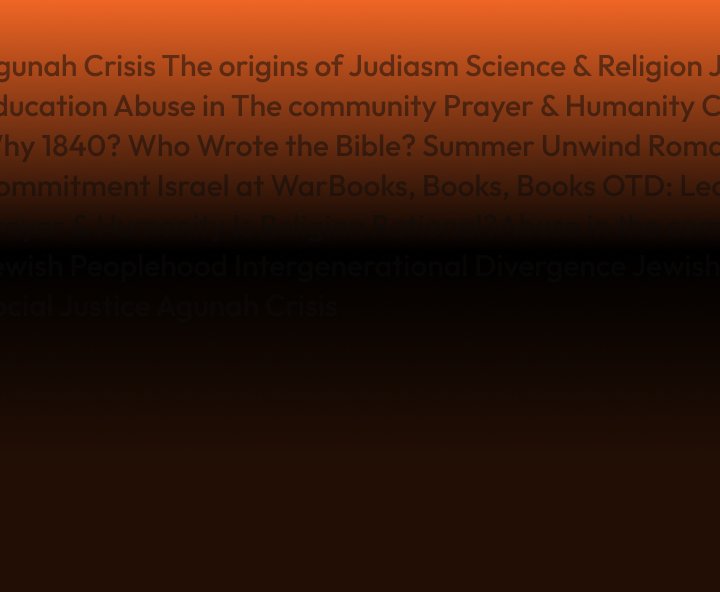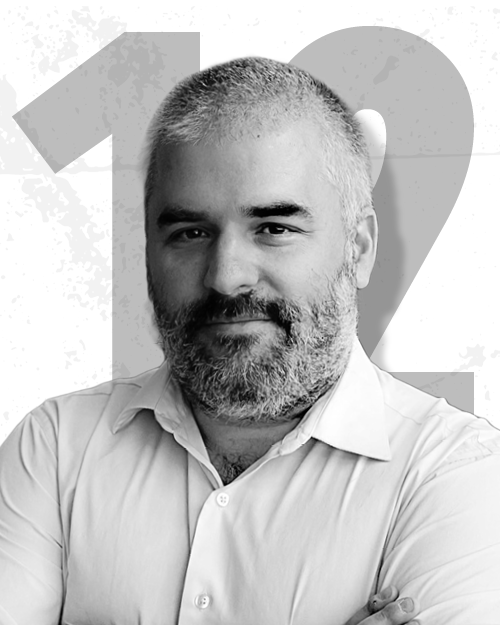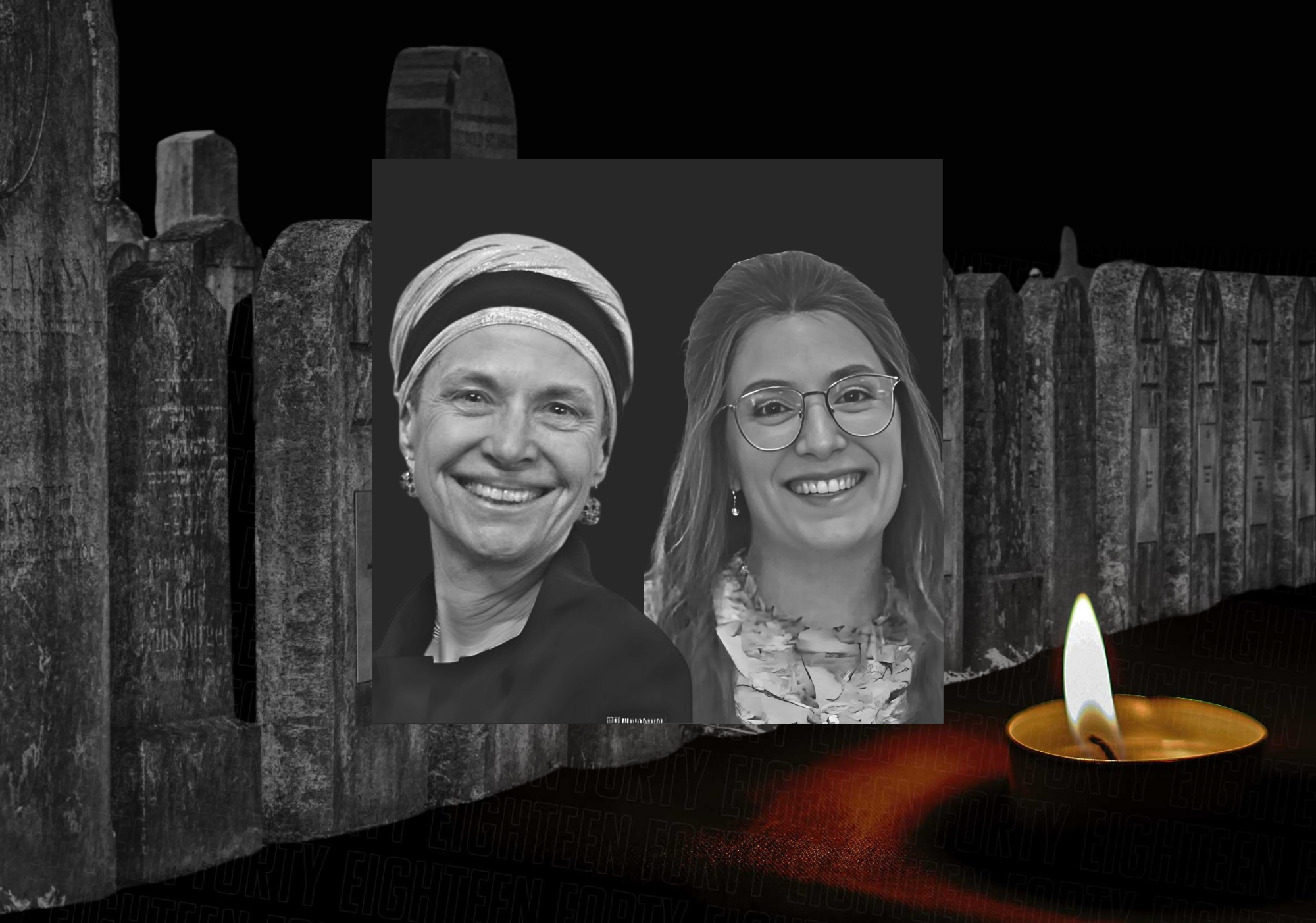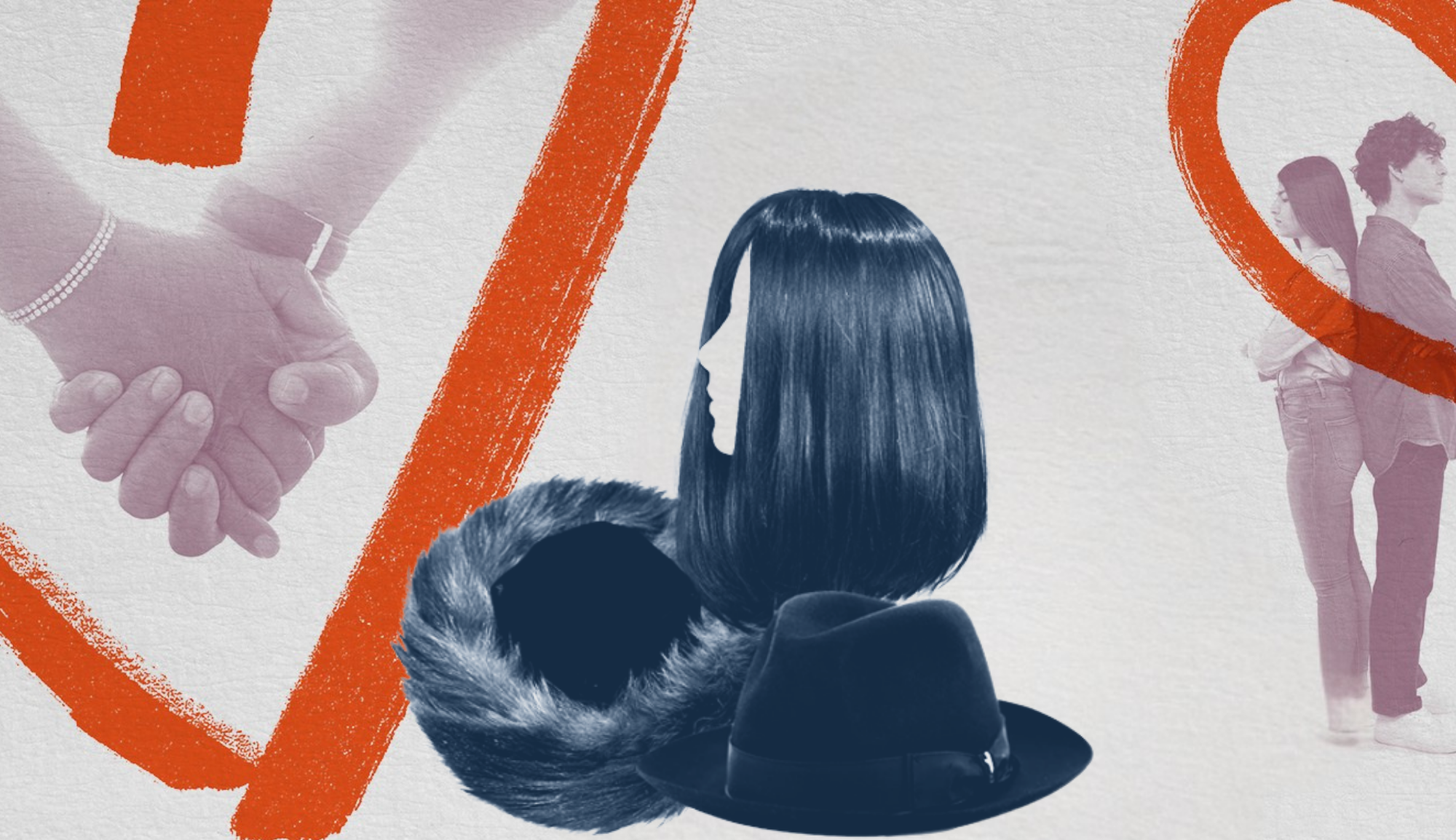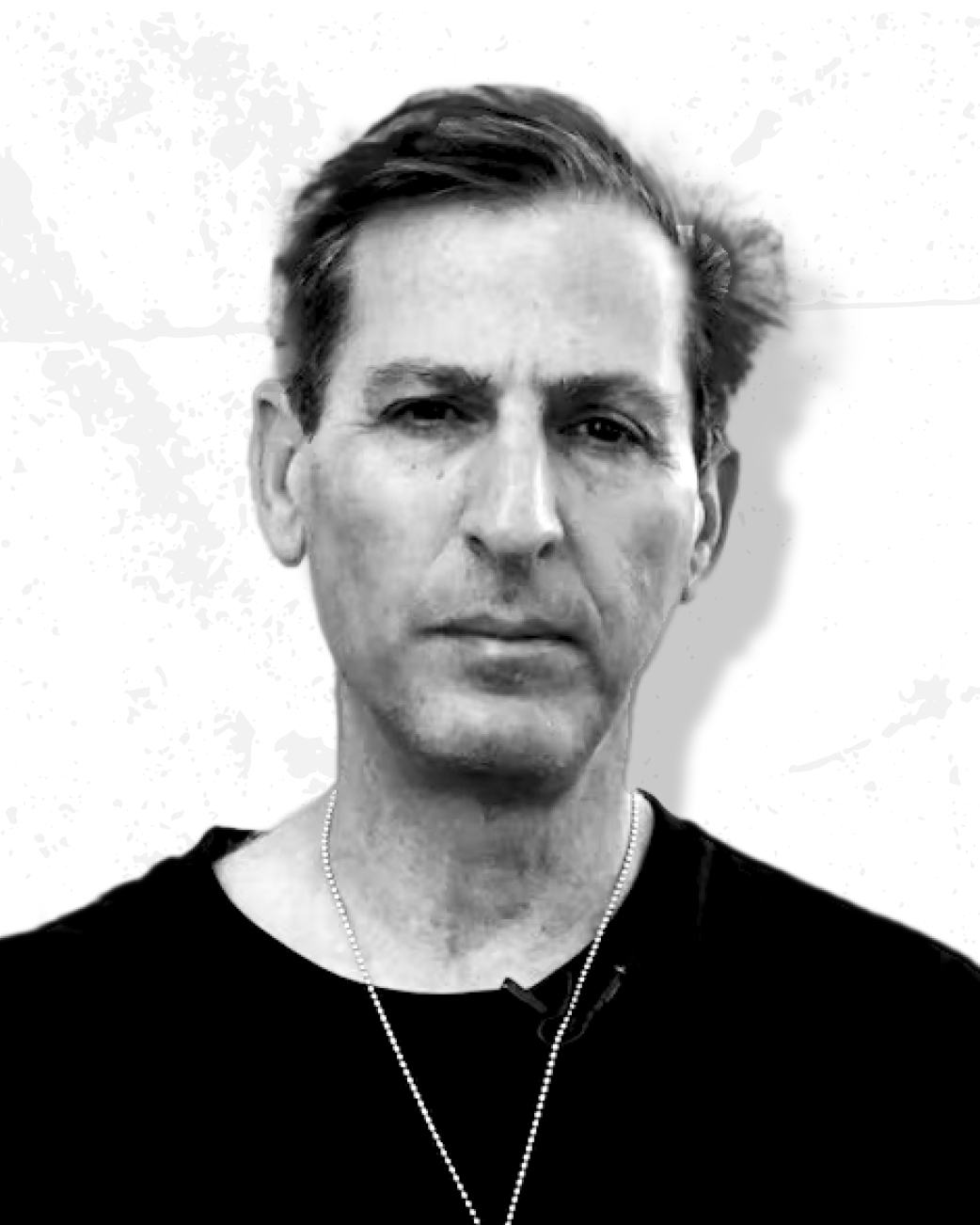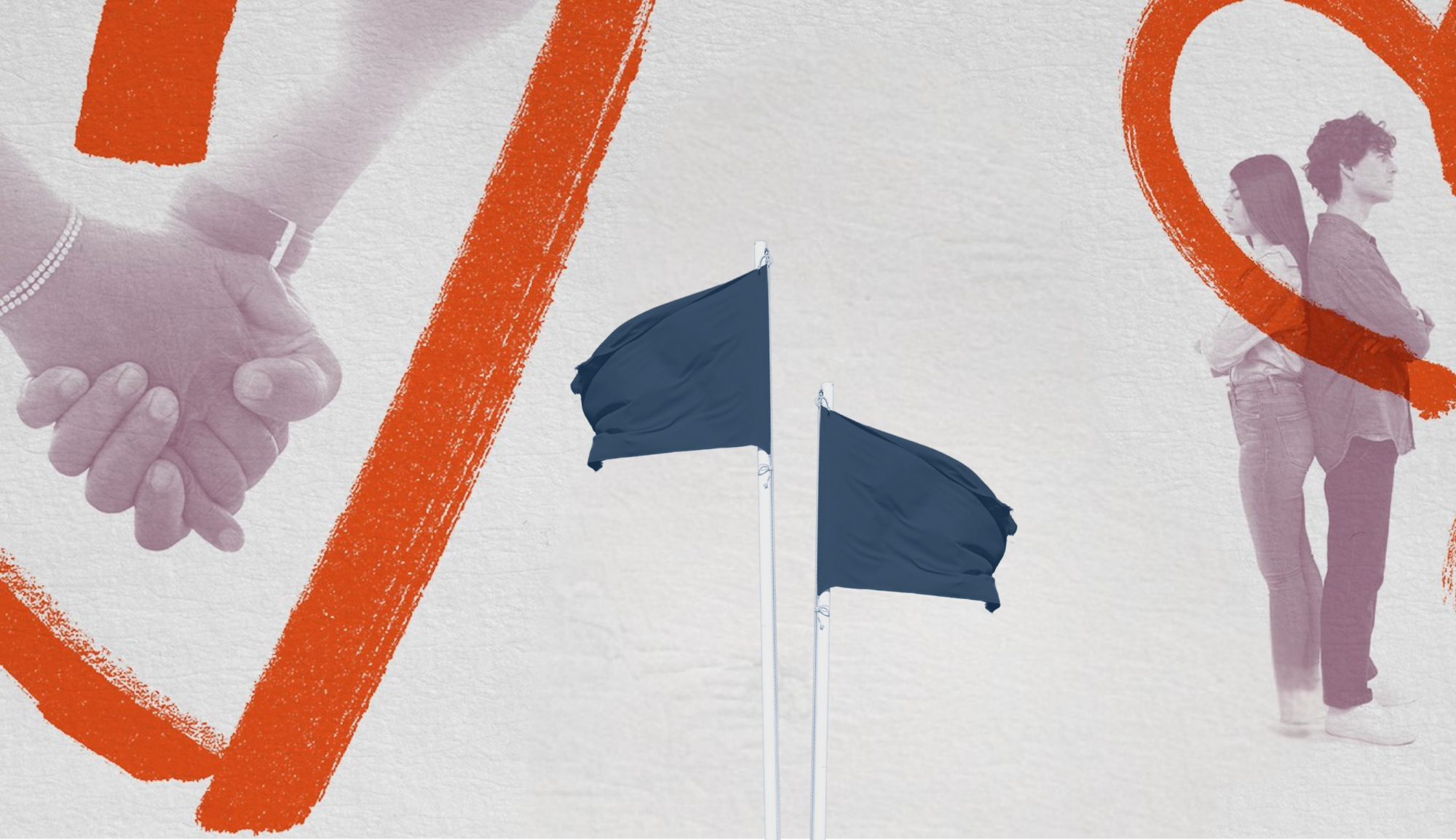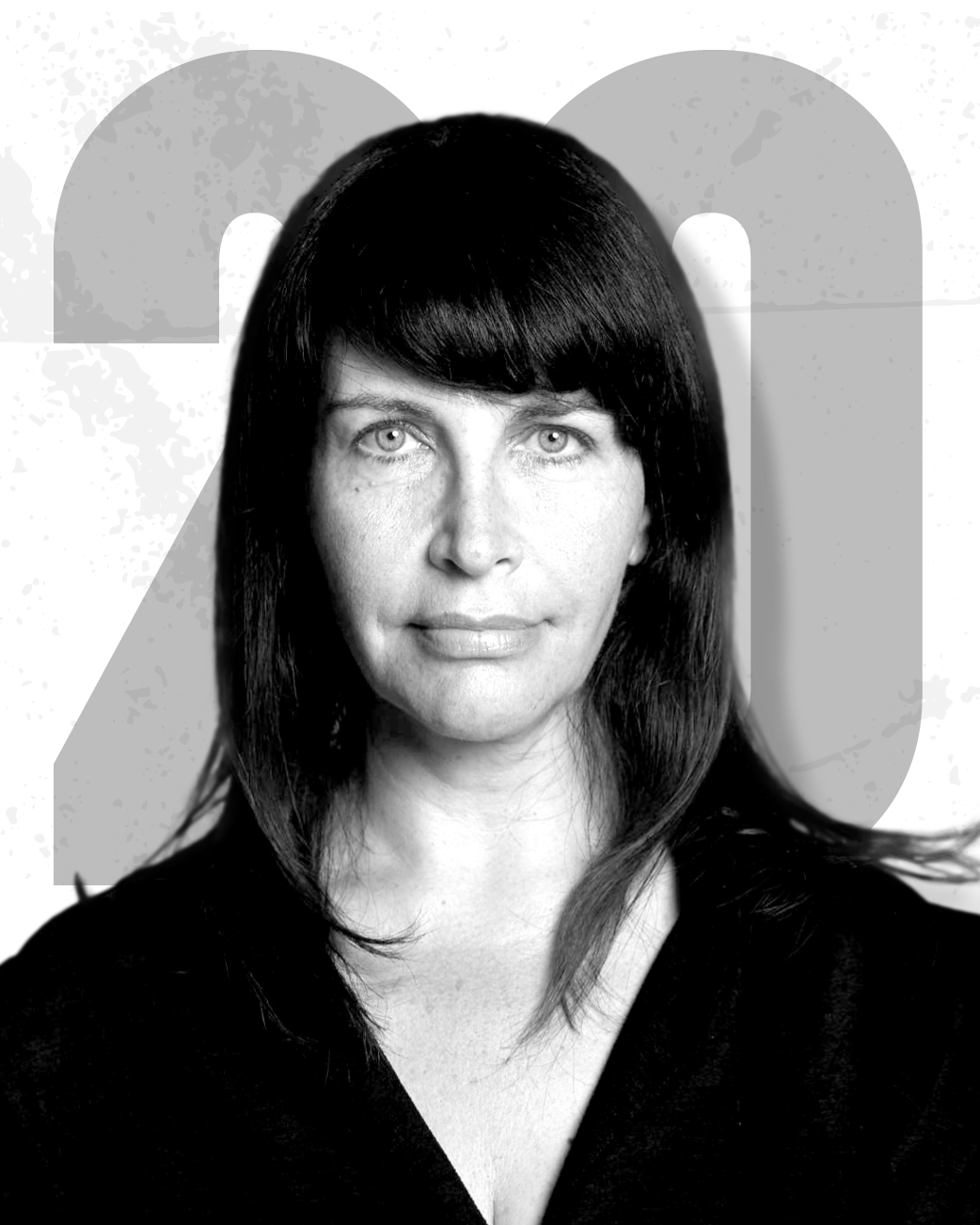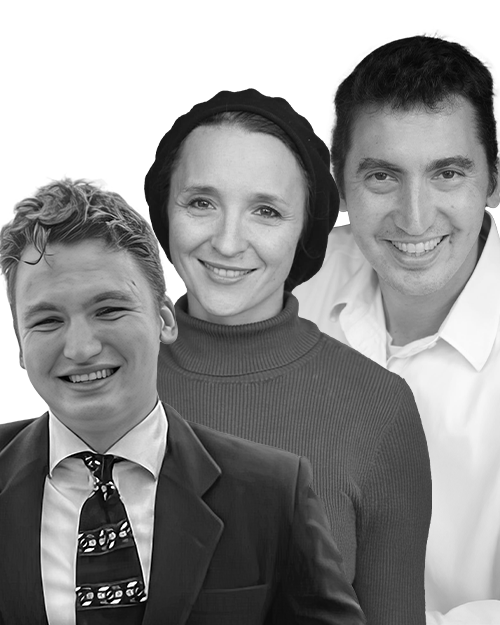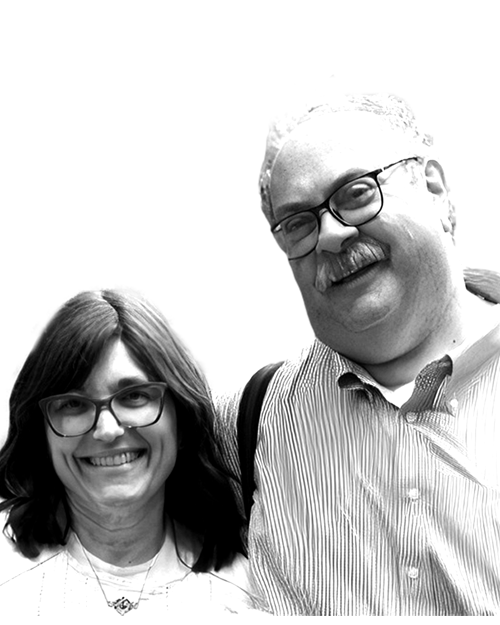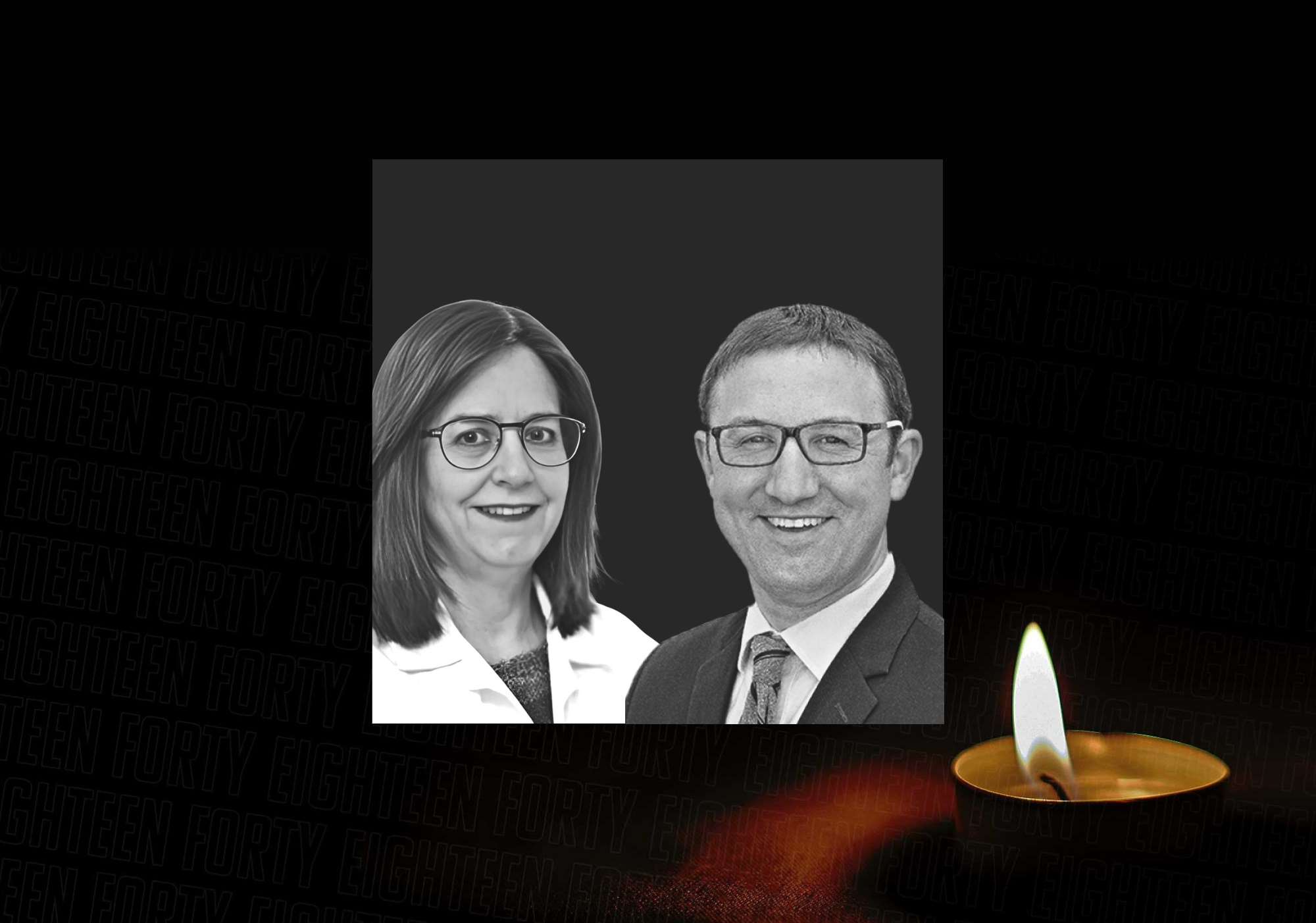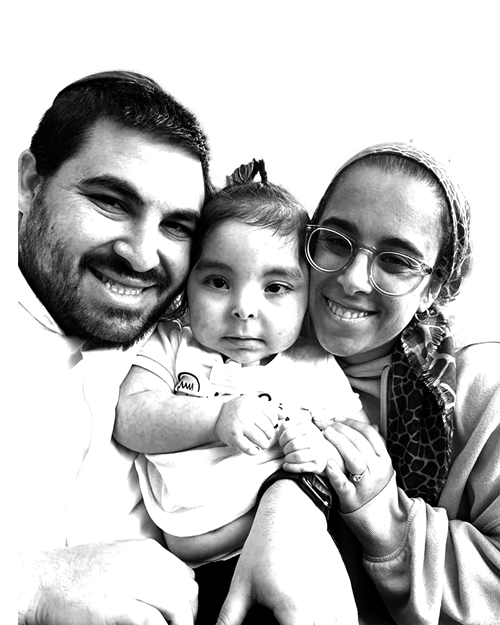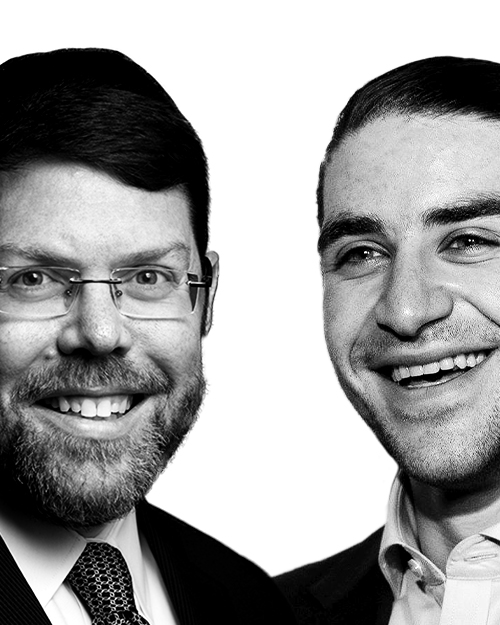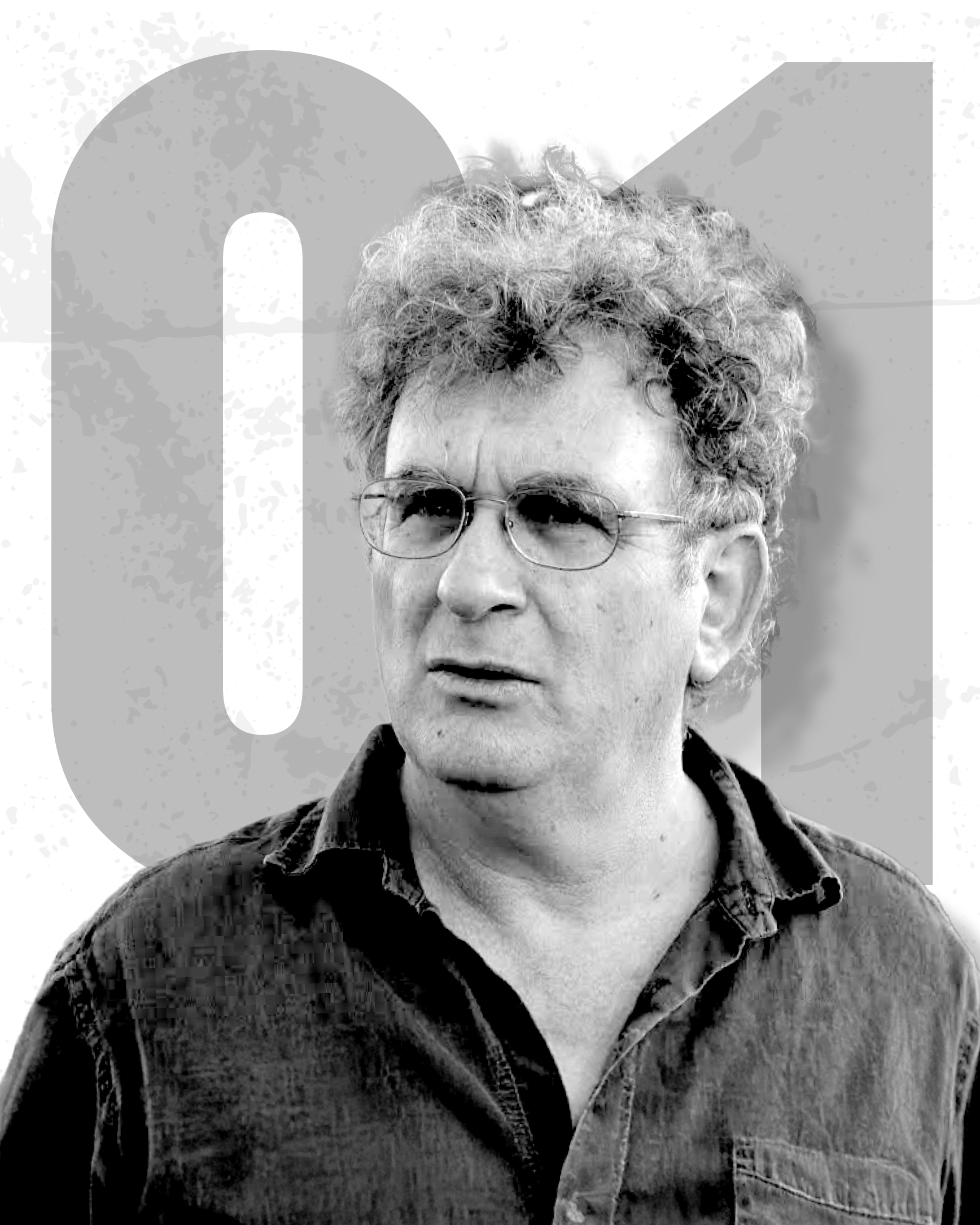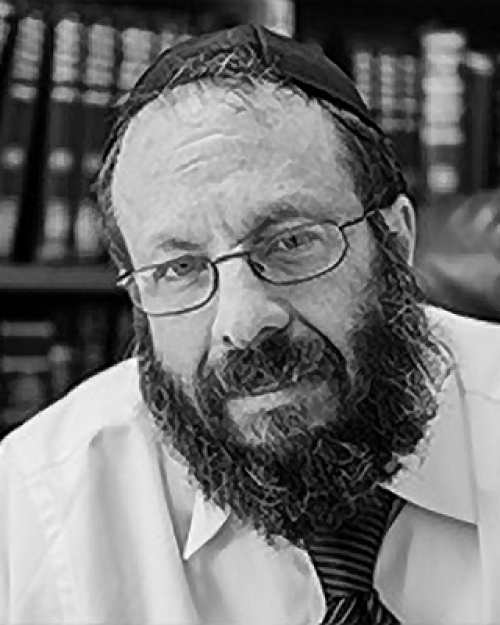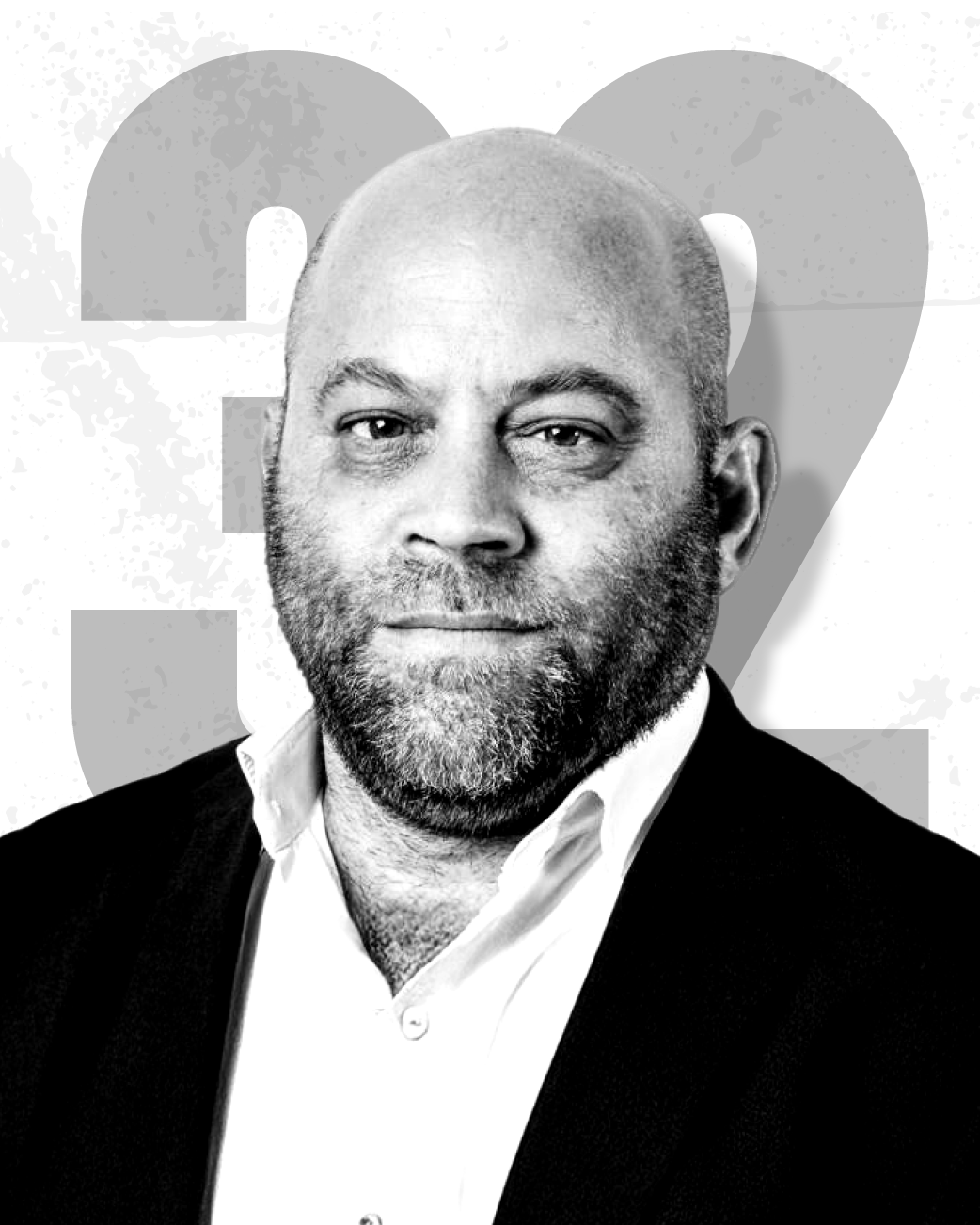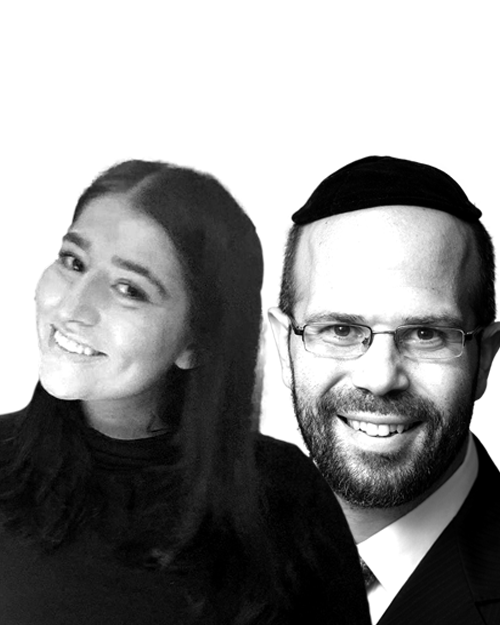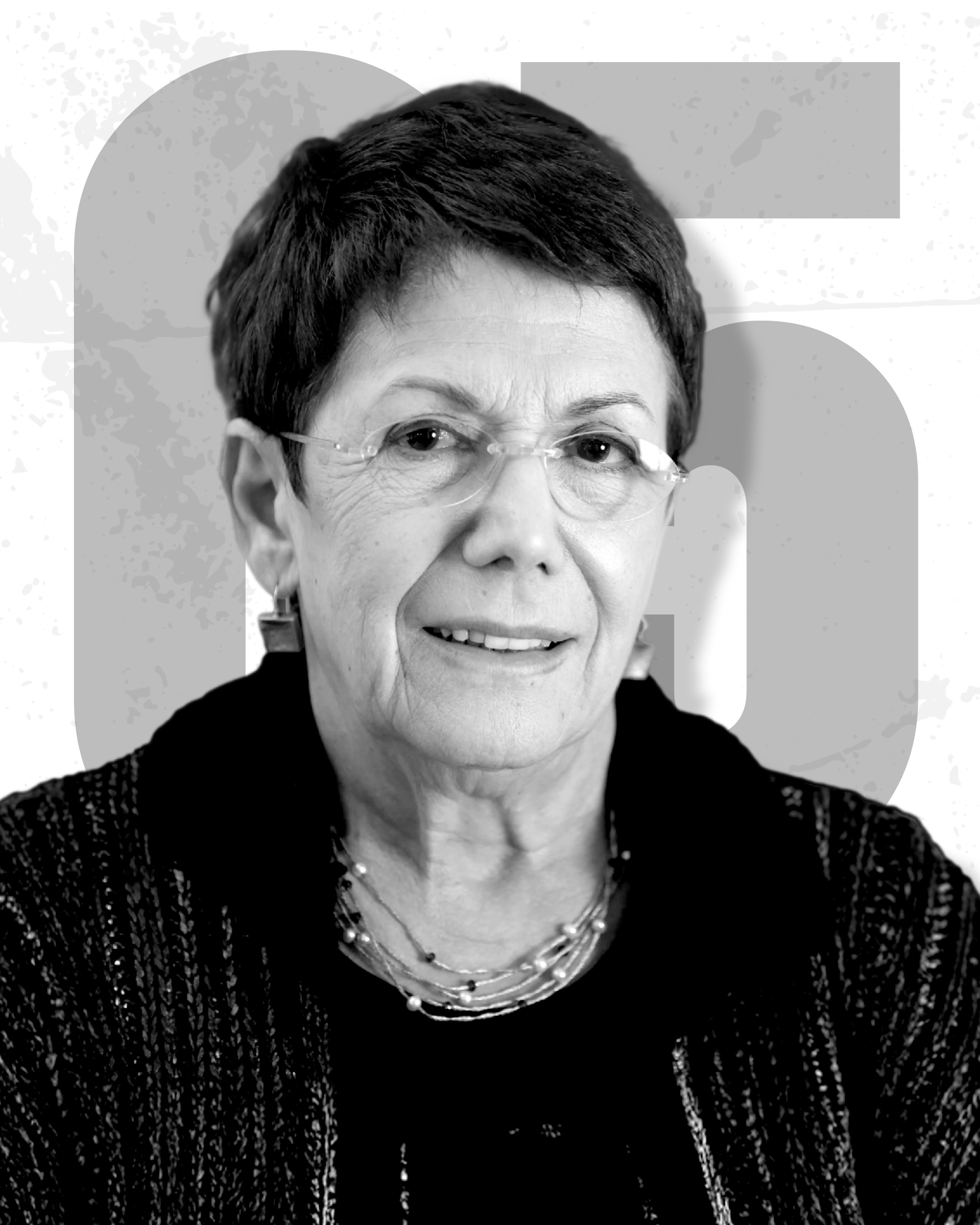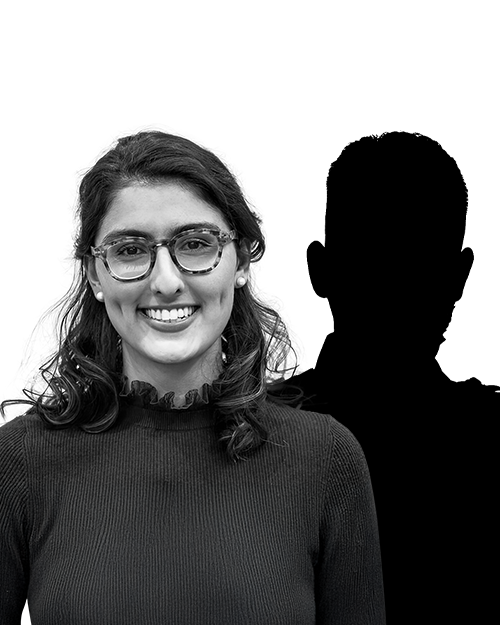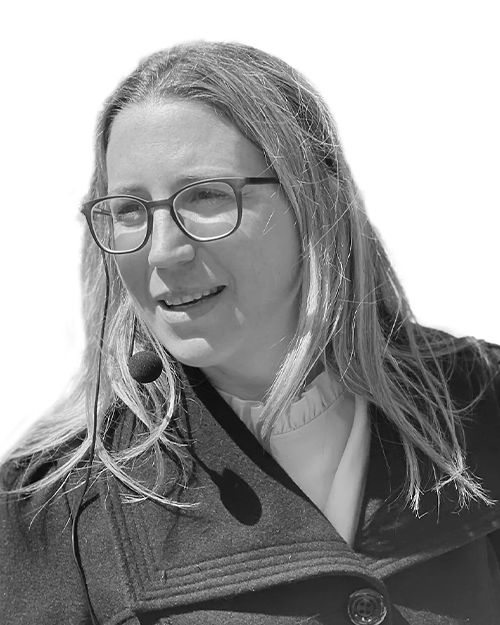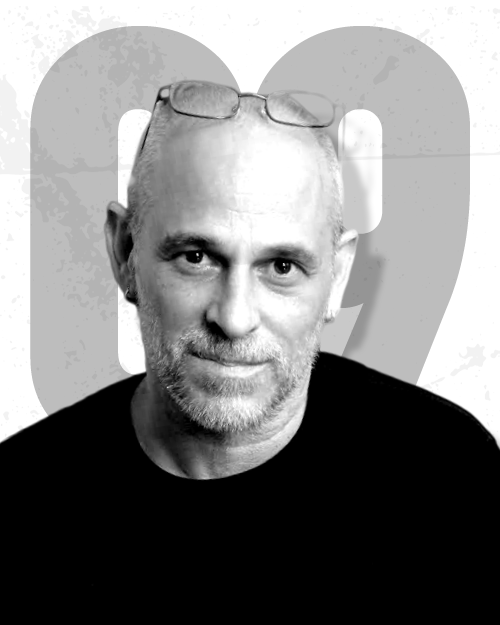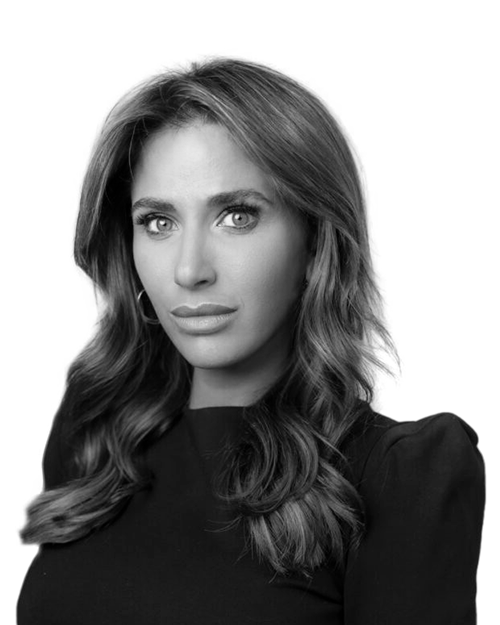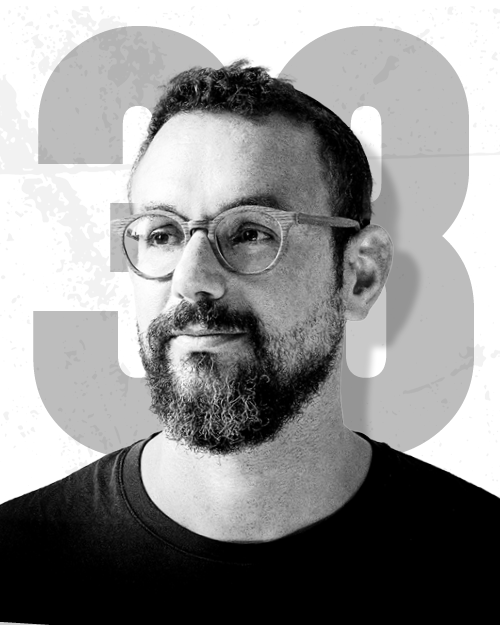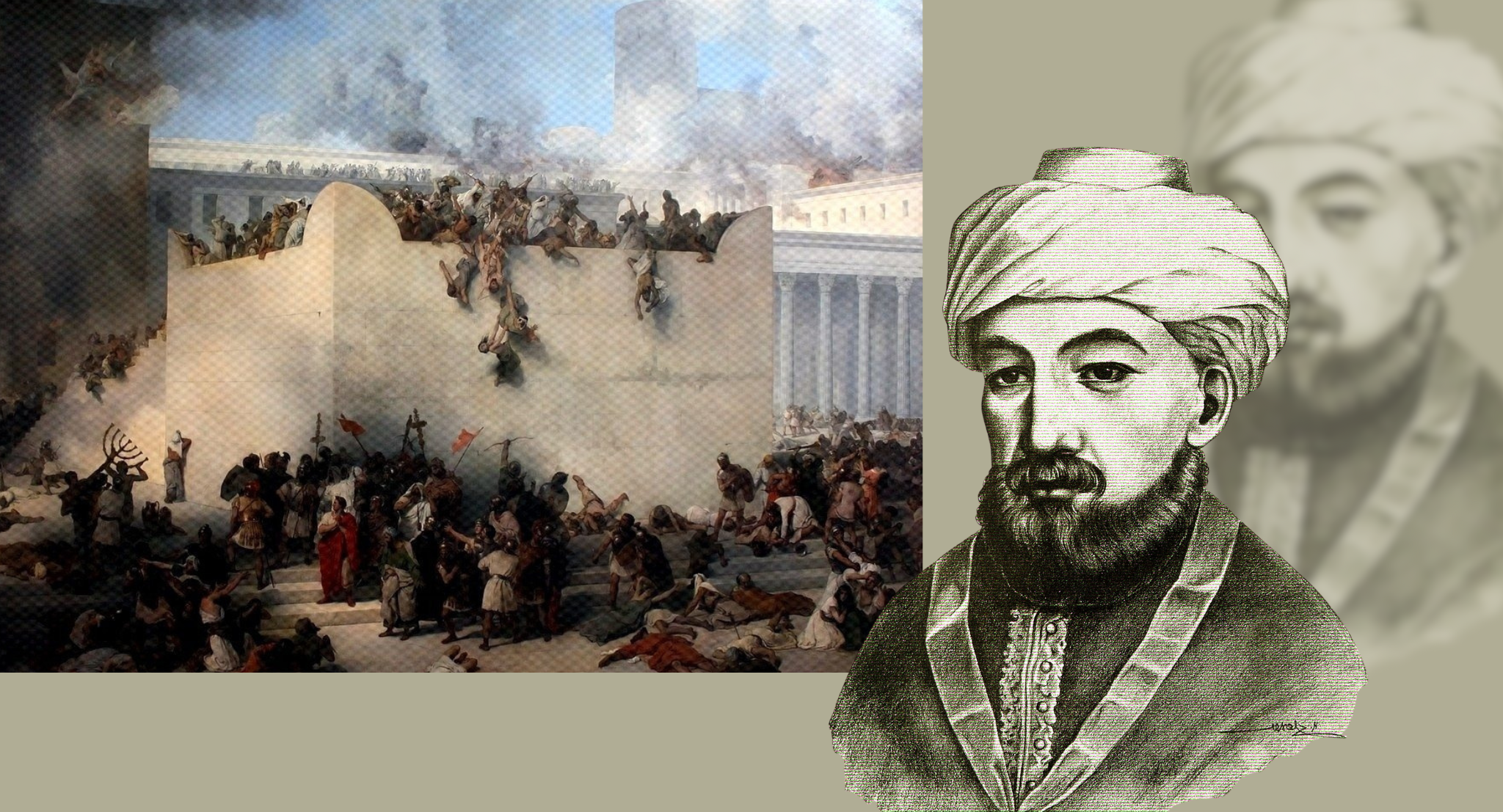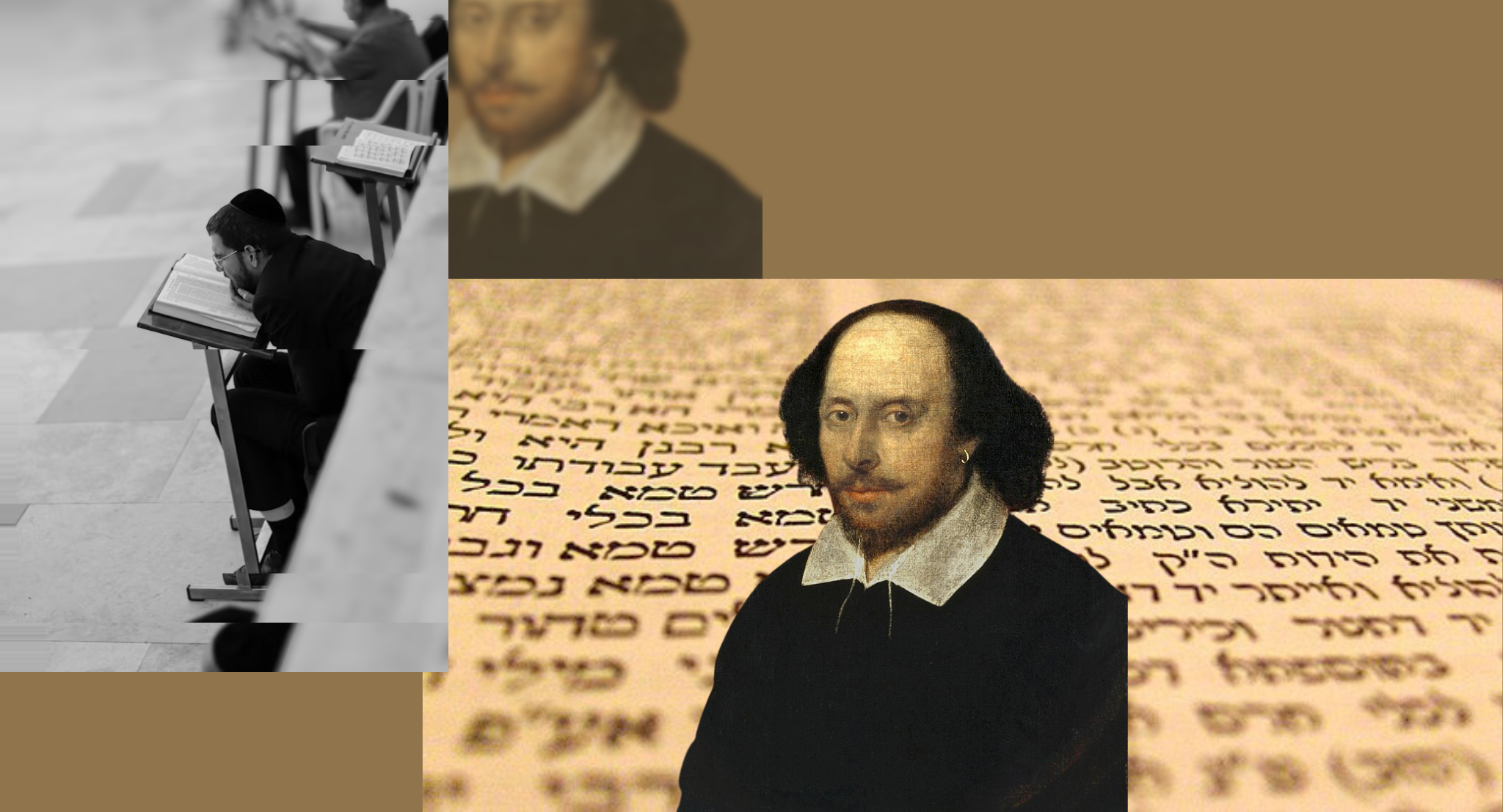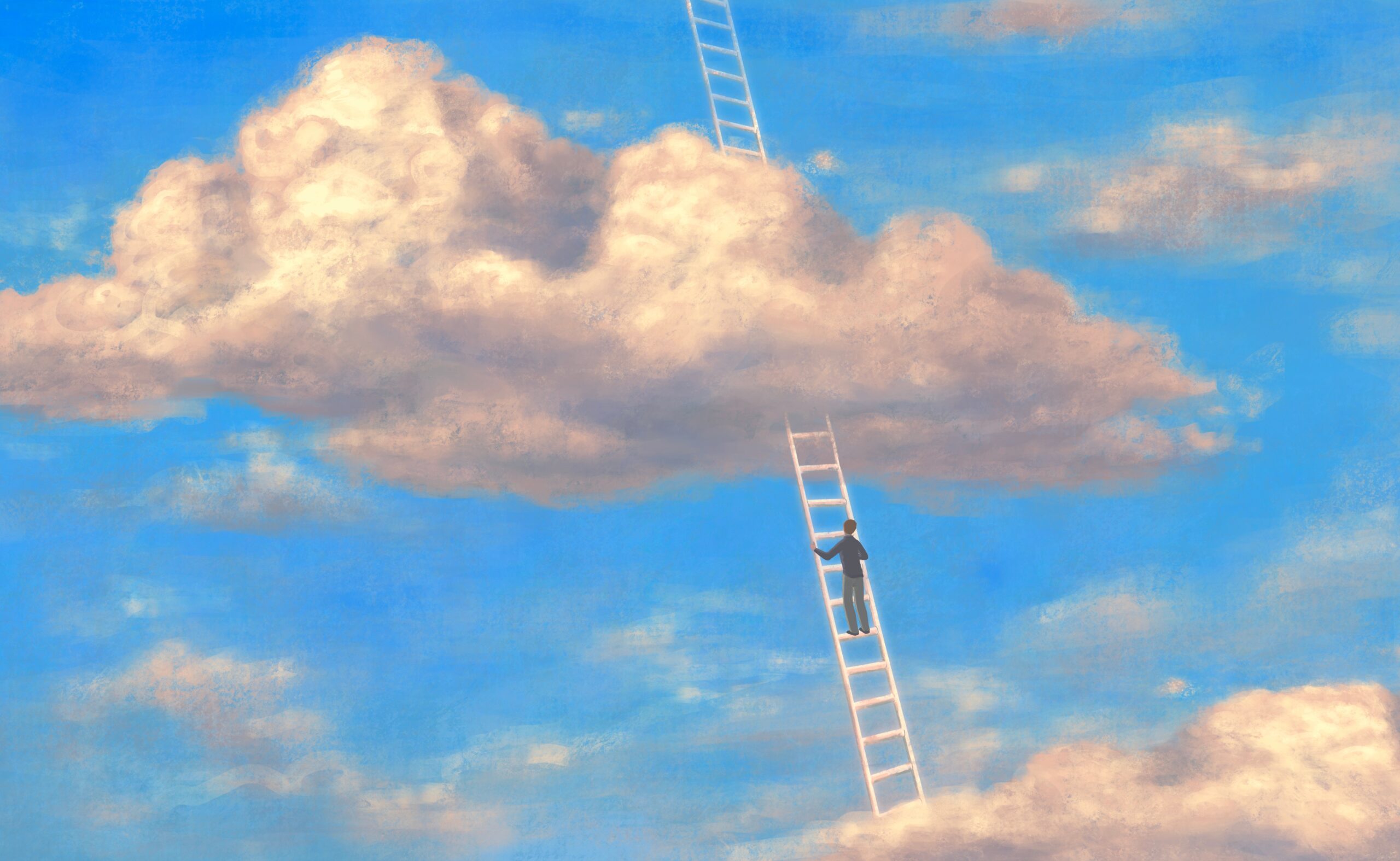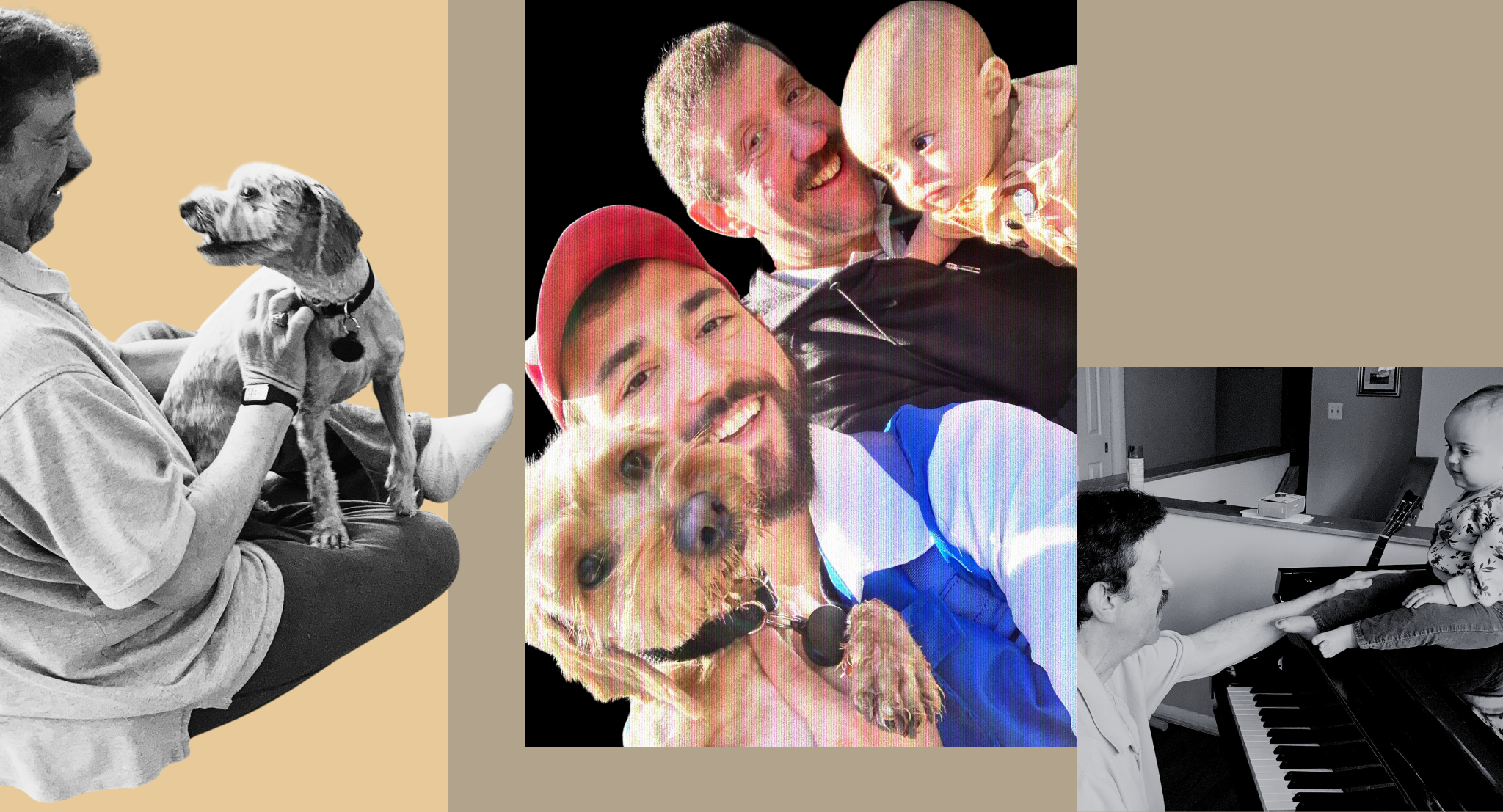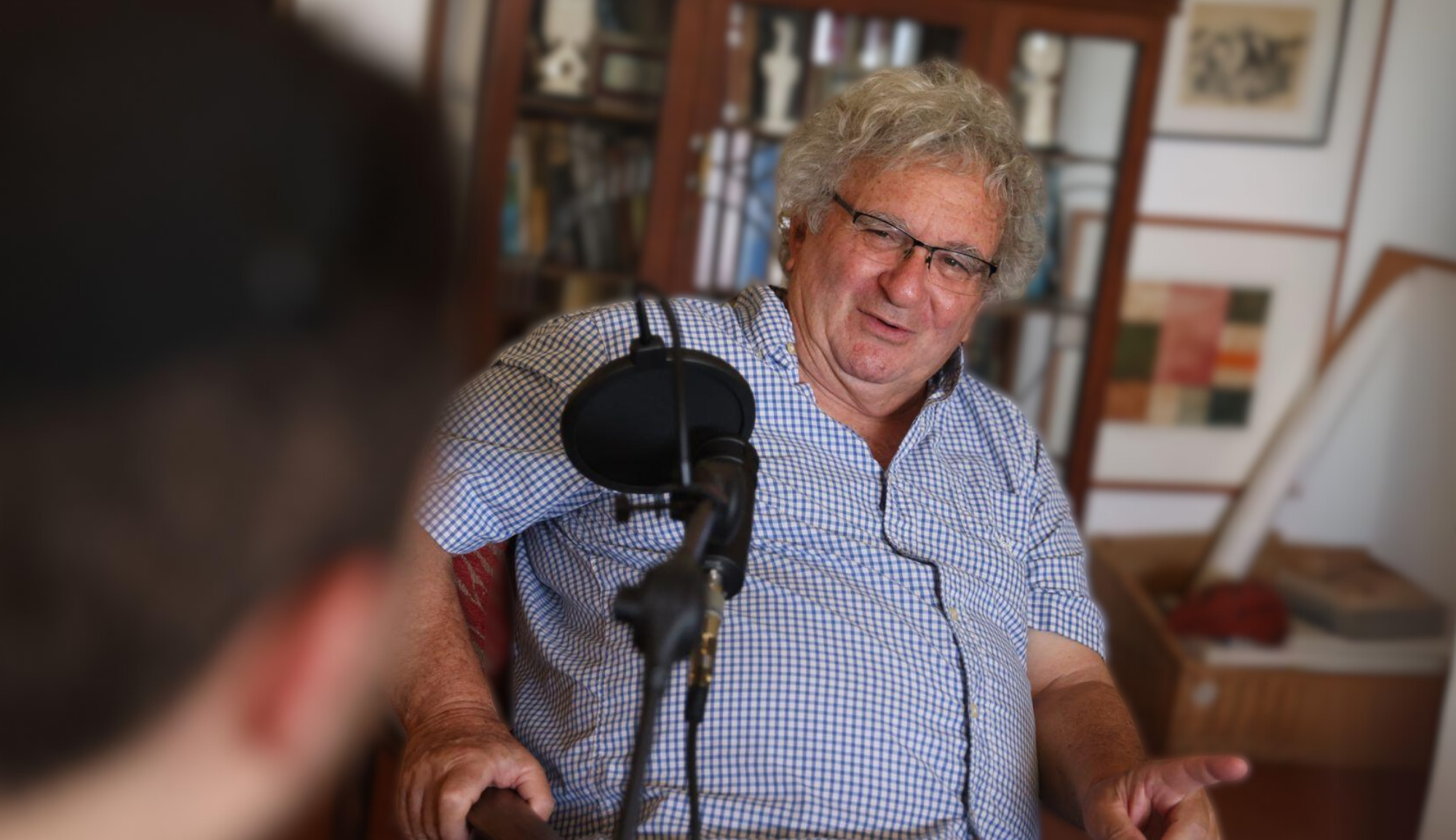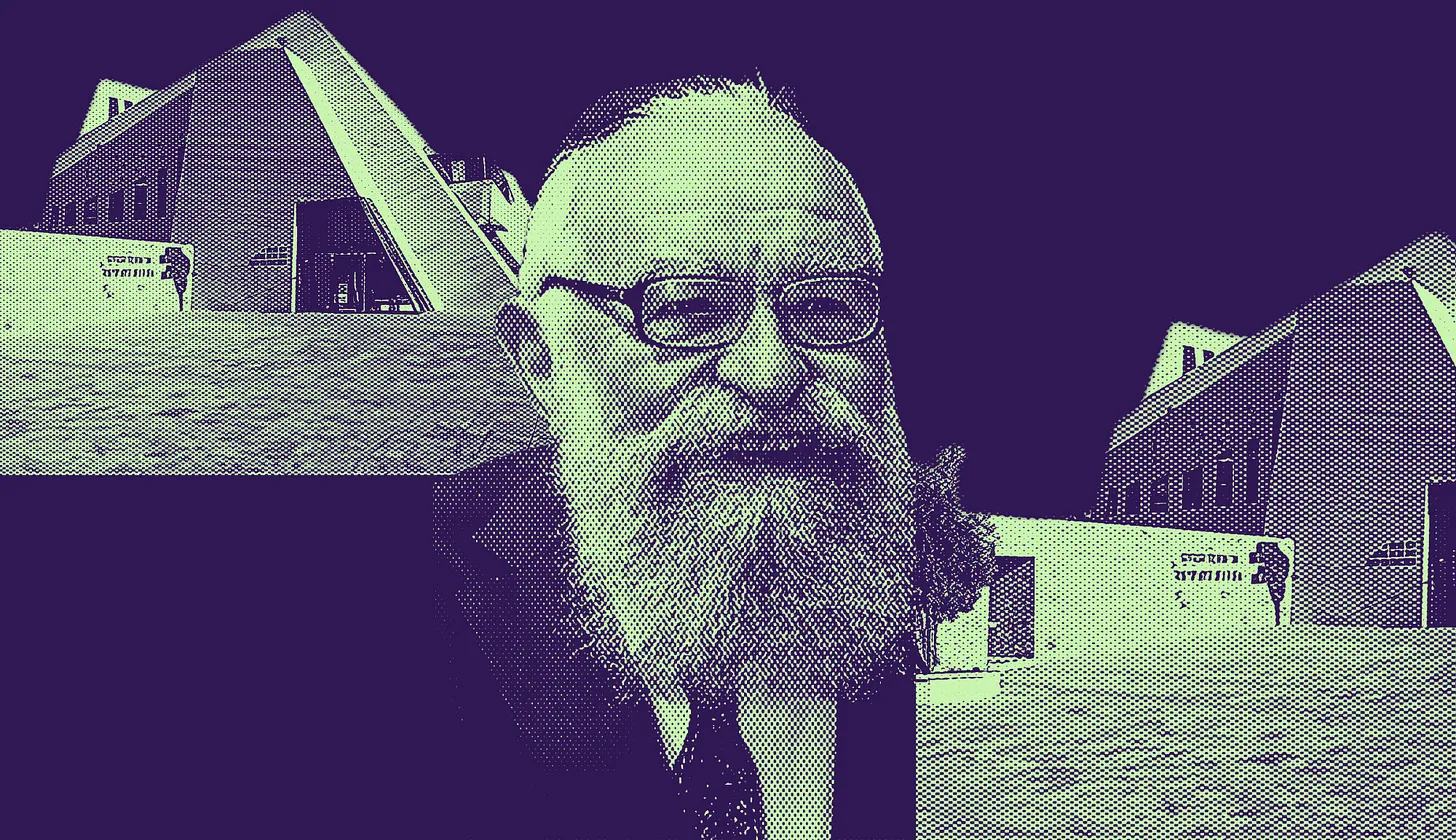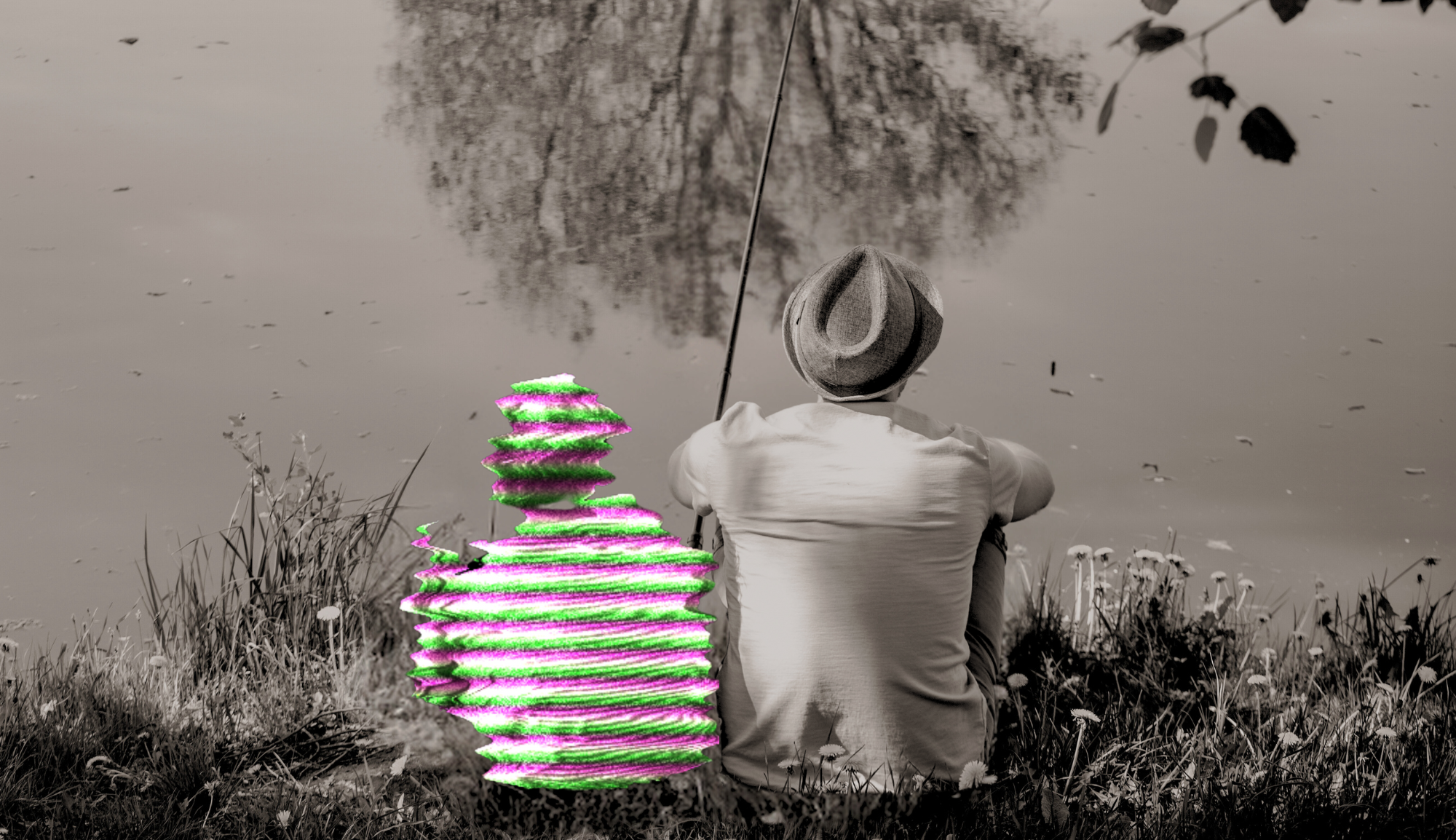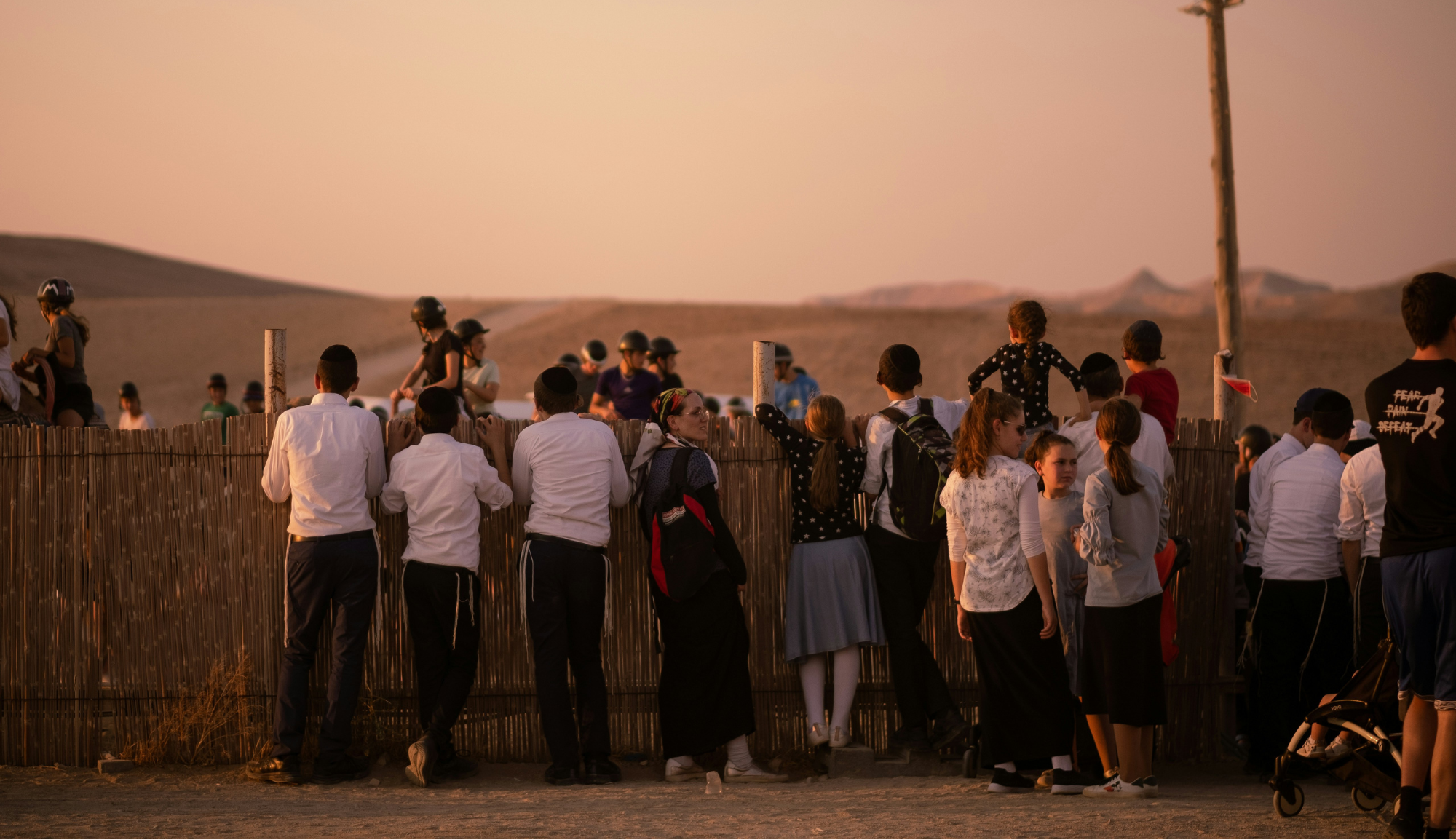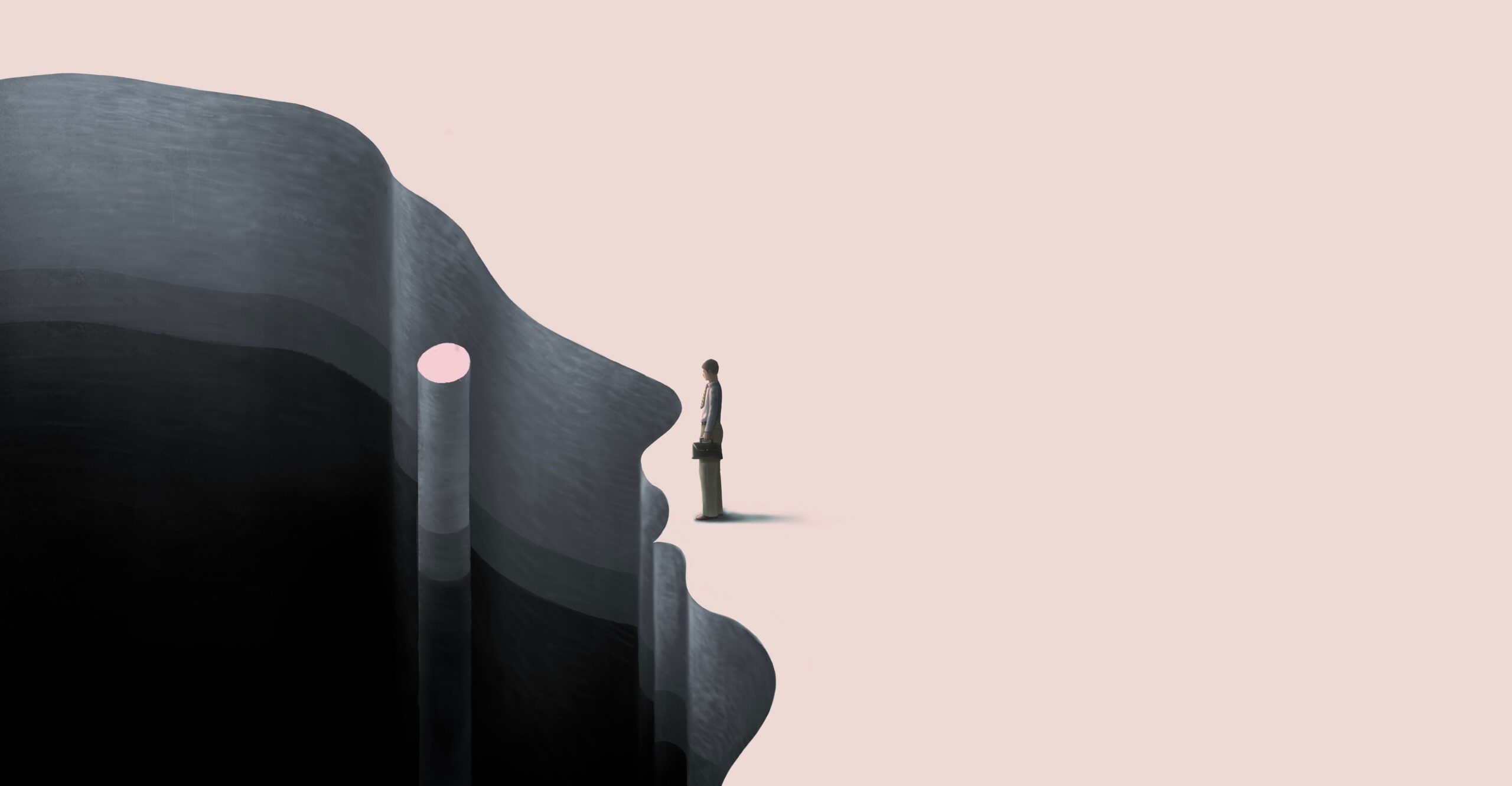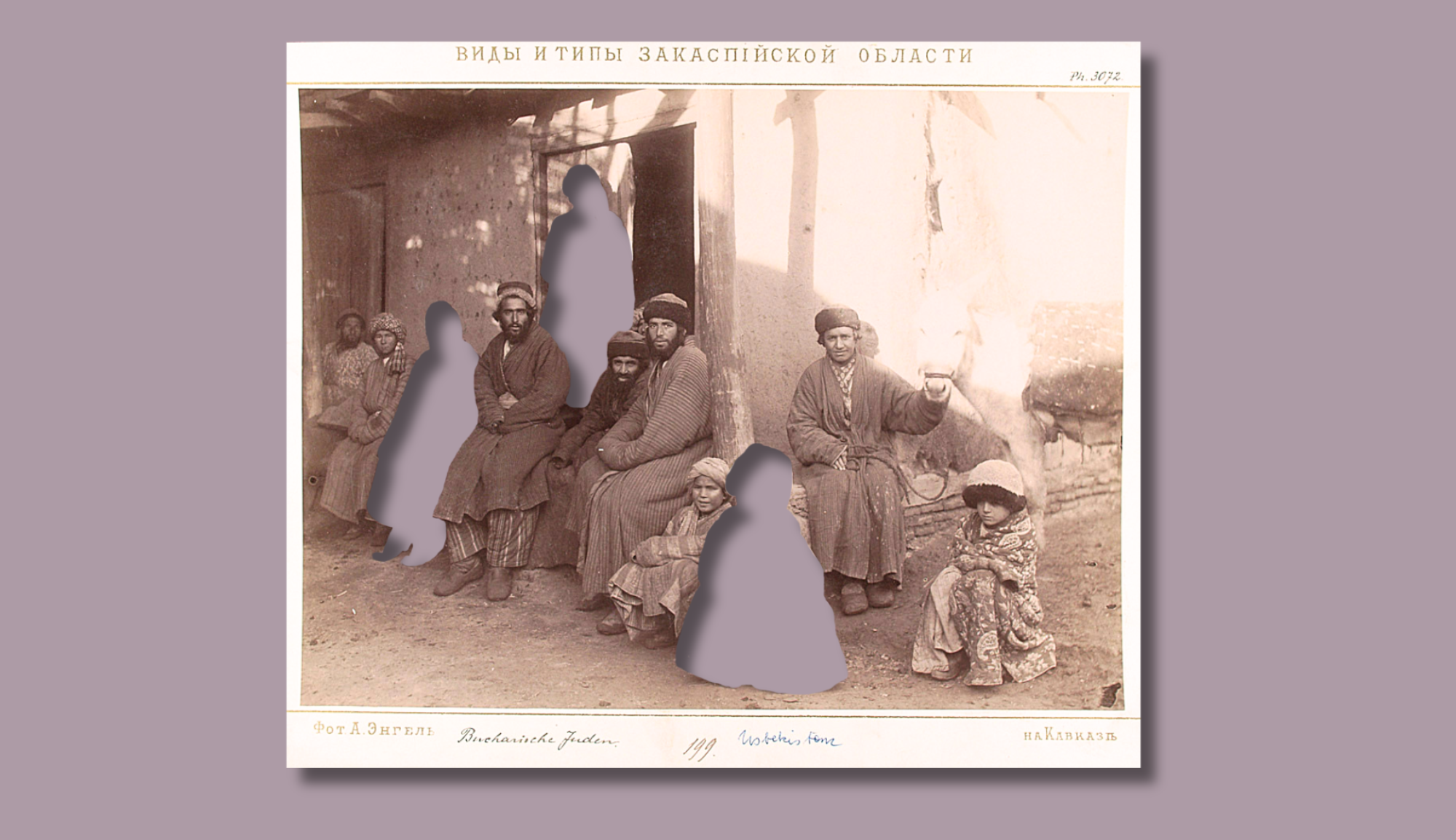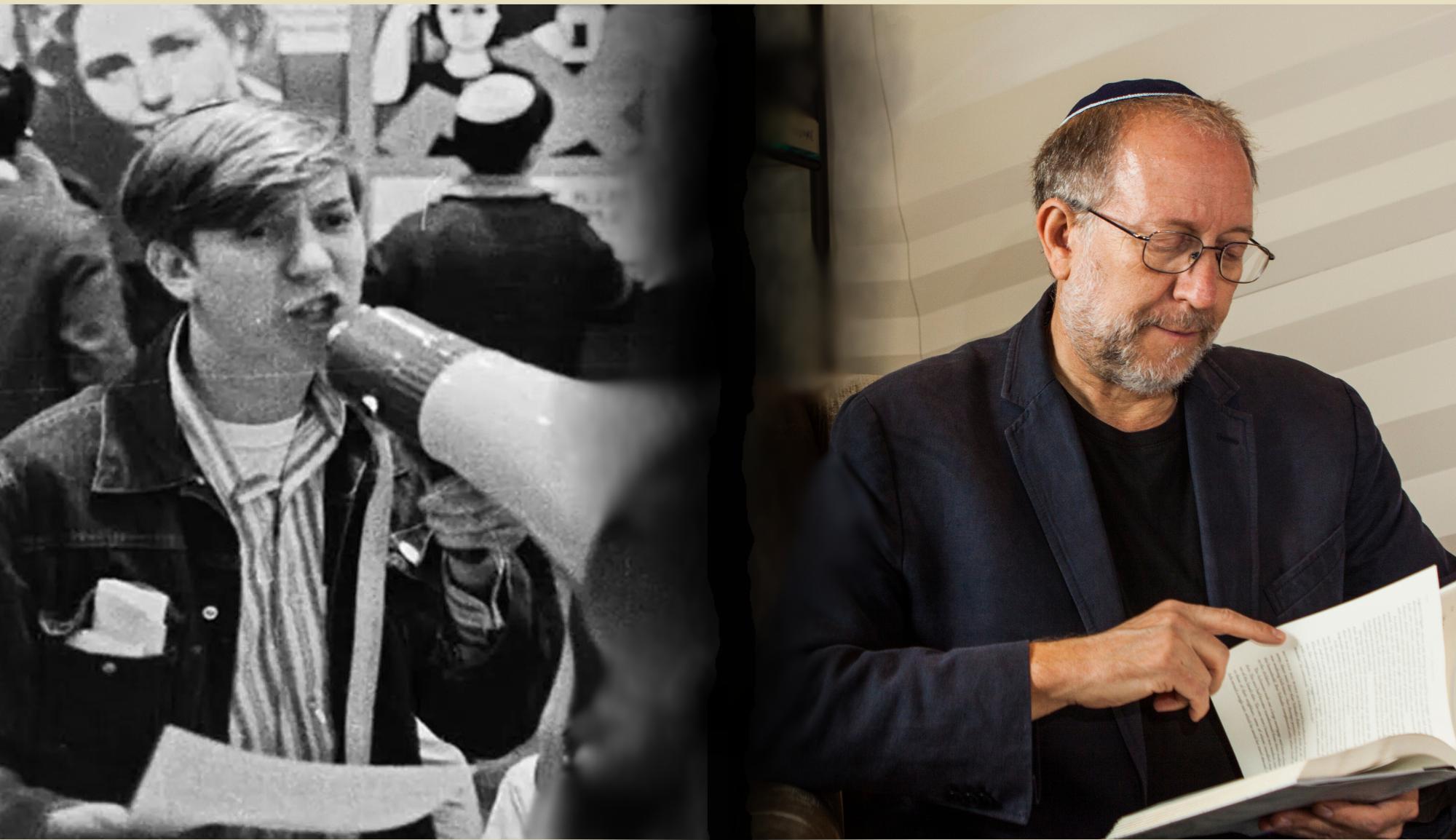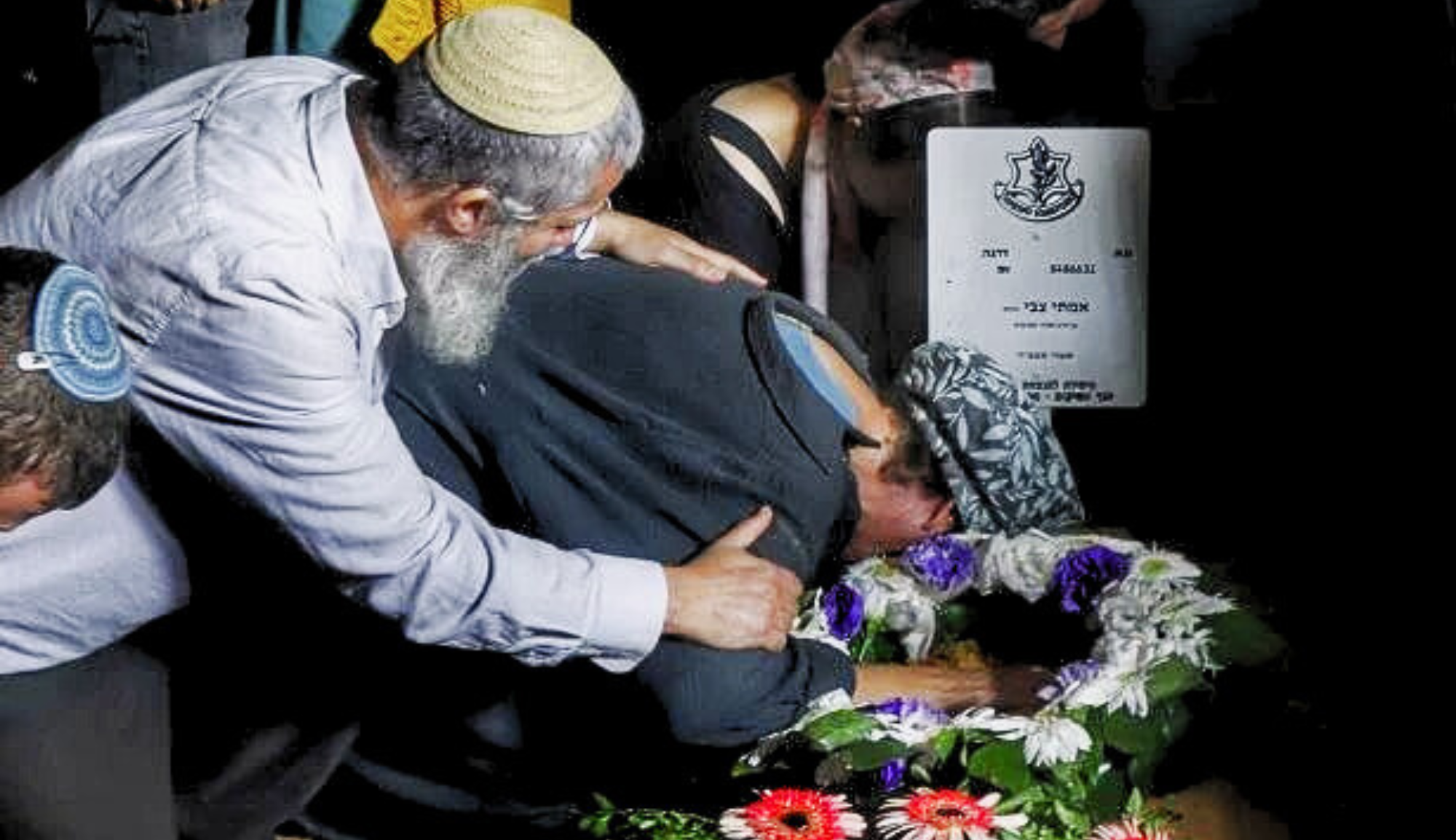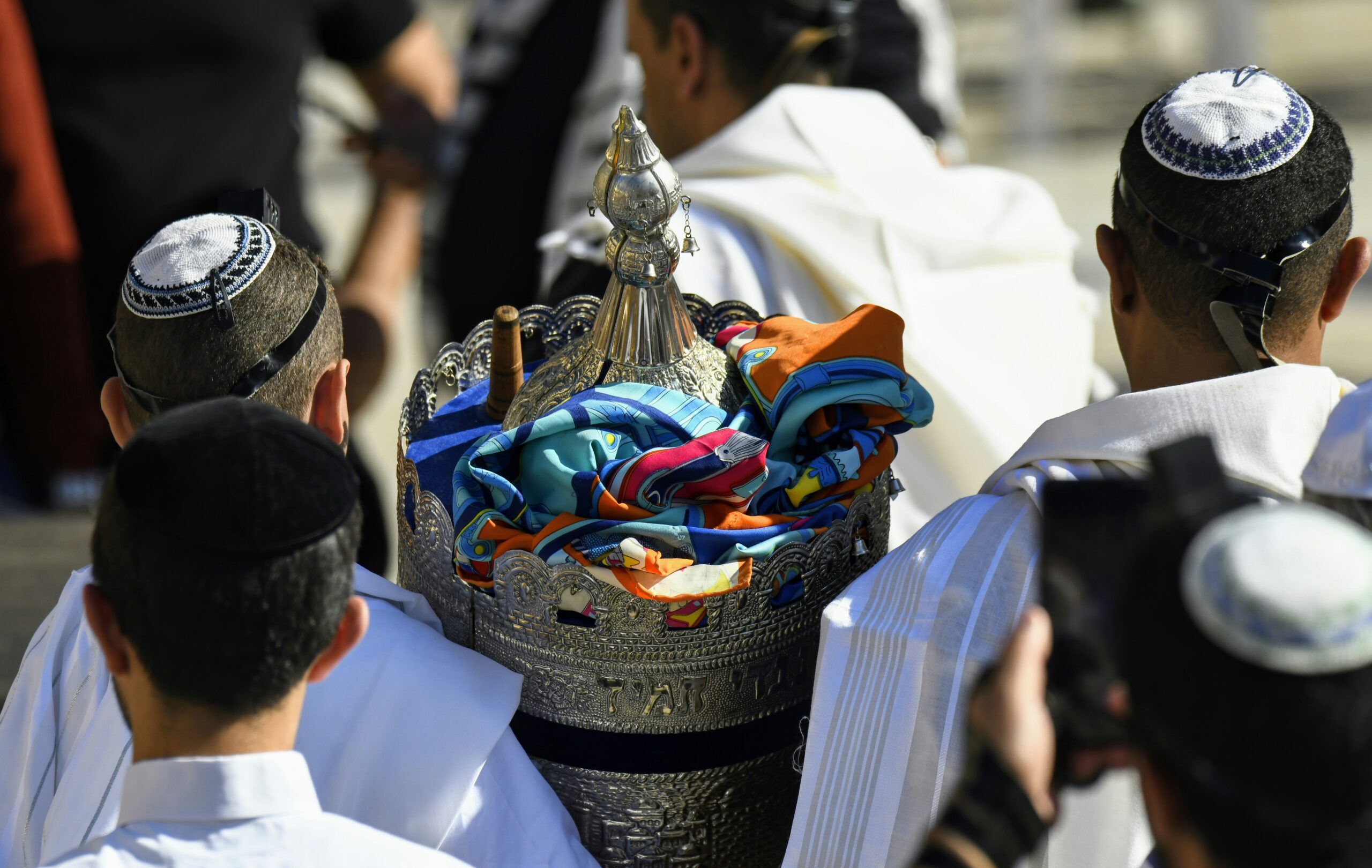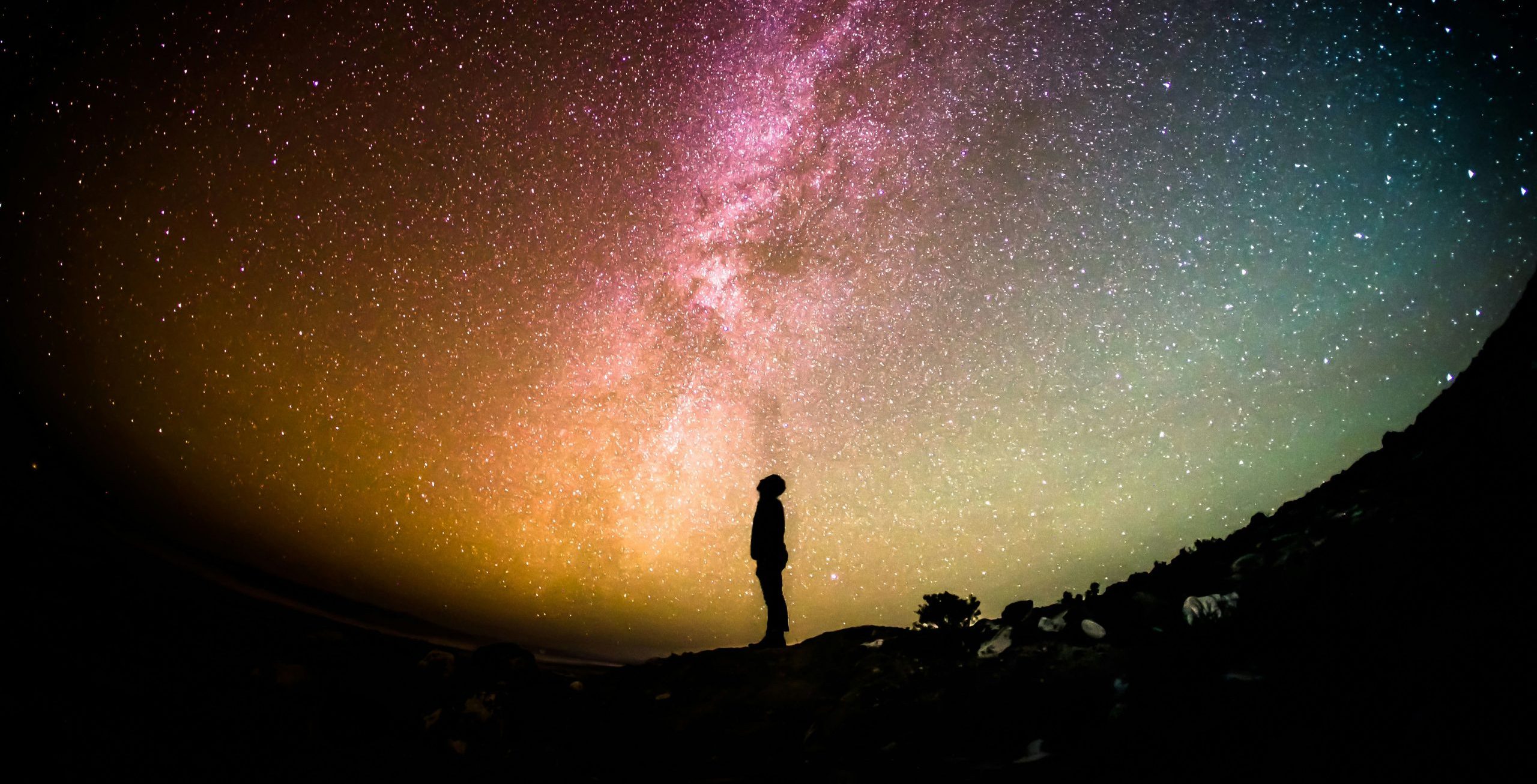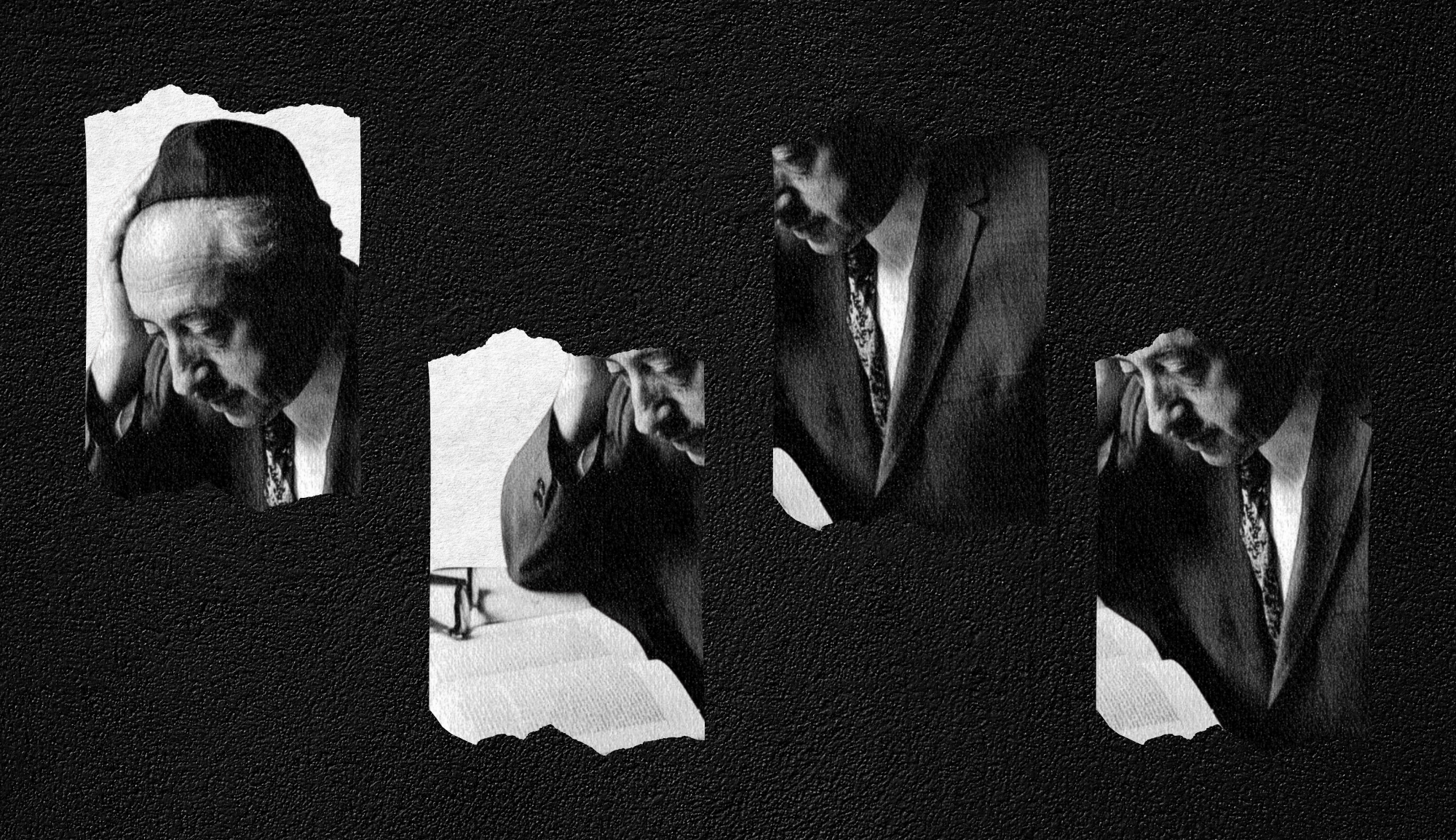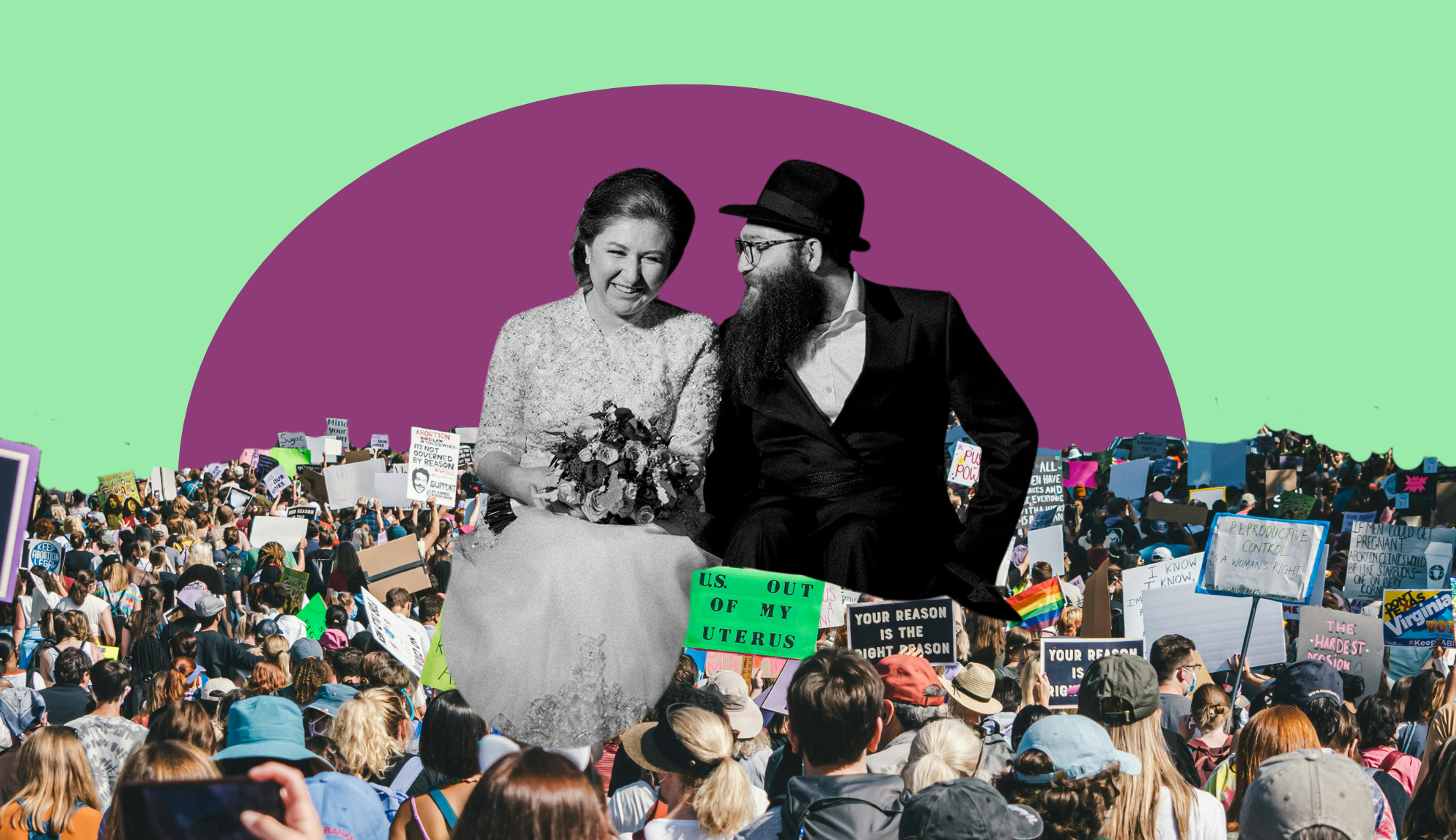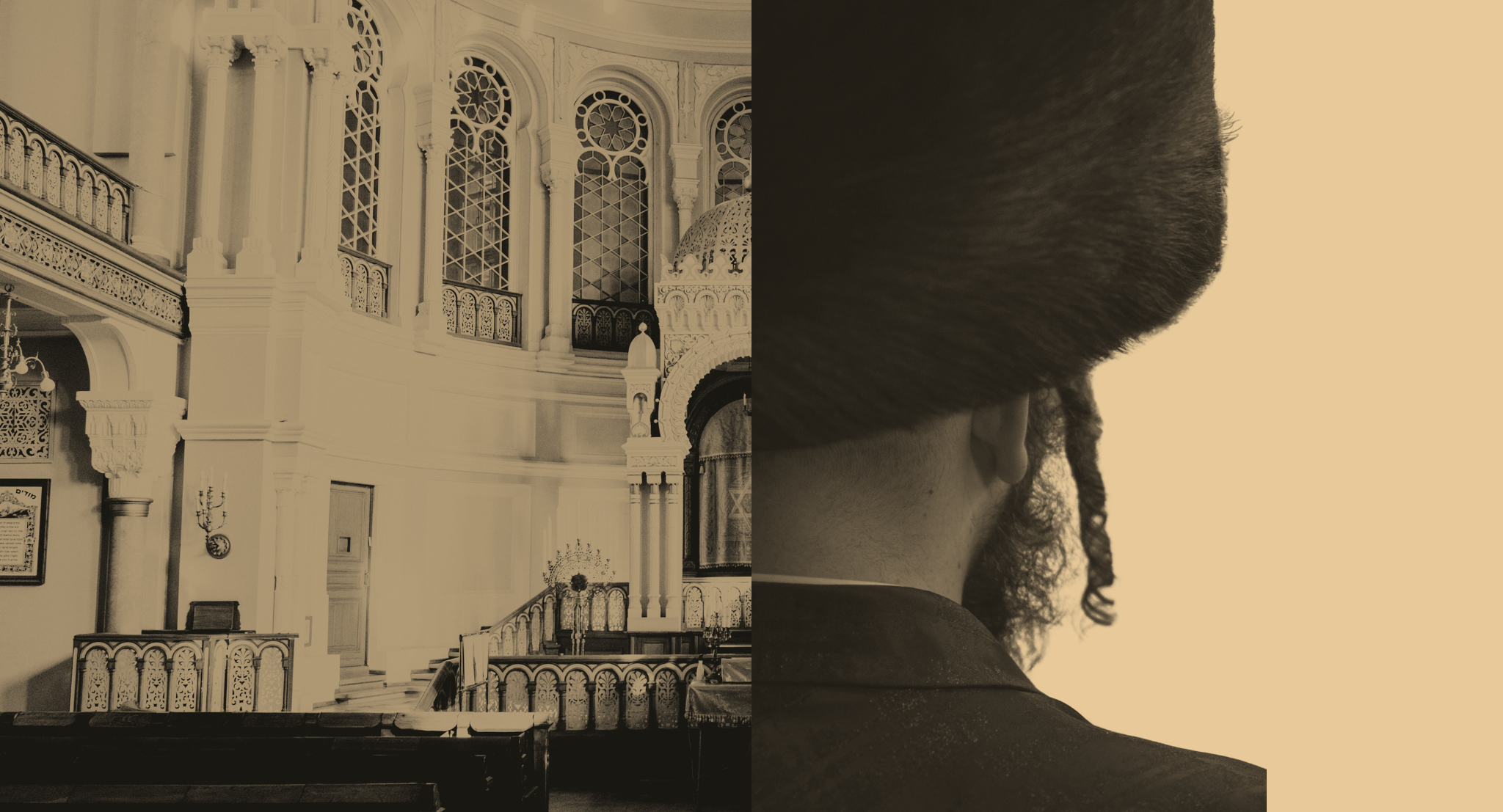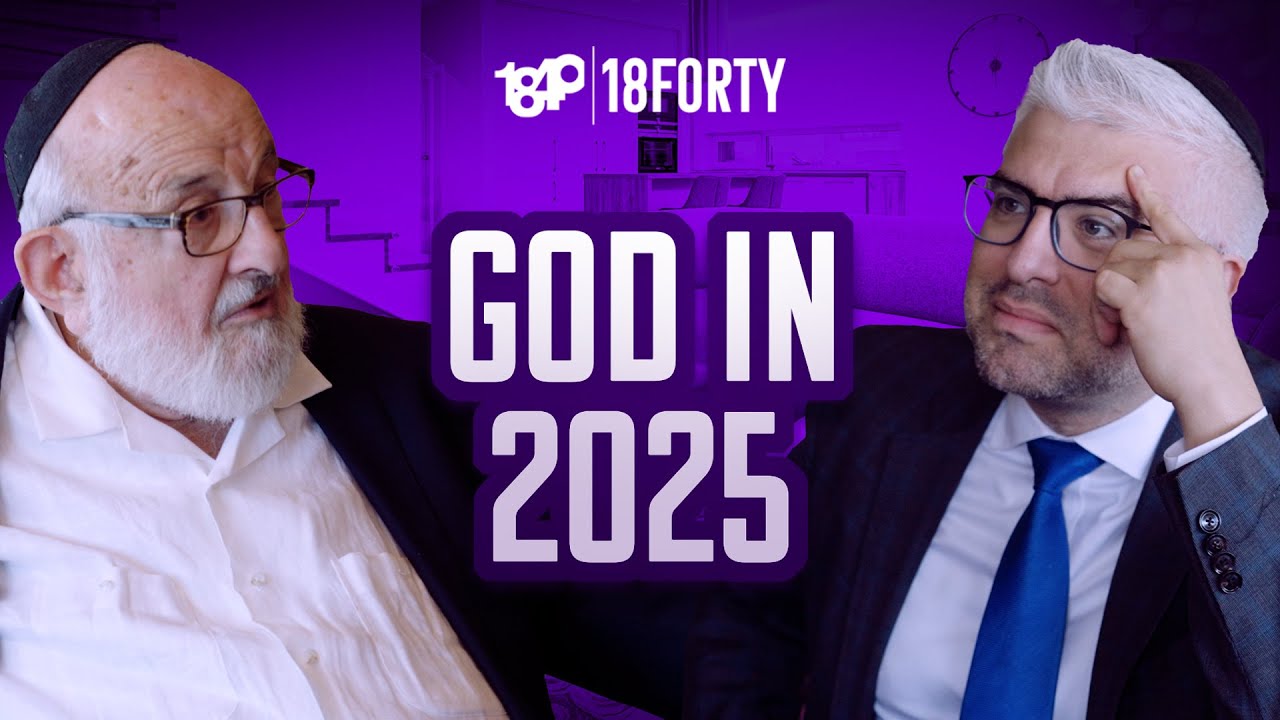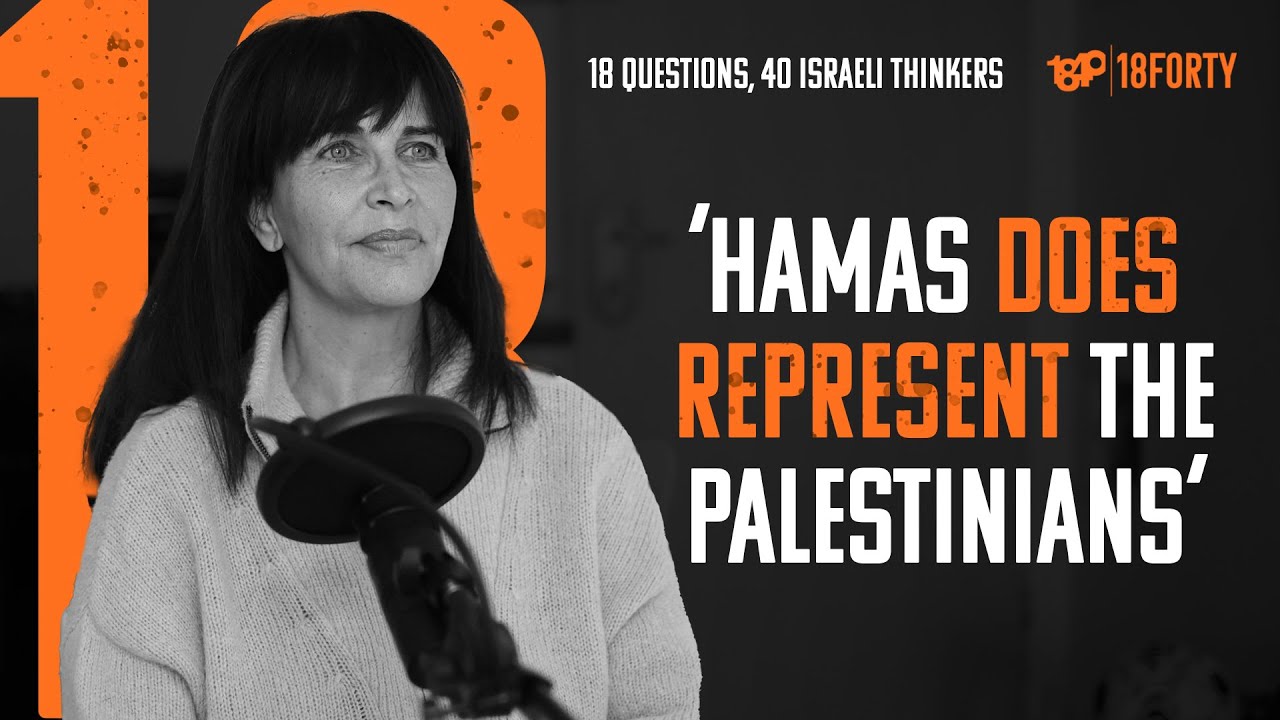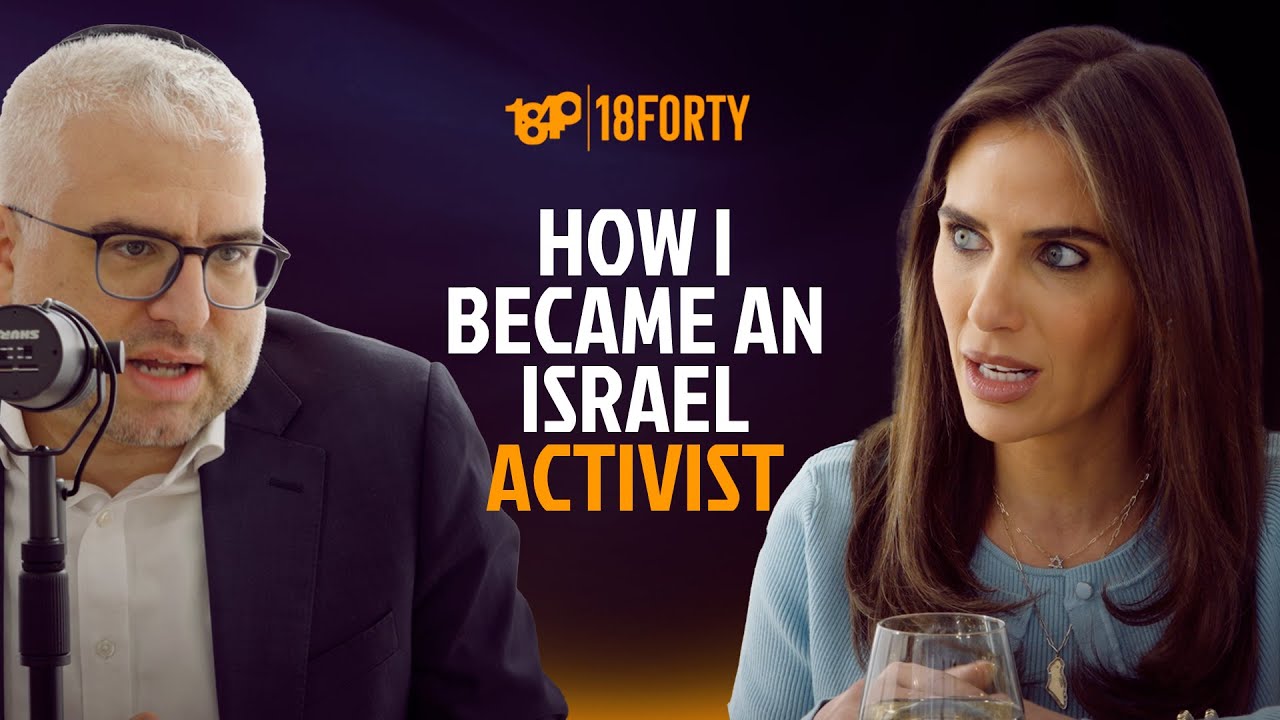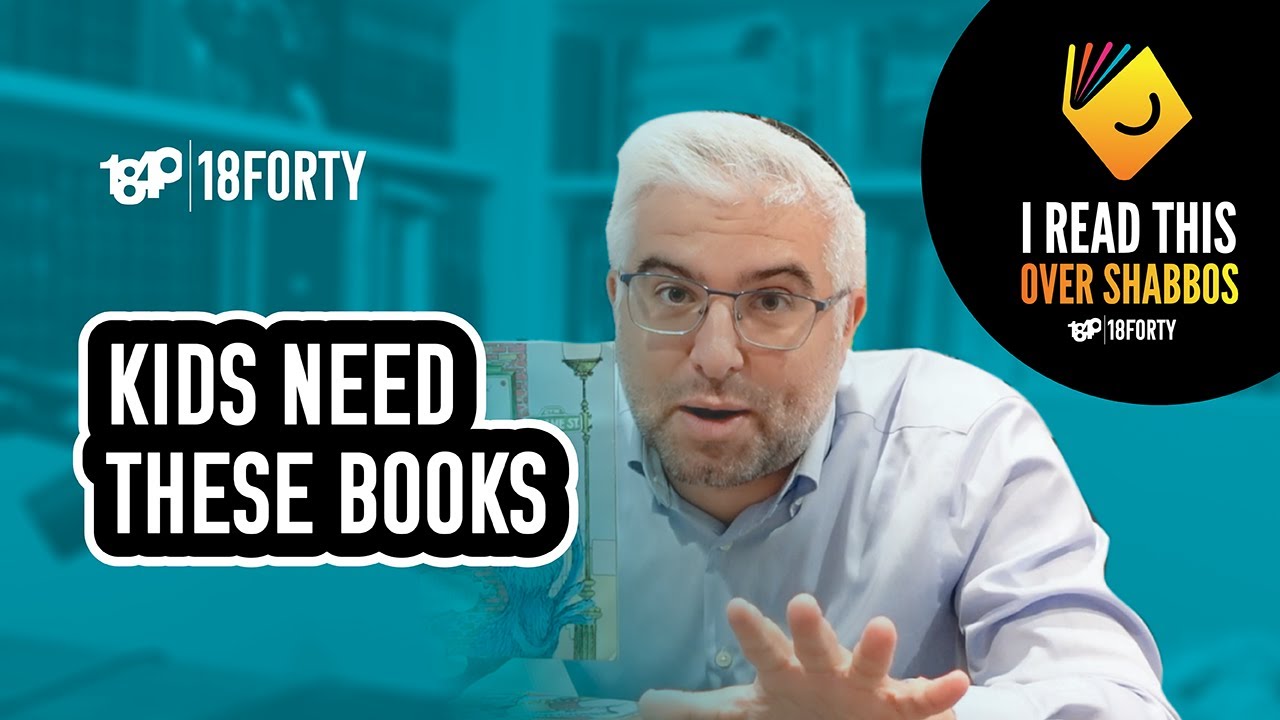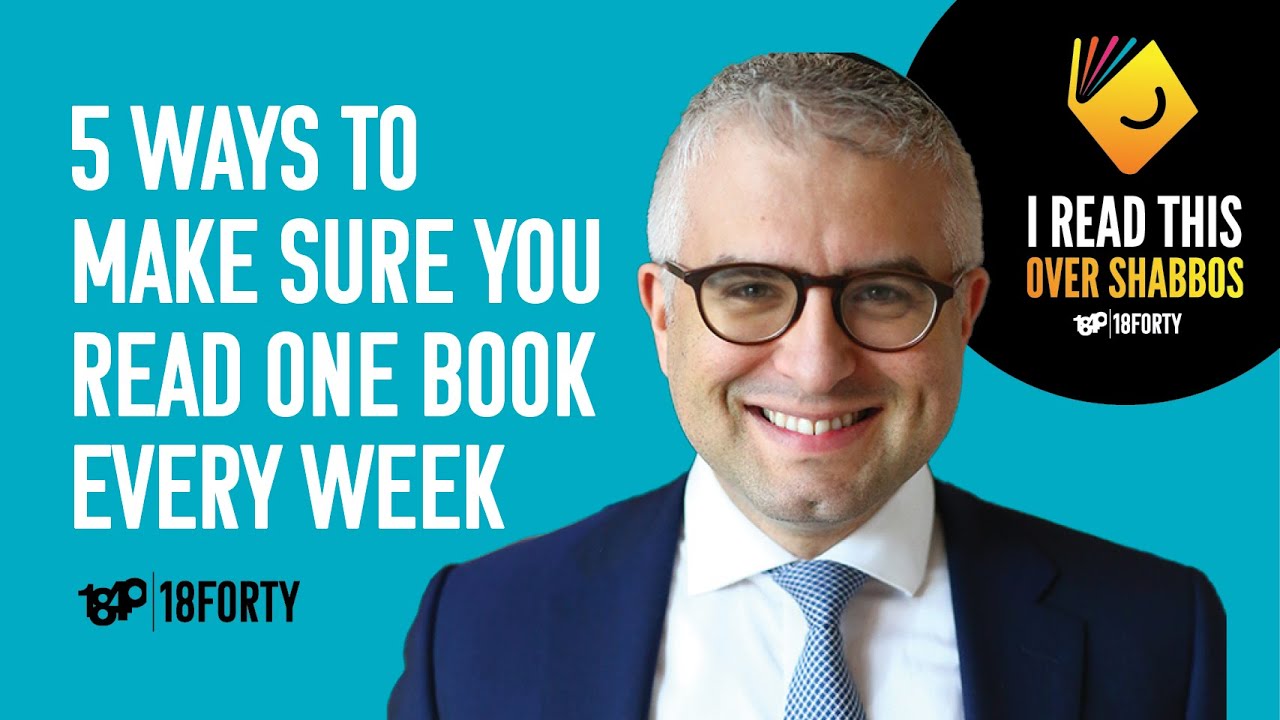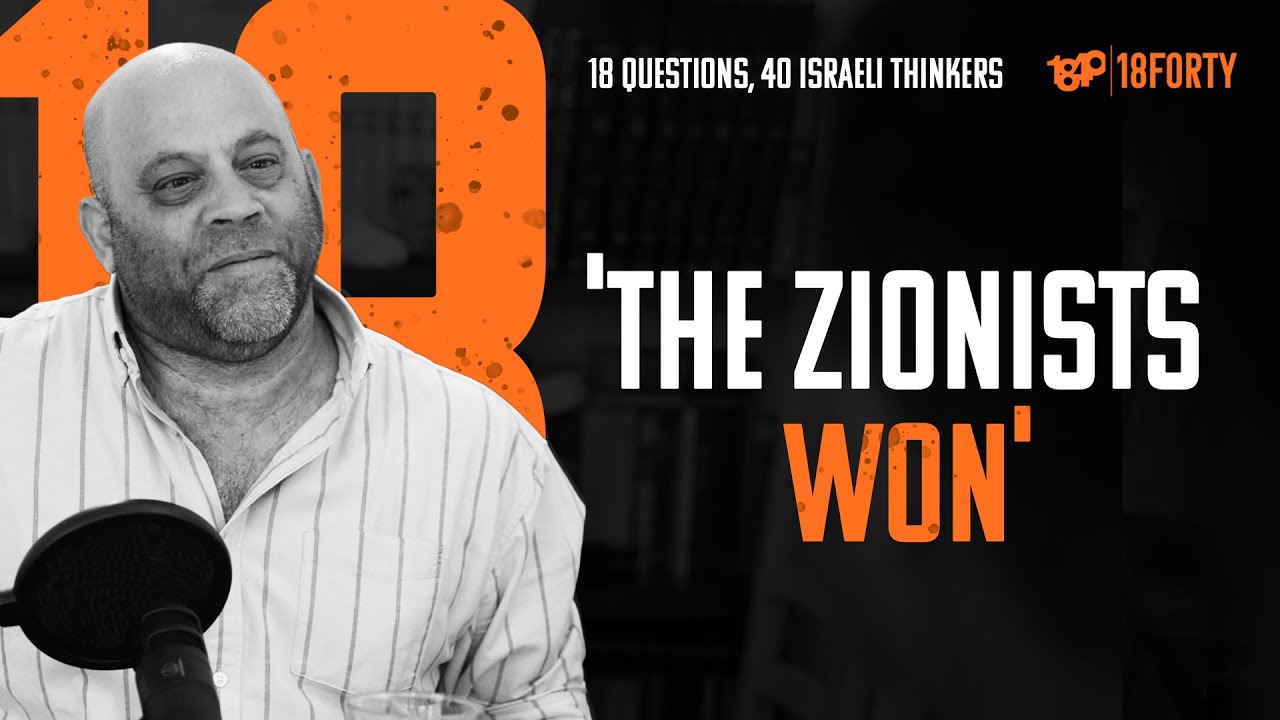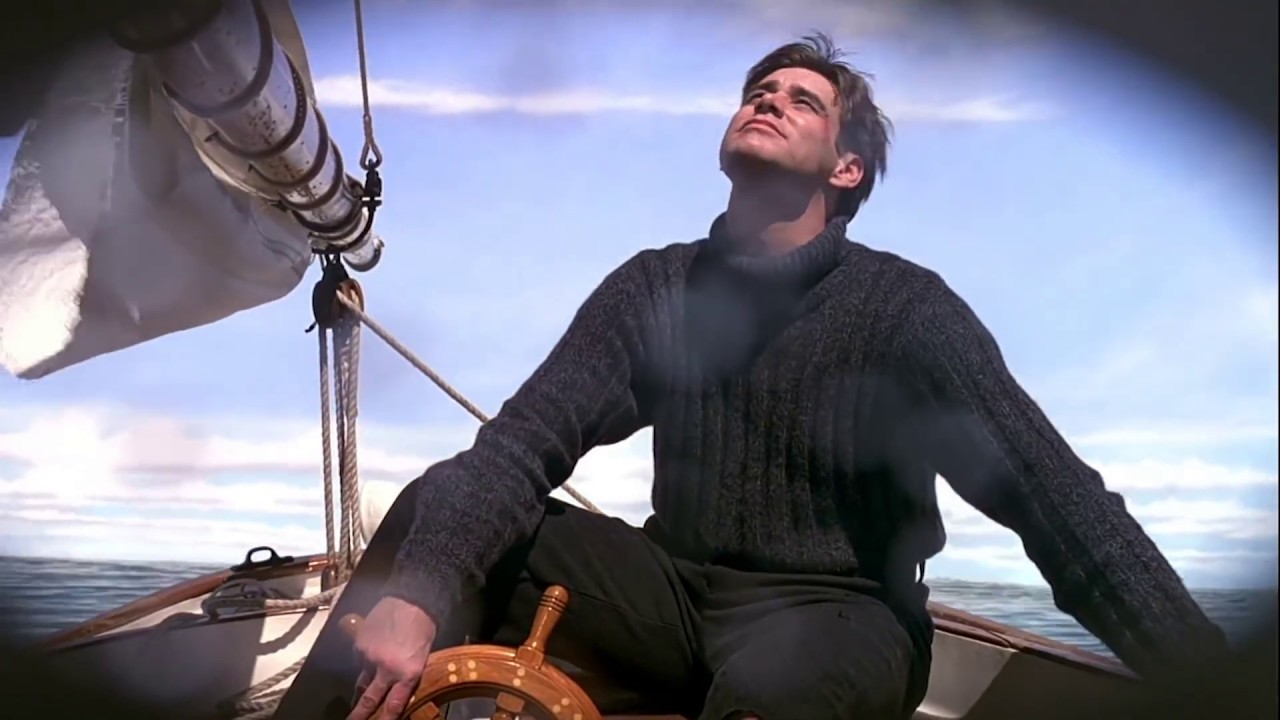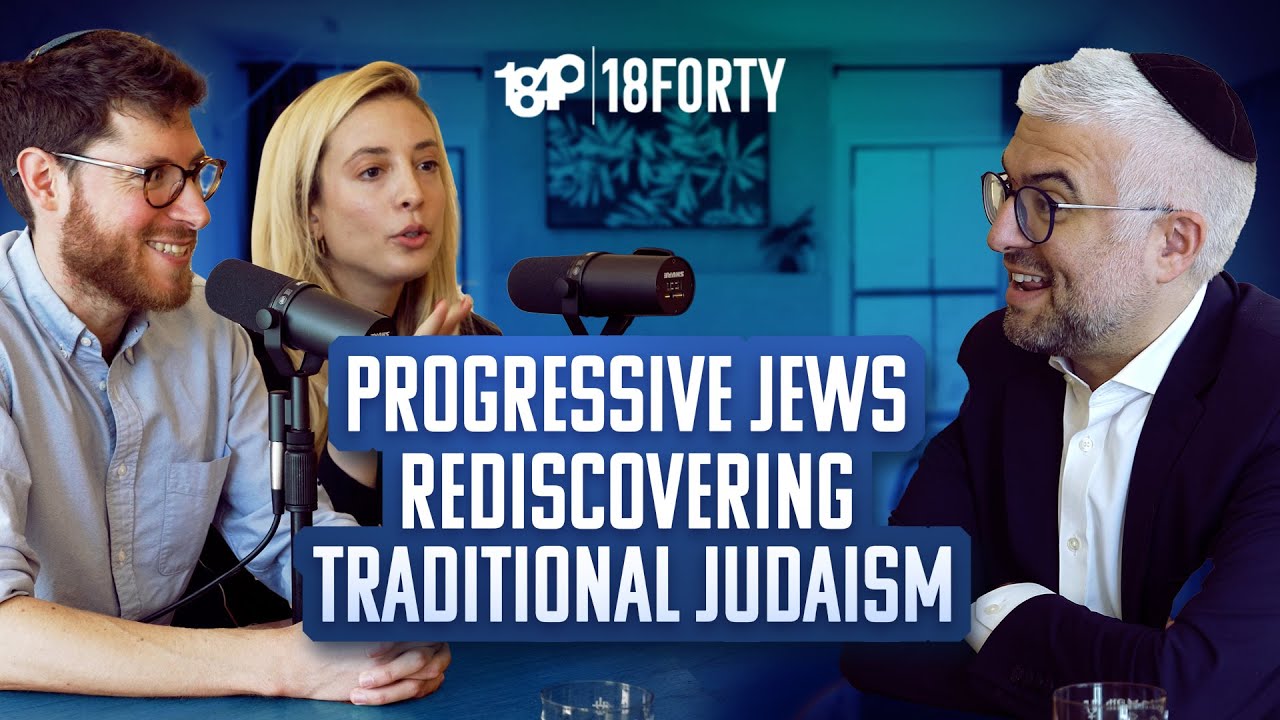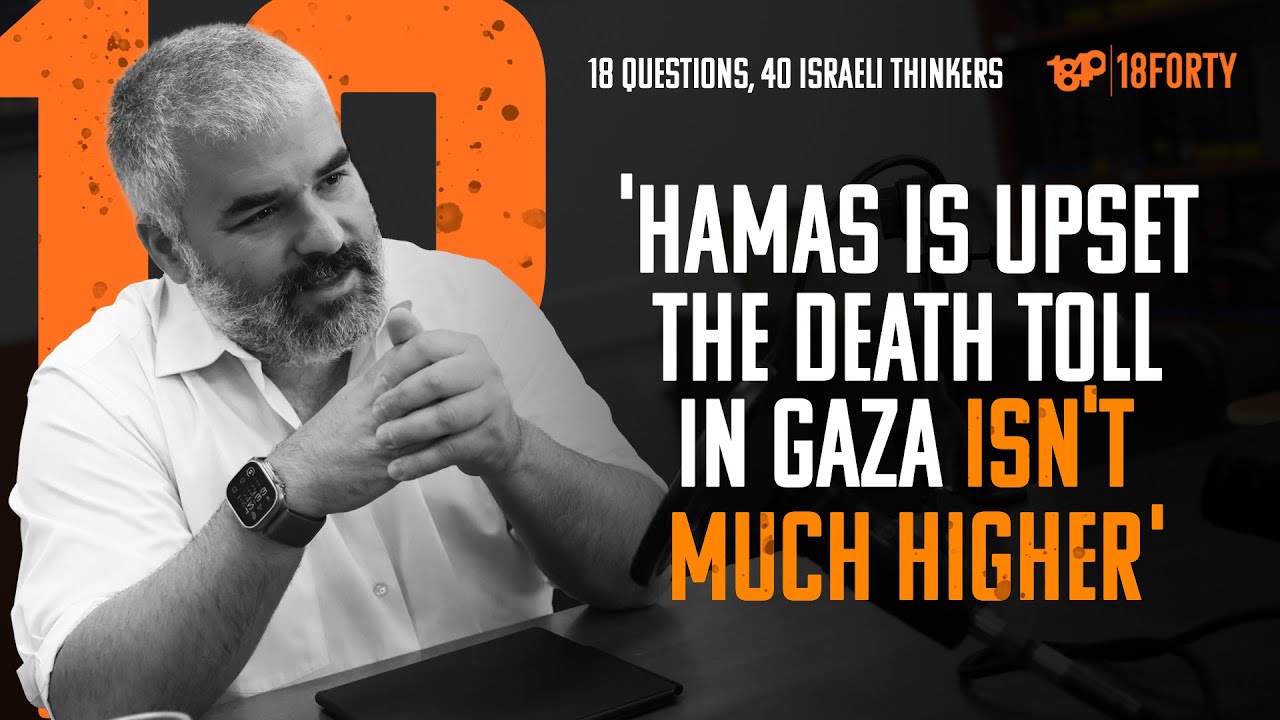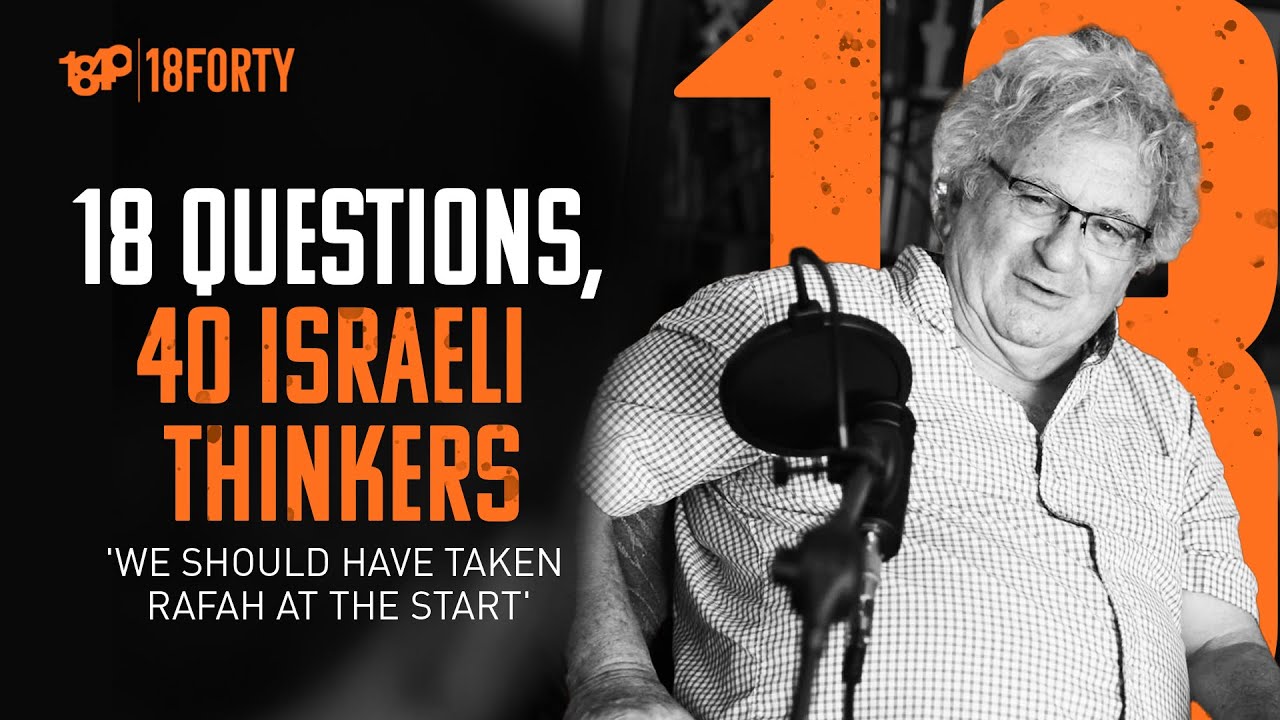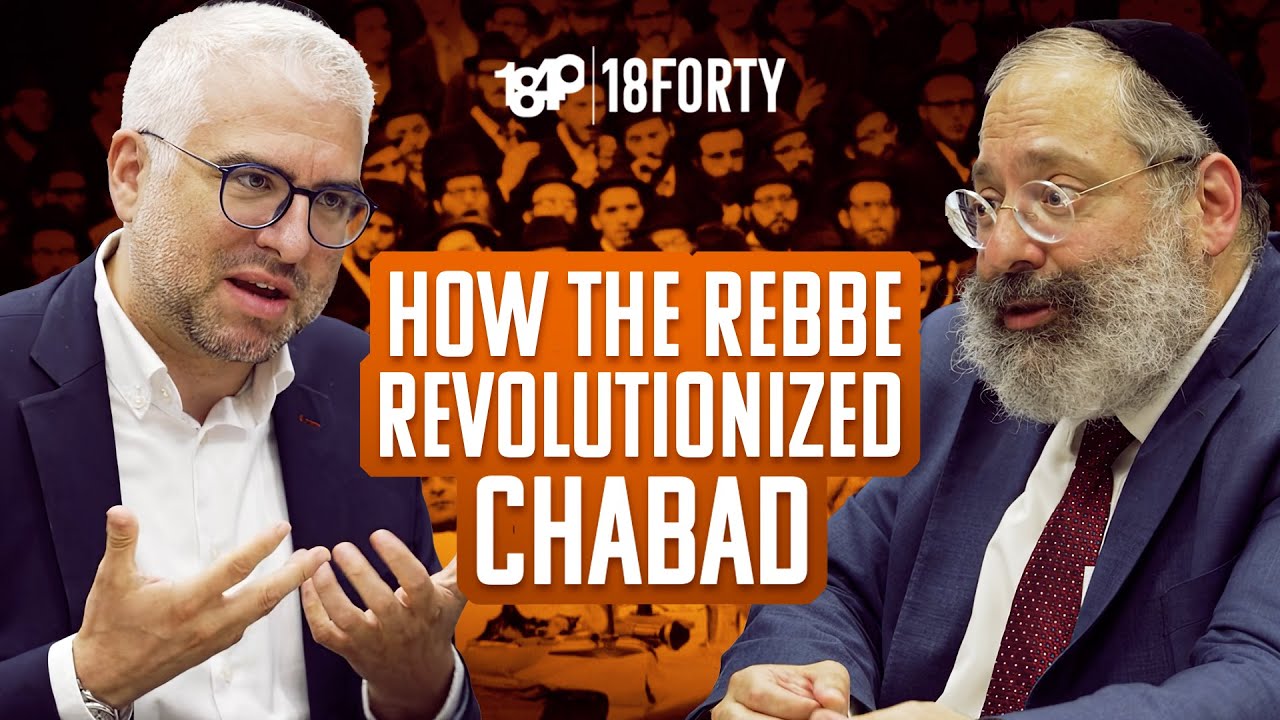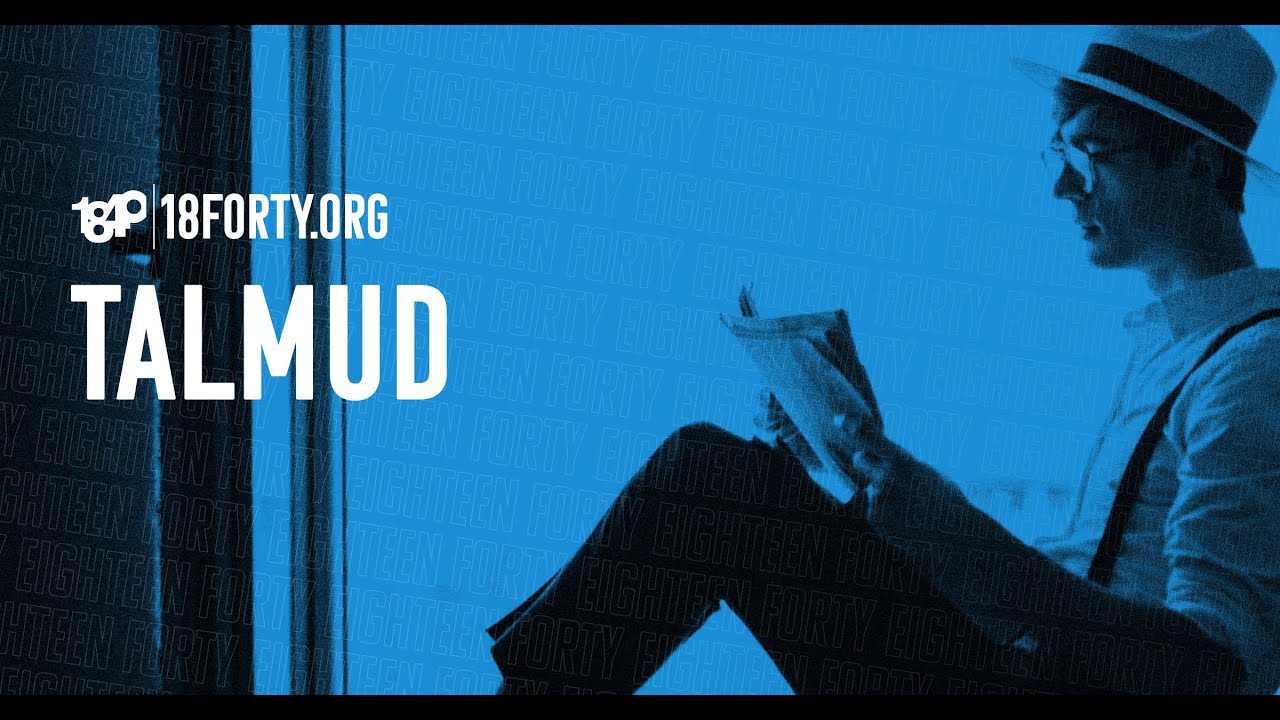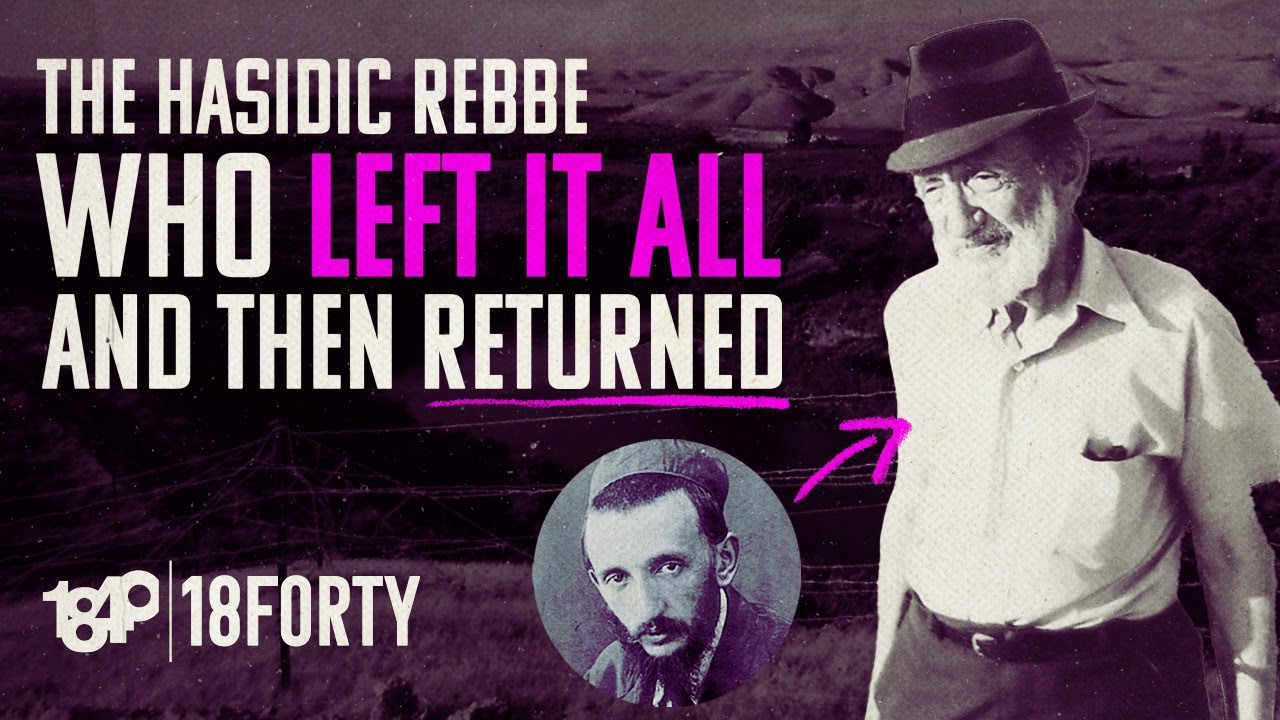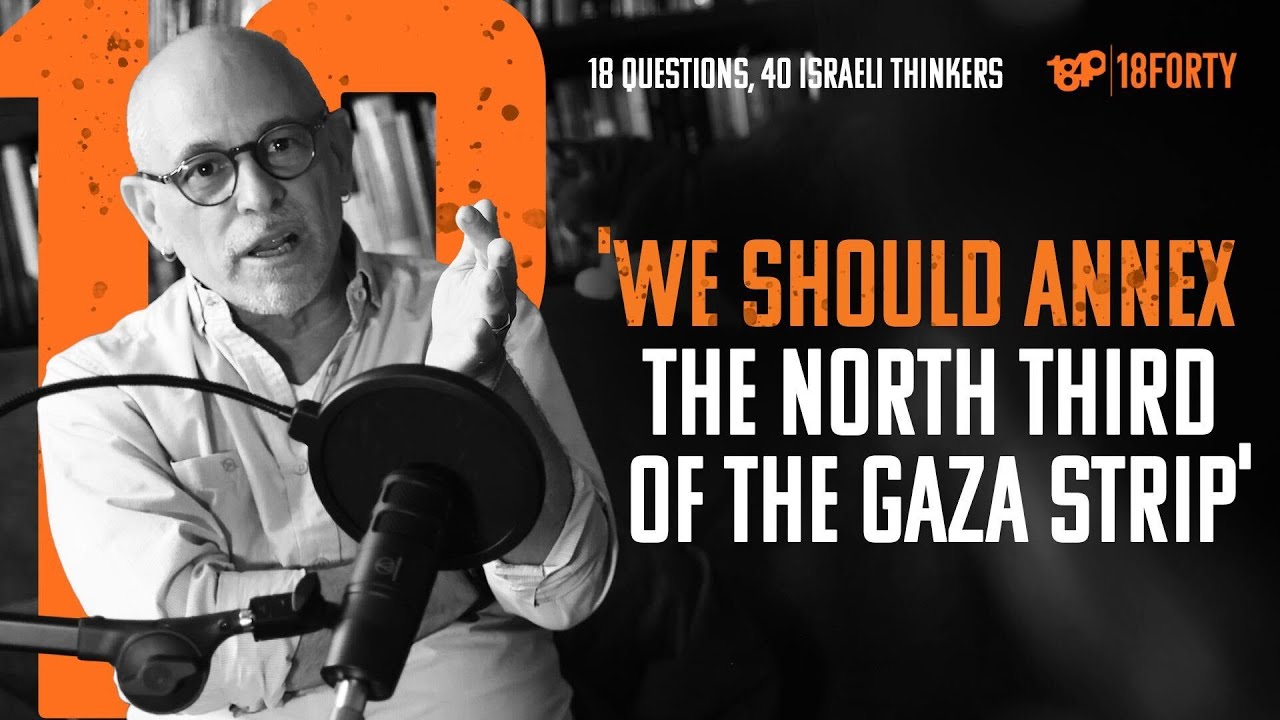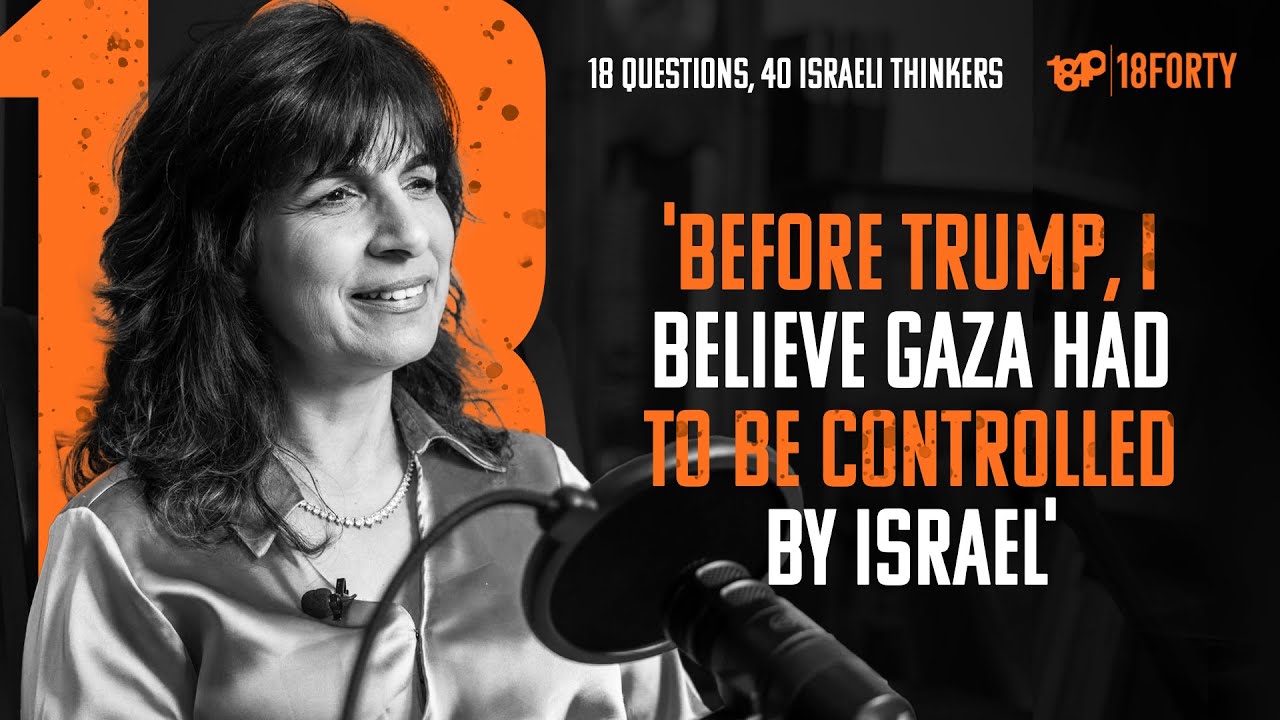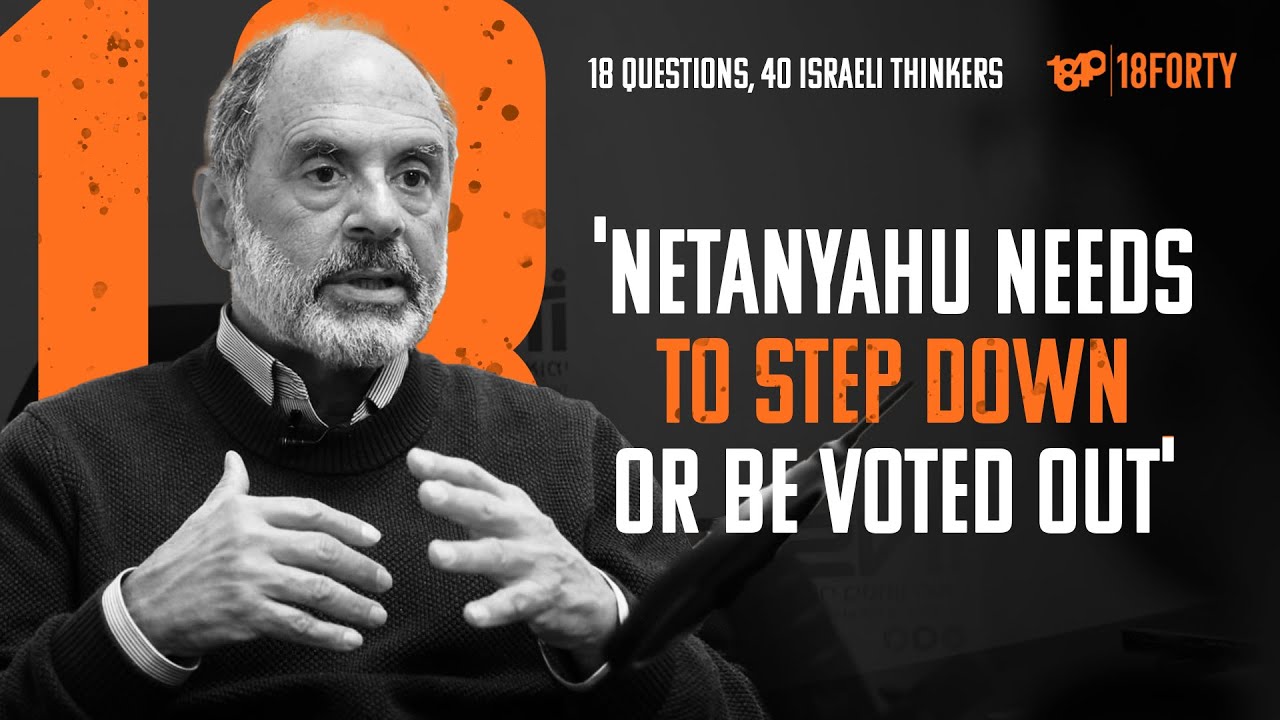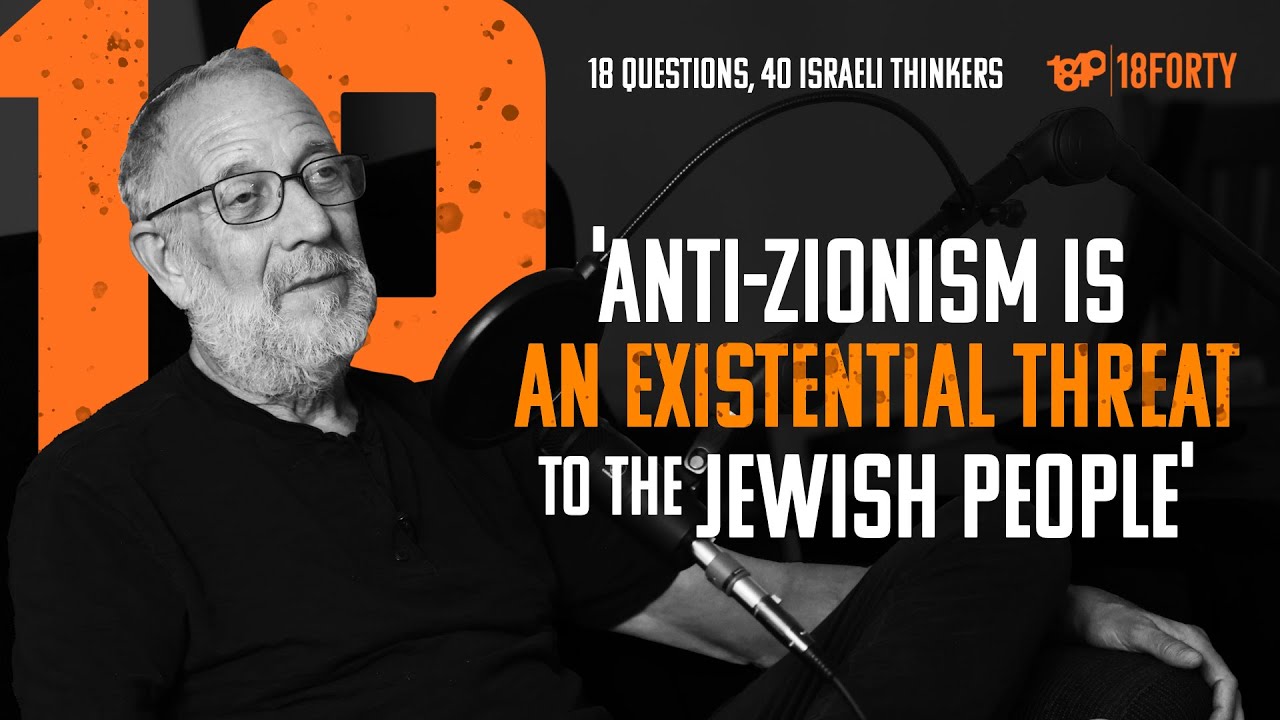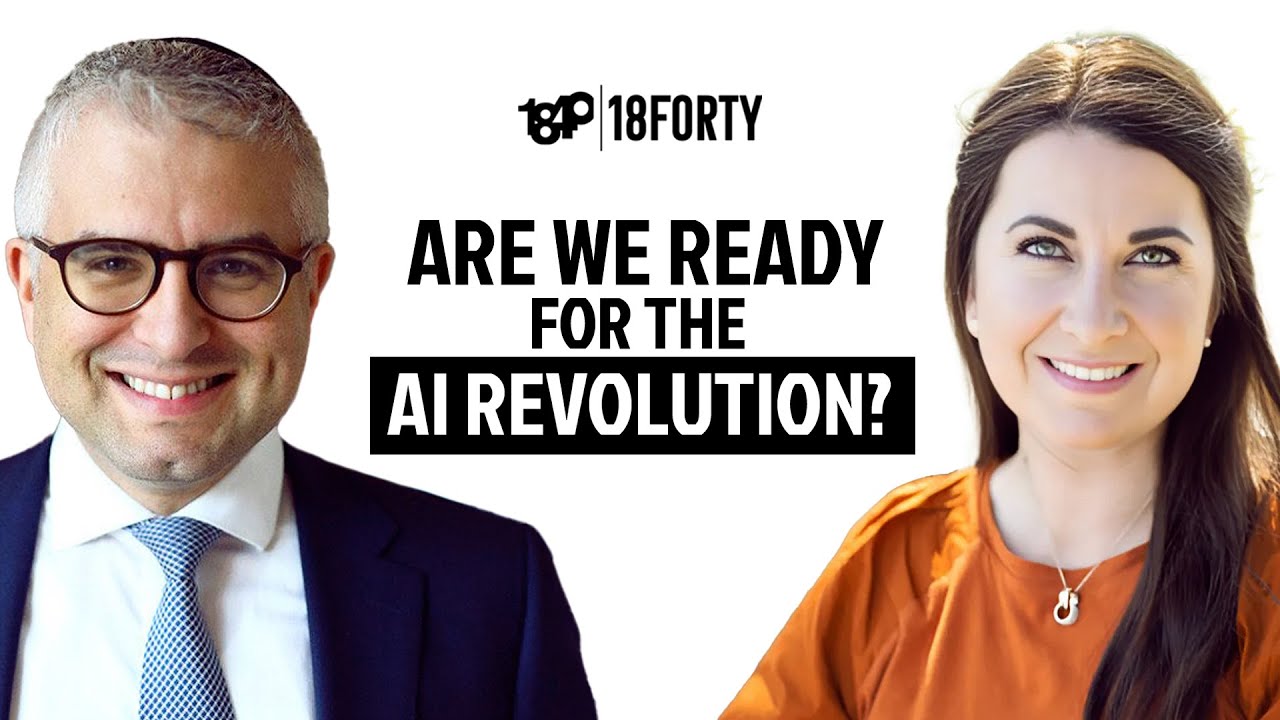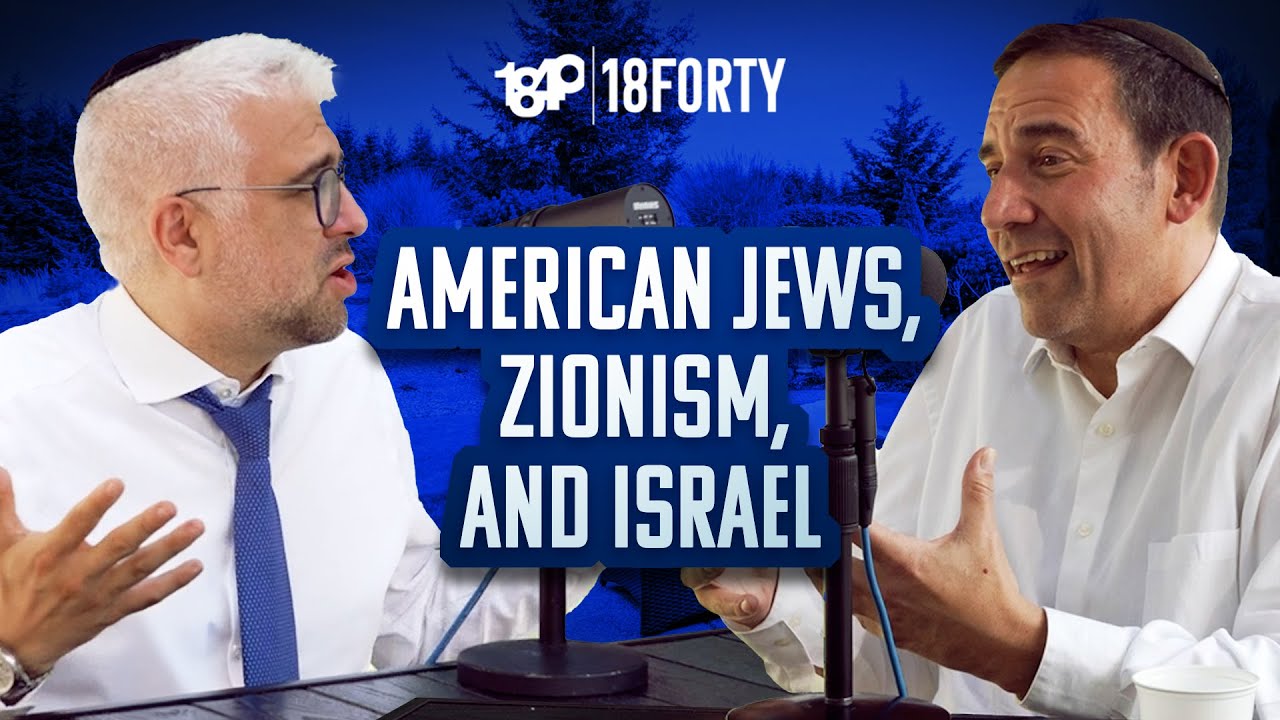Leslie Ginsparg Klein: The Culture of Jewish Education
In this edition of the 18Forty Podcast, we talk to Dr. Leslie Ginsparg Klein—an expert on the history of Orthodox girls’ education—about the value of education for all people.
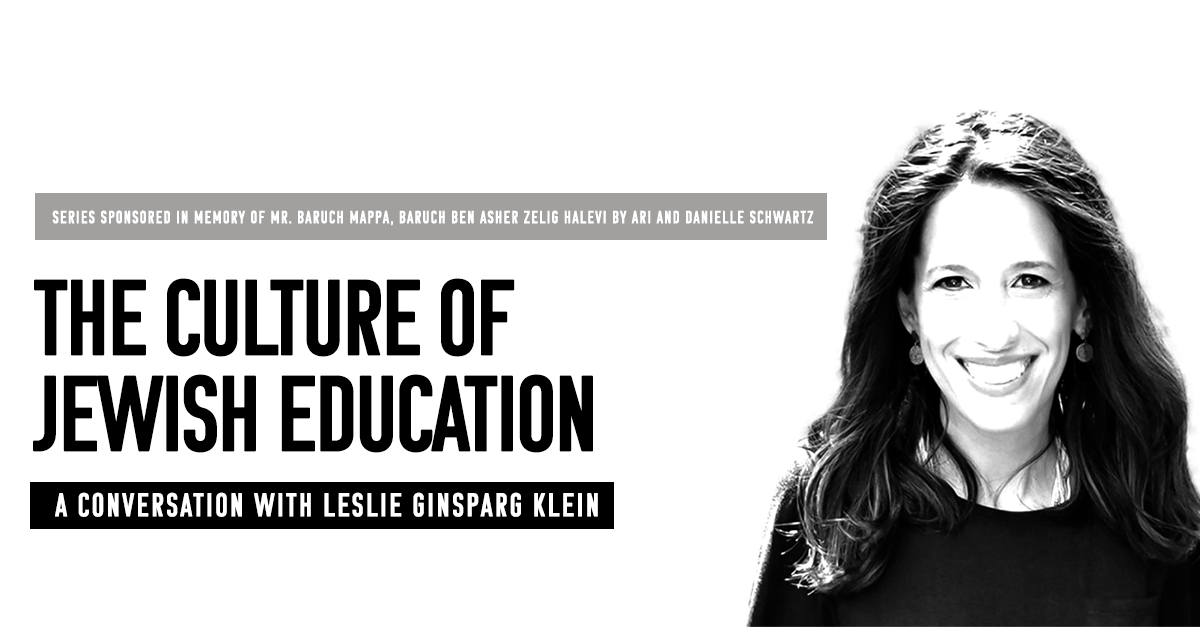
Summary
This series is sponsored by Ari and Danielle Schwartz in memory of Danielle’s grandfather, Mr. Baruch Mappa, Baruch Ben Asher Zelig HaLevi.
In this edition of the 18Forty Podcast, we talk to Dr. Leslie Ginsparg Klein—an expert on the history of Orthodox girls’ education—about the value of education for all people.
With the founding of the Bais Yaakov movement, Sarah Schenirer sought to create a culture of education that was inclusive to the marginalized. Over a century later, we encounter a related but simultaneously new set of challenges. In this episode we discuss:
- What made the early Bais Yaakov movement both controversial and revolutionary?
- What would Sarah Schenirer think of the state of Jewish education in the 21st century?
- Are graduating adults still in need of education and youth programming?
Tune in to hear a conversation about the indispensability of Jewish education from the early 20th century to today.
Interview begins at 29:30.
Dr. Leslie Ginsparg Klein is the Academic Dean of Women’s Institute of Torah Seminary & College, an Orthodox Jewish college for women. A scholar and author, Dr. Klein speaks on Jewish history, Tanach, leadership and communication skills across the United States and internationally. Dr. Ginsparg Klein received her Ph.D. from New York University, where she researched the history of Orthodox girls’ education in America and the Bais Yaakov Movement.
References:
18Forty Podcast: “Yitzchak Breitowitz: Navigating Controversy”
18Forty Podcast: “Yisroel Kaminetsky: The Goal of Jewish Education”
Sarah Schenirer and the Bais Yaakov Movement: A Revolution in the Name of Tradition by Naomi Seidman
Reading Jewish Women: Marginality and Modernization in Nineteenth-Century Eastern European Jewish Society by Iris Parush
In Her Hands: The Education of Jewish Girls in Tsarist Russia by Eliyana R. Adler
Jewish Girls Coming of Age in America, 1860-1920 by Melissa R. Klapper
Transcript
David Bashevkin:
Hello and welcome to the 18Forty podcast, where each month we explore a different topic balancing modern sensibilities with traditional sensitivities, to give you new approaches to timeless Jewish ideas. I’m your host, David Bashevkin, and this month we’re exploring the state of Jewish education.
Thank you so much to our series sponsors, Danielle and Ari Schwartz, who are sponsoring this series in honor of Danielle’s grandfather, Mr. Baruch Mappa, Baruch Ben Asher Zelig HaLevi. This podcast is part of a larger exploration of those big juicy Jewish ideas, so be sure to check out 18forty.org. That’s one eight F-O-R-T-Y . org, where you could also find videos, articles, recommended readings, and weekly emails.
A few years ago I was traveling out of town and I gave a lecture for a Friday night, fairly chilled out over dinner. Anytime that you speak and there’s food out, I always… And I handed out source sheets. My joke that I always make is, the source sheets essentially are going to be napkins. You don’t have to get freaked out. Nobody likes… I don’t know nobody, but most people don’t like getting source sheets at their Friday night scholar and residence lecture. But this was fairly relaxed environment, and the lecture was about the top five people who shaped American Judaism that we know today. And it ended up turning into a wild controversy, one that I don’t have time to get into now, but I have spoken about before. I’m curious for you, for our listeners, if you were to ask who are the five people who shaped the Judaism that we know today, and I’m talking in the United States, I’m talking specifically American Judaism, I’m curious who you would come up with.
I’m going to tell you who was on my list and why. I’m not going to go through all five, but I’m obviously highlighting one. But I’m curious who would be on your list. Five people who shaped the Judaism that we know today in the broadest sense. And here was the list that I came up with. The first person on the list is definitely the most controversial. It was an absolute uproar afterwards of why I included him. And that person is Moses Mendelssohn. I don’t have time to get into why I included him, but basically in a nutshell I included him because I think, particularly in the United States, where we’re adjusting to the notion of the separation of church and state, the person who really reimagined religious commitment in a world where we cannot be coerced by the state into our religious communities was Moses Mendelssohn, most famously in his book Jerusalem.
Obviously some people in the crowd, when I spoke about that and highlighted him, both because of their own historical ignorance, to be quite blunt, and they were just generally triggered, and I don’t think I led off with somebody who in their minds was somebody who’s a role model for the community, though I happen to be in many respects a fan of Moses Mendelssohn and his writing, which is obviously very misunderstood throughout history. But that was number one, and that caused the uproar.
The other three, before I get to the reason why I’m actually including this, I’ll tell you in a nutshell. One was Rav Moshe Feinstein, who I believe was the one who really created consensus in America for how Jewish law and halakha was going to respond to modern technological developments, sociological developments that came up in America, and even outside of the Orthodox denomination. So much of the ways that other denominations, and certainly within the Orthodox community, really begins with any modern problem of Jewish law, very often begins with how Rav Moshe Feinstein dealt with this issue, and had an outsourced weight in the way that the community responds to modern technological questions.
Number four of course was the Lubavitcher Rebbi, Rav Menachem Mendel Schneerson, and really reshaped the way Jewish observance, Jewish commitment, worked in the United States of America, how people felt and expressed their Jewishness. Things like… Again, he didn’t invent these things, but the notion of the campaigns for people lighting Shabbos candles and putting on tefillin and a world of Jewish identity in the modern world, I think in many ways was shaped by the Lubavitcher Rebbi.
And finally the last one, I skipped number two, was Elie Wiesel, who I think in many ways gave language for the American Jewish community to process the Holocaust. Now, obviously whenever you do one of these lists, you’re doing it to provoke. They’re not exhaustive. I’m sure many people would have other people on the list, and we get very upset that people will get left off. When I gave this over in this out-of-town community, it’s a smaller community, not tiny, but a smaller community, people were very upset that I did not include Rav Aharon Kotler, the founder of the Lakewood yeshiva. They felt that was a tremendous oversight. They were really furious that I included Moses Mendelssohn. When I say furious, I really can’t understate that enough, like outrageously furious. Still boggles my mind today how worked up they got about it.
But number two is why I am mentioning this today, and that is Sarah Schenirer, the founder of the Bais Yaakov movement. Now, why did I include her? Maybe somebody more cynical would say, you can’t have a list today and not include any women, and she was a champion of women’s education. And in my mind, reflecting on the legacy of Sarah Schenirer as a champion of women’s education and that moderator of women, I think, is grossly underestimating really the scope of her legacy, and how she absolutely reshaped Jewry, particularly in America today. And mind you, as far as I know, I don’t believe she ever visited even America. I hope I’m not wrong on that. She certainly lived and is buried outside of the United States. I believe she’s buried in Kraków, near the shul of the Rema, of Moses Isserles, but she was not an American. But I believe that her legacy absolutely reshapes America, and I believe that it is in two ways.
Number one, there was an absolute crisis going on in Europe. We love romanticizing what was happening in Europe. We love thinking everybody was in yeshiva and everybody was in their homes and learning from their mother and their father and becoming greatly devout, committed Jews. And much of that is true. The ability to stray was maybe… The field of vision of how you could leave the community was definitely much harder and much higher, to really leave the Jewish community if you were living in some small shtetl, wherever you were, was much higher. But the stakes were actually quite high in that time, in ways that our jaws would drop, you’d fall out of your chair, of what issues they were dealing with.
One of the major issues they were dealing with in the early 1900s was Jewish women going into prostitution. There was somebody named Bertha Pappenheim, and all of this is recorded in an absolutely phenomenal book that we listed on the website for further readings for this month, and that is the book by Naomi Seidman, Sarah Schenirer And The Bais Yaakov Movement: A Revolution In The Name Of Tradition. This is just an absolutely phenomenal book, and really I would urge all of our listeners, no matter whether or not you send children to a Bais Yaakov, I do not, none of my sisters went to a Bais Yaakov, whether or not this is part of your worldview, it is a movement that is severely misunderstood and an absolute must-read. And Naomi Seidman, who is a phenomenal professor and writer, just wrote this outstanding book of just a piece of Jewish history, how this schooling system came about.
And she quotes this person, Bertha Pappenheim, who was ringing the bell. “There are an immense number of young women,” she writes, this is Bertha Pappenheim, “mostly in Russia and Galicia, who fall into prostitution even while they are living with their very religious parents.” She was worried. People did not have the connection to the community and were being lost in ways that, if we knew that this was going on in Europe then… We wring our hands too about the way people express their Jewish identity and stay on and stay connected to the community. They were dealing with a real crisis, and people were absolutely concerned.
So what did Sarah Schenirer exactly contribute? It’s usually framed as, she created a school system for Jewish girls, and that is absolutely true. The Bais Yaakov movement began to service Jewish girls. But I believe it was so much more than that. I think there were two major contributions, much of which we talk today in conversation. Number one, it was a commitment and a sense of certainty that, if Jewish education is not for everyone, we are going to lose Jewish children. It was the knowledge in that time, Jewish women were not getting an adequate education, but it wasn’t just about, we need to educate Jewish women in a gendered approach, though that obviously played a major role. I believe it was something even larger than that, that if you want to have a sense of certainty that your children are going to remain connected to our community, the only vehicle for that is Jewish education. Jewish education needs to be framed in a way that, if you are Jewish, this is something you need, if we are committed to the fact that Jewish children growing up in our community are going to have a Jewish future.
It was an insistence upon Jewish education as a part of Jewish identity. And that’s something that I believe we take absolutely for granted. We always talk about Jewish education as a value in our community. Of course it is, but it has changed drastically where we believe that it is nearly impossible, it’s very, very difficult, if you have not been afforded a Jewish education, it is very hard to sustain your Jewish identity, nearly impossible without a Jewish education.
I believe the revolution of the Bais Yaakov movement hammered that into the heads, not just of the establishment of the community, Jewish leadership, but in the hearts of the Jewish world. We realized that, if you want to raise your kids and have them remain connected to the Jewish people, part of that process is a Jewish education.
And the second revolution that I believe Bais Yaakov kicked off is not just who is Jewish education for, but maybe even more broadly, what is Jewish education? The fact that they were introducing Jewish education to women, where it has been gendered for so long, I believe forced them to reimagine, what exactly is a Jewish education? And it gave them a wider canvas to imagine what Jewish education is. It was different than in many yeshivas where Jewish education was tailored for an elite, it was tailored for a population that was going to go on to become leaders in Jewish law, to become poskim, to become Jewish educators themselves, and give very high level classes and write high level works of sheilas and teshuvas and responsa literature.
They knew it needed to be something different, because certainly at that time the notion of Jewish education for a common person who was not going on to lead a life immersed in Jewish law, and professionally part of their identity and service to their community was going to be their Jewish education . Somebody said everyone. So if everyone needs this, we have to reimagine what this “it” is. If we in fact believe that, in order to remain tethered to the Jewish community, the vehicle of assurance for that, the best vehicle of assurance for that, is a Jewish education, then that assumption is going to force us to reimagine, what exactly is Jewish education? What exactly does that mean?
It’s not going to mean immersion that everyone is going to be poskim, everyone’s going to be decisers of Jewish law, everyone’s going to be deeply immersed in Talmudic analysis. It’s going to have to mean something else. And it was the first step of imagining what a Jewish education for all is actually going to mean. Now, their population obviously was extraordinarily gendered. They were creating a system that was targeted for women. But the questions that they raised, if in fact we are expanding the reach, we are expanding the mission of Jewish education, it’s not just for the elites, it’s for everyone, it is to retain and preserve our very Jewish identity, then we are forced to ask a very hard question. What is the Jewish education that is going to preserve that identity?
And I believe in the Bais Yaakov movement, as we discuss today, and why I wanted to have the conversation today with our guest, Professor Leslie Ginsparg Klein, was in order to highlight the cultural revolution within Jewish education that I believe Bais Yaakov created. I think if you grew up in a Bnei Akiva community, if you grew up in schools that had like a Shiriyah , a color war, these cultural experiential events, I believe in many ways, no matter how far it may seem from the original idea given the population they serve and whatever denomination you’re a part of, I believe that in many ways the great-great-grandmother visionary for the idea of Jewish education having a deeply rich cultural component was born out of the Bais Yaakov revolution, that the Bais Yaakov revolution was really two things. Number one, a revolution that Jewish education is for everybody, that part of being Jewish requires an element of Jewish education. And number two, if it in fact requires a Jewish education, we need to reimagine and ask new questions about what that Jewish education is.
And that is really at the heart in so many ways of the 18Forty project. What in fact… It’s a question we’re still grappling with, and it’s a question that really animates the entire project of 18Forty. What is the Jewish education that everyone is entitled to that will preserve our connection to the Jewish community?
And it really splits in two major ways. Number one, it’s a question of what should we be teaching? And the second question is, when should we be teaching? The first question, what should we be teaching? This is the founding question of 18Forty. When we first started, my partner in this project, Mitch Eichen, came to me and he wanted me to develop curriculum for our high schools. And I pushed back on him, and you can listen to our conversation, we have it online, it’s a conversation literally where we talk about this project. We have it on our website. I think it’s on the about page. I don’t know if it’s hidden deliberately, but you could find it there. But there’s been a deliberate shift in our education that I actually believe in that is much more experiential. It is much more about Yiddishkeit caring for you and caring about you.
I think in many ways it is the Yiddishkeit that was expressed in our first interview in this series by Rav Yisroel Kaminetsky. It is first and foremost the school stepping in and presenting a model of Judaism that ensures that it is for everyone and that everyone can find their place in Judaism. Now, that comes at a cost, without a doubt. It comes at a cost of dealing with some of the maybe more controversial, more difficult, more information driven questions of, I don’t know, questions that we’ve dealt with on 18Forty. Questions about pedagogy. Should we be including biblical criticism? Should we be including foundational questions about what is the Talmud, academic questions that come up, to prepare them later on for life? Which is really the second part of this question of what is Jewish education, which is really, when is Jewish education? When should we be doing this? When should we be introducing these things?
Some say younger. The original idea for 18Forty was, let’s introduce the most controversial topics in, maybe not ninth grade, but at least in 12th grade, so people are equipped. The language that we used in 18Forty was like exposure therapy, so when they step out into the world, they don’t feel like the carpet was pulled out from underneath their feet. I actually pushed back on this. I think that it is healthy and good, and it risks too much if we begin introducing these things at a younger age. I think we need to focus on building that very rich connection to your Yiddishkeit, to your Jewish identity, very basic core competencies in knowing about Shabbos and the Yuntifs and learning basically how to navigate basic Jewish literacy. How to read and write in Hebrew I believe is an absolute core. How to find your way around the Chumash and around the Talmud. Just know the basic corpus of literature. You don’t have to be a first-rate scholar. I don’t think that should be the goal for all schools. But that basic Jewish literacy and that deep, deep cultural connection.
But this is a question that schools are still grappling with, because there is a sense that if we swing the pendulum too far into the direction of the experiential, we are setting up our graduates for failure. And after the conversation that I had with Rav Yisroel Kaminetsky, my rebbi, I got an extraordinarily incisive email from someone who I would call a friend of the podcast. Her name is Shayna Goldberg. She is a phenomenal educator, and she sent me an email that contends with some of these points, and I would like to read it. It is my own mistake that Shayna is not a part of this conversation.
It’s part of the difficulty of talking about Jewish education. I almost need to set up my listeners for disappointment. Jewish education, because it is such a broad topic of what it covers, both in terms of formal day schools and yeshivas… Are we talking about elementary schools? Are we talking about experiential education? Talking about camping? Are we talking about youth movements? Are we talking about the gap year? Are we talking about adult education? And I have no doubt that there are people who are going to listen to this series and they’re going to be disappointed. There’s no way to cover everything. And part of the reason why I established and wanted to do this series now is because it’s something that I wanted to begin scratching the surface at, and I hope it’s one of those topics that we’re able to come back to every year. We have many topics that we return to over and over again. We do teshuvah every year before the high holidays. We try to talk about intergenerational divergence before Pesach, and we always do a comedy episode before Purim.
I think a part of the founding idea of 18Forty is that we need to return over and over again, we’re not just a Jewish education podcast, but a topic that always hovers is the state of Jewish education. And this is the email that Shayna Goldberg, who I really do hope to have on in the future… She has an absolutely phenomenal book that I really like that is called, What Do You Really Want? Where it’s really a book that explores self-awareness. And I was never sure when to invite her. She was always on the shortlist of, we should find a time to speak, because I feel like we have so much to discuss, and we’ve exchanged emails over and over. That will absolutely happen. But in the meantime, until it does, I want to read to you the email that she sent, because I think it highlights so much of the tension of that foundational question of, what is in fact Jewish education? And this is what she wrote.
Hi, David. I hope you and your family are doing well. Thank you for the meaningful work that you continue to do for our community. So many interesting and important conversations. I listened with great interest to your recent podcast with Rav Yisroel Kaminetsky. My husband Judah and his family were close friends with the Kaminetskys in Teaneck for many years, so we know them well and have so much respect for them and their educational approach. Everything that was said deeply resonated, and I particularly identified with the point that every student needs to feel that they are seen, that they’re getting personal care and attention, and are loved and valued as a unique individual who has what to contribute.
I also agree that the ultimate main goal of a good Jewish education is that students feel connected to and excited and positive about their Judaism, and that they want to continue to pass it on to the next generation. And of course, along with that, an essential component is that they be given the tools, the knowledge, and skills to know and love Hashem, and are taught the content to understand what Judaism is all about.
I spend a lot of time thinking about the educational system, the flip out culture around the year in Israel, the fallout that often happens months and years later, and the many adults that are socially orthodox but unfortunately do not feel a real and deep connection. I therefore really appreciated when you asked, how is it that a student can go through 12 years of yeshiva day school education, plus another year or two in Israel, and still emerge not feeling engaged with their Judaism? In our quest to inspire kids and make them feel connected to Judaism during high school and their year in Israel, I worry that perhaps sometimes a rather simplistic approach to religion is being presented.
At its best, there is a feel-good version of Judaism that relies heavily on powerful moments of davening, singing, dancing, and all night mishmars, as well as dynamic and often charismatic personalities. And at its worst, uses guilt and fear and sometimes outright manipulation to encourage growth and more serious commitment. While there is so much to say about this second category, meaning fear, guilt, et cetera, and the destruction that it often causes years later, I think that the first and more positive category sometimes also plays a role, and carries some responsibility for the fallout or more gradual disconnection I described above.
I personally totally agree with everything discussed on the podcast, and I’m in favor of finding all ways to help students feel inspired and connected, especially in elementary school and ninth and 10th grade. It might be okay and even appropriate and effective for this to be the undiluted focus, maybe even more so today when schools are often playing the role of giving over an experiential element of Judaism that ideally children should get from their home. As kids get older, however, and enter their junior and senior years of high school, and especially as they move into yeshiva, seminary, and adulthood, I think that it’s so important to also introduce them to complexity, to raise the really difficult questions that they either already have but might be afraid to acknowledge even themselves, or will have in the future and to expose them to the way that Judaism deals with tough issues in nuanced, sophisticated ways, and knows how to live with questions.
They can be taught that Judaism embraces questions, not because we think we have all the answers, but because we value and understand questions and challenges to faith to be part of our living experience, and are not scared by them. Students could also benefit from being exposed to role models with humility, who feel comfortable sharing in appropriate ways their own struggles, questions, with their students, and who are open with them about how they themselves deal with these issues, rather than pretending life is hunky-dory all the time, or that nothing ever troubles them religiously.
In the moment, it might be hard for young adults to handle the complexity, but in the long run it could also be the vaccine that gives them the immunity to be better equipped to struggle with future issues that they are bound to face. As they enter adulthood, there are many young people who can begin to feel disconnected from the simplistic, even if inspirational Judaism they were exposed to, and which is often all they know. As they mature and find the world to be more complicated, that brand of or approach to Judaism can appear to them to be falling short.
I believe that, as a community, we can be doing a better job of continuing to do all the inspiring things we already do, while also not shying away from the harder stuff that is a part of real life. The combination of warmth, that love and positivity, together with an honest humility, nuance, and straightforwardness that gives tools to live with questions, doubts, and life challenges, while also remaining deeply committed, can give students a strong foundation and anchor that can hopefully help them weather their more turbulent internal and external challenges, and take responsibility in mature ways for their Judaism.
I think it is this complexity and honesty that you bring to your podcast and which clearly appeals to so many people. Your recent conversation with Rabbi Breitowitz directly addressed some of the topics. I hope that we can think of ways to successfully bring more of that to our educational system in high schools, yeshivas, and midrashot. All the best, Shayna.
Now, this was an incredible email, and a part of me wants to even publish it online, and I am so heartened that it is literally in many ways encapsulates everything that we try to do on 18Forty. But not everybody agrees with her. And I want to highlight that and make that absolutely clear. I agree with her, I disagree with her in terms of what age this should be introduced, but I know a lot of people who disagree with this model. How do I know? Because they let me know. The people who I probably get the most pushback from are the teachers in yeshivas and seminaries. They do not like… I’m not painting with a broad brush. Many, very vocal, do not like what we do. I wish they came to me directly rather than to others, as I mentioned before. But there are major figures in the yeshiva and seminary world who really don’t like what we’re doing here. They totally disagree. I think they disagree with this email entirely, or they certainly disagree with what we’re trying to do at 18Forty.
But I don’t think there’s a way to agree with this email and totally dismiss what we’re doing at 18Forty. I think that there is a battle, there’s a tug of war in the community of when, if ever, should we be introducing complexity? Because it does introduce risk into people’s Jewish identity. And for me, I believe that our educational institutions from K through 12 are best equipped to really invest in this cultural deep Jewish identity formation. And I actually pushed back at Mitch Eichen when he first suggested it, and I gently disagree with Shayna that I don’t think 11 and 12th graders by enlarge on the mass level are really all that ready or interested in these more complex discussions and questions. But I do believe it happens afterwards.
And I also know firsthand… And the haters who listen to me know who I’m referring to. I’m not referring to you, Aryeh. I love you and I love your feedback, because you send it directly to me. But there are other educators in the yeshiva and seminary world who don’t come to me in partnership. They come to undermine everything I do. And they undermine everything I do because they don’t believe that there should be these kind of conversations happening. And we’re not going to be talking about that now in this conversation. I do hope to do a separate series just examining the gap year phenomenon, what is happening there, what’s going on there. Maybe that will be the focus of our Jewish education series next year, next time around, because I do promise to return to it, because there’s so much to unpack. The finances, the different ages, people with learning disabilities, people in terms of curriculum content. It’s endless. And short of becoming a Jewish education podcast, which I kind of like the topical model, and I hope you agree with me on that, but it’s something we absolutely need to return to.
And I’m so grateful to Shayna Goldberg for reaching out with such an articulate presentation of this model. It’s a model that I absolutely believe in, even if we may disagree on a matter of when. But more importantly, it is a model that I believe is being debated in Jewish educational institutions. Who is doing this right? Who is introducing complexity in a healthy way, in a way that the community can rally around? Is a question that I think is taking place. There is a tug of war of whether or not this should be happening at all. And I know that directly from firsthand experience. And I am so appreciative to her for articulating this in such a clear way, because it is definitely at the heart of our struggle for Jewish education.
And with that all in mind, and that is a very long introduction, write in your letters, write in the hate mail, that was definitely way too long and I’m sure Denah, our editor, is going to give me a lot of pushback for that as well. But I am still so excited to have this conversation, which is really on the other end of the spectrum, which is about how schools, particularly the Bais Yaakov movement, invested in that cultural Jewish identity formation in the schooling system. And it was somebody who was an absolutely incredible scholar, educator, and thinker. It is my absolute pleasure to introduce… She is the academic dean of Women’s Institute of Torah Seminary and College, an Orthodox Jewish college for women. She wrote her PhD on the cultural universe of the Bais Yaakov movement, a phenomenal work that I was lucky enough to read. The title of her dissertation is Defining Bais Yaakov: A Historical Study of Yeshivish Orthodox Girls High School Education In America, 1963 to 1984. It is my absolute pleasure to introduce our conversation with Professor Leslie Ginsparg Klein.
So I am so excited for our conversation with somebody who I’ve only met once, but have been following her writings for some time. It is my absolute pleasure to introduce Leslie Ginsparg Klein.
Leslie Ginsparg Klein:
Thank you for having me. It’s a pleasure to be here.
David Bashevkin:
We’ve met once, and I always ask, it’s a running joke on 18Forty, if you’re comfortable with me calling you, Leslie. We’ve met…
David Bashevkin:
… if you’re comfortable with me calling you Leslie. We’ve met once or twice. You are a dean of a fairly well-established women’s school in Baltimore, but that’s not why we’re having you on today. We’re having you on today because you have one of the most fascinating expertise that I’ve ever come across, and that is the religious culture that emerged from the Bais Yaakov system.
Leslie Ginsparg Klein:
Yes.
David Bashevkin:
Right? I want to make sure I’m characterizing that correctly. So before we get into the heart of your research, I want to start with a little bit about you and a little bit about the history of the Bais Yaakov system. I did not go to a Bais Yaakov. It’s all girls’ schoolings. My sisters did not go to a Bais Yaakov. My parents split. The boys went to single-gender schools and the women in our family went to co-ed schools.
Leslie Ginsparg Klein:
Oh, that’s interesting.
David Bashevkin:
Yes. I wonder if they would still do the same. My parents have drifted, particularly my father, to a little more Yeshivish, but he sent the girls to HALB, which was co-ed, and he sent the boys to South Shore. That was always a big distinction in our family.
Leslie Ginsparg Klein:
And HALB is co-ed in high school also, or it’s separate in high school?
David Bashevkin:
It’s separate in high school. We have three older sisters. They all are graduates of HALB. I and my brother are graduates of South Shore, so they bifurcated. We don’t have any Bais Yaakov relatives, though maybe my niece in Israel went to a Bais Yaakov. But I’m curious, where did you go to school? What universe are you emerging from, so to speak?
Leslie Ginsparg Klein:
I grew up in Chicago. I went to a co-ed modern Orthodox Zionist elementary school and then I went to a Bais Yaakov high school. Now, when I say a Bais Yaakov high school, that is still a Bais Yaakov high school in Chicago that served as a community school, what I would call a Bais Yaakov community school. So Bais Yaakov, but there’s a real qualitative difference between an out-of-town Bais Yaakov when it’s the only girls’ school option in the city and Bais Yaakov in Borough Park.
David Bashevkin:
Oh, sure. And something that I’m always fascinated by, not just the differences in Bais Yaakov, but the differences in all schooling between in-town and out-of-town. And in-town schooling, because of the density, you could get a critical mass. You could start a school for every shade of Jewish life and observance within the community, as opposed to out-of-town, I think it requires something that’s been lost within the tri-state area of learning to come together under one roof for educational purposes.
Leslie Ginsparg Klein:
Right, 100%. And there is a massive difference in the way Bais Yaakov developed in New York, even within New York, within Brooklyn, versus you could compare Brooklyn to the Five Towns and it’s different, but that’s certainly different than the way Bais Yaakov developed in Chicago, in Cleveland, in Toronto, which is actually more similar to New York than it is to other out-of-town cities, just based on whether there were other girls’ options in the city and what school started first.
David Bashevkin:
Maybe we could start at the very beginning. Bais Yaakov was famously founded by Sarah Schenirer. Tell me a little bit about why it started. What was it trying to accomplish? And was it controversial when it first started, because there is a very gendered history, not just in the Jewish world, but in the global world between the education that men and women have gotten throughout history. And I’m curious, when she began this movement, was it controversial? Why was it not framed as a more progressive movement, so to speak?
Leslie Ginsparg Klein:
Oh, it was at the time. It was controversial. It was revolutionary. Sarah Schenirer started Bais Yaakov in response to realities in the community around her that were happening for men and for women, that assimilation was rampant. Women were converting to Catholicism, not out of any religious awakening, but because it was a way to escape the home. When compulsory schooling laws started in Poland, so then many girls were attending secular state schools, what we would call public school today, boys also attended, but girls attended in greater numbers. And even at times, if there was a quota, the government was expecting a certain number of Jews to attend, so the community sent girls in order to not send boys.
David Bashevkin:
Wow. So, it was really gendered.
Leslie Ginsparg Klein:
Oh, 100%. I mean, yes. I don’t think they probably saw it that way at the time. They more saw it as, well, men have a fear of internal learning. So, I mean, for hundreds of years, it was a communal responsibility.
David Bashevkin:
They had this obligation. Exactly.
Leslie Ginsparg Klein:
Yeah, yeah. There was a communal responsibility for educating boys. Boys were educated at least until age 13, and then if they had potential, longer, but let’s say every boy got an education until age 13. If parents couldn’t afford it, the community paid for it, but there was no similar sense of responsibility for girls’ education. Most poor girls would’ve gotten no education at all. Wealthier girls would maybe have a tutor. A private tutor would’ve taught them to read Hebrew. Some girls went to cheder, either with their brothers or to special cheders for girls. Again, this would be more the elite and they would drop out before any real intense learning took place, if they were in a boys’-
David Bashevkin:
And it was the minority, correct?
Leslie Ginsparg Klein:
Oh, yeah, for 100%, it was the minority, but the community considered it very valuable for girls to have a secular education. And if somebody in the family was going to get a secular education, why not send girls?
David Bashevkin:
Oh, fascinating. There is this minority who’s getting what we would almost assume now is a classical, proper Jewish education straight through high school. That’s what we’re accustomed to.
Leslie Ginsparg Klein:
Boys.
David Bashevkin:
Boys now, yeah. But that was then-
Leslie Ginsparg Klein:
Yeah. But even then, even the boys who were going to cheder, if you would read descriptions of these chederim, they’re a little bit frightening. You’re talking about holes in the walls and it’s not like they went to a high school. They’re learning in the community beis medrash and eating at different people’s homes different days and sleeping on benches. It’s not like education was really well-established for either, and that would become a communal issue globally. It wasn’t just girls’ education that became an issue. It was also a need to improve boys’ education, but I’m getting ahead of myself.
When the community confronted modernity and girls are going to school where they’re learning secular ideologies, girls are in the workplace and because of the industrial revolution, work’s not at home anymore. Women were always working, especially Jewish women were always working, but work was situated in the home, but all of a sudden you have a reality where work is out of the home and because of financial changes… The community was really, really poor and it didn’t make sense to keep women out of the workplace, so you have women both in secular school environments and in secular work environments, where they’re exposed to all the isms of the time, socialism and communism, and they have no Jewish education with which to balance what they’re learning. Their secular studies are really cool and interesting and they don’t really have a Jewish education and Judaism really seemed backward and archaic and something that was holding them back.
And you start having massive, like I said, massive issues. There’s assimilation. You have girls running away to the city, and not even in random families. There’s a famous story, Rachel Manekin writes about two women, young women, from the Sanz Haredis family, ran away to a convent, and then sued their parents for financial support to pay for them to go to university. It was a massive scandal. What’s interesting is your parents’ educating of your family is somewhat resembling what happened here of parents making the choice to say, “Hey, I want my boys in a more traditional cheder environment, a traditional Jewish studies environment, but for my girls, I actually want them to go somewhere where they’re going to get a stronger secular education.”
David Bashevkin:
Take me to the point where Sarah Schenirer formally establishes the Bais Yaakov.
Leslie Ginsparg Klein:
Okay. She’s growing up with this around her. These are her friends. These are her contemporaries. Okay? She’s not the first person to say, “Maybe the lack of Jewish education’s a problem.” The issue was debated in newspapers. It was debated amongst the leadership in beis medrashes, but nobody was taking action on it because the belief of the community was that girls’ Torah learning was at least socially unacceptable, if not outright forbidden by Halacha.
David Bashevkin:
Just translate that for us.
Leslie Ginsparg Klein:
There’s a statement in the Talmud that a man who teaches his daughter Torah, it’s as if he taught her, and then there’s a lot of ways to Tiplus, but let’s say immorality.
David Bashevkin:
Okay. There’s a very gendered history that stretches all back to the Talmud, of a hesitation of having the equality of learning. And she’s seeing this, the lack of Jewish, probably her own friends. I don’t know if she ever… She kept a diary. I don’t know if she-
Leslie Ginsparg Klein:
She did keep a diary. She did keep a diary. She writes about how she was always very religiously inspired and she was teased for that. I mean, they made fun of her. They called her the The chassidish.
David Bashevkin:
Really?
Leslie Ginsparg Klein:
Yeah. Yeah. She was teased. They used to call her the chassidishe, which I would translate as Little Miss Frummy.
David Bashevkin:
Little Miss Frummy.
Leslie Ginsparg Klein:
Little Miss Frummy. Yeah. They made fun of her. They made fun of her for it, but she was always very committed to learning and she went to public school until she was 13, and that’s when compulsory schooling ended. Her family was poor. She couldn’t afford to stay in school. She wanted to stay in school, so she continued her secular education through lectures and reading and she had a self-taught Jewish education. She taught herself through reading. She learned Chok l’Yisrael, she learned the standard Sanerana, the standard fare for women, but she also was learning things that were a little bit higher level and Chok l’Yisrael is something that has a daily portion of Chumash, Navi, Mishna, Gemara and she’s learning that, and she was self-taught.
David Bashevkin:
To be able to read Hebrew is a phenomenon. I’ve mentioned this a few times and it’s stuck with me, and I should be a kapara if she’d never wanted me to share this, but my grandmother who served as a rebbetzin in Portland, Maine, my grandfather was a first graduating class of Chofetz Chaim. My grandmother never learned how to read Hebrew. She would bench in English and growing up, to me, it was scandalous. I didn’t realize how almost all people, my grandmother was born in 1917, that wasn’t so unusual to have somebody who could not read Hebrew.
Leslie Ginsparg Klein:
This is a fun fact that most people don’t. Now, Sara Schenirer’s native language was Polish. She was primarily a Polish speaker. For the Bais Yaakov movement, she started writing more in Yiddsh, but actually, her first language was Polish and probably when she was learning, she was probably learning in Polish translation. I don’t know that she would’ve had the Hebrew language skills or certainly she couldn’t have learned Gemara in Aramaic.
David Bashevkin:
In its original Aramaic, for sure. This is many, many decades before ArtScroll or other mass translations. There may have been a few trickling out. Take me through when you think, and obviously we’re indebted. There’s this wonderful book that I know … I was going through your dissertation, some of your articles, and I saw she even has notes and suggestions. Naomi Seidman-
Leslie Ginsparg Klein:
Yes, she’s a close colleague. She’s an outstanding historian.
David Bashevkin:
She wrote a phenomenal book on this subject and I just want to call that out. I don’t remember the title, but we’re actually going to lead to it.
Leslie Ginsparg Klein:
Revolution in the Name of Tradition.
David Bashevkin:
What do you think, in your conceptualization of it, why do you think this movement through Sara Schenirer was successful? What did she do differently?
Leslie Ginsparg Klein:
There are two things that really she did. She really writes in her diary. She was very committed. She really wanted to help girls. She really didn’t see that as being possible. Sarah Schenirer is an unlikely person to become a famous leader. She was poor, she was a woman, she was divorced, in a society where any one of those things would have kept her from leadership. She didn’t have the privilege that sometimes leads someone to become a leader.
David Bashevkin:
Can I jump in because I wasn’t sure if you were going to mention it. I also know that she was divorced. It seems to be like it’s a fact that is still whispered within-
Leslie Ginsparg Klein:
It is. It’s obscured. I don’t know why.
David Bashevkin:
It is obscured. Is that my own imagination or-
Leslie Ginsparg Klein:
No, it’s obscured. No, absolutely not.
David Bashevkin:
It is obscured.
Leslie Ginsparg Klein:
It’s obscured.
David Bashevkin:
And she doesn’t hide the fact. I believe in her diary, she does mention that part of why she was divorced is that they were on different levels in terms of their own maybe sophistication, their own-
Leslie Ginsparg Klein:
And he didn’t support her. I don’t think he was supportive in her desire to change the world and be a real leader and a contributing force. I don’t think he was really supportive. I don’t think they were on the same wavelengths. I don’t think they probably weren’t the greatest shidduch to begin with. She writes in her diary, she had major hesitations about marrying him before she married him, but it certainly wasn’t not a happy marriage.
David Bashevkin:
But there’s a modernity of spirit in my mind for somebody in that era ending a marriage for those reasons. That strikes me as unusual. I know people, I’m not going to call out names, who grew up in that era, family members of mine who, you could imagine growing up in the late 1800s or hundreds, early 1900s. You stay together once you’re together. It always struck me as a certain courage of spirit that she was in a marriage that was not working for her and it ended. That always struck me as an unusual fact, though I understand why it’s whispered because of all the social conventions that obviously still endure.
Leslie Ginsparg Klein:
Yeah, but it’s a shame because I think that’s inspiring to women, especially to women who are divorced, but even to not. It’s inspiring to know that there was someone who had adversity in her life and overcame it.
David Bashevkin:
Continue. I’m sorry I interrupted.
Leslie Ginsparg Klein:
Yeah. Okay. Everything about her from birth, the fact that she lived in a society where no really cared about religion and she’s talking about God’s creations right and left, I mean, she was to some, a nonconformist her whole life. Even as a child you can see she’s a nonconformist, but really what she cites as a turning point for her was during World War I, which was a massive upheaval for the Orthodox community. Her family ends up in Vienna and she ends up in the shul of a follower of Rav Hirsch, and she becomes exposed to the ideology of Rav Hirsch.
Now, Rav Hirsch’s writings hadn’t made it into Poland. The Polish rabbinic leadership generally didn’t think that Rav Hirsch’s writings were applicable because they didn’t have reform. They hadn’t confronted modernity in the same way. Ultimately, that would prove not accurate and that there was a crisis happening in Poland, but she’s exposed to Rav Hirsch, who by the way, believed in educating girls and women. And she believes that this … Rav Hirsch provides a framework for responding to modernity in an intellectual way, that if she could import this back into Poland, then for sure all of these girls and women would want to be connected to Judaism. They would see the beauty that she sees, so that’s really what inspired her. Her first dream was actually not to start a school for young girls. She wanted to start a youth movement, the same way that socialism had their youth movement and communism had their youth movement. There was going to be Bais Yaakovism. She wanted to start a youth movement, but when she tried, she failed because the teenage girls looked at her like, “Are you nuts?”
David Bashevkin:
And it did fail.
Leslie Ginsparg Klein:
It failed, absolutely failed. She tried, she tried again, it failed. And then she realized that for the most part, the teenage girls were too already impacted by the secular ideologies and by modernity and instead, she decided to pivot and go to teaching younger girls. Now, a couple things happened. Okay, so she starts. You asked me what was different. Okay, what was different? Two things were different. Number one is she just did it. She did it. She started a school. In a sense, Naomi Seidman points this out, that because Sarah Schenirer was a woman, she could sidestep that whole rabbinic debate that had paralyzed the communal leadership and she just started a school. She just did it.
She started a school in her workshop for a bunch of girl local girls and it was successful and it was her success that spoke for her. She’s successful and people hear about it and the community starts to, “Hey, we got something here. Let’s support this woman. She’s doing something that’s really working,” and then other communities hear about it and before long, she had a school system going. There were a whole bunch of-
David Bashevkin:
In Europe.
Leslie Ginsparg Klein:
… local schools in Poland.
David Bashevkin:
In Poland.
Leslie Ginsparg Klein:
At this point in Poland. Now mind you, these were all afternoon schools. These were not full day schools. Girls went to public school and then they went to Bais Yaakov. And in Europe there were a few day schools, what we would call today a day school in a few big cities, but the vast majority of Bais Yaakov schools were afternoon schools after girls attended public schools.
David Bashevkin:
Now, maybe answer this question, because it’s always a part of the story when we’re told it over, about the role of rabbinic approval. When I heard the story, before she set up anything and moved forward, she first rallied around and got the approval and acceptance of rabbinic leadership. Did that occur before or was it more post facto?
Leslie Ginsparg Klein:
It was post facto. And honestly, she never was the one who really got approval. She had a close relationship with an older brother who was a close student of the Belzer Rebbe, who’s Belzer Chassid, so she wrote to the brother. She’s like, “I’m starting this school,” and the brother said to her, “You’re getting involved in something really, really political here,” and she’s like, “I’m doing it.” So he said, “You know what? Let’s go. Let me take you to the rebbe and we’ll see what he says.” And he takes her to the Belzer Rebbe and writes a Kvittel, a little note. They give a note to the rebbe and I’ve seen this story retold with these long, verbose conversations between Sarah Schenirer and the Belzer Rebbe. None of that ever happened. The only source of this meeting is her own account and her own account says that the brother wrote a letter. The note said, “My sister would like to lead Jewish daughters in the Jewish way,” and the rebbe said, Bracha Vhatzlacga” It was a very vague, open-ended request.
David Bashevkin:
Oh, it’s perfect fodder for the mythology to build out for that. I’m sure there’s a full book just on that meeting. And that’s part of the beauty of it that we-
Leslie Ginsparg Klein:
There’s a lot on that meeting.
David Bashevkin:
We mythologize our meetings. To me, it’s actually quite moving, I’ll be honest. As I hear you retelling it, it reminds me even in a way, and people are going to hate this analogy, but just on the top of my head, it reminds me a little bit of the starting of 1840, of seeing a certain need. Nobody really paid attention when we first started because we weren’t really doing all that much and there were a couple people saying, “Maybe you should get a couple approbations lined up or whatever is,” but no one really pays attention until you build a critical mass, which sounds like didn’t initially happen for her.
Leslie Ginsparg Klein:
Right, but also, this whole concept of collecting approbations is very modern. I don’t even think it would’ve occurred to her. Why? Who wouldn’t … I don’t even think it would’ve occurred to her. And if it had occurred to her, she wouldn’t have access to any of these rabbis. I mean, the one that I laughed the hardest inside about is the Chofetz Chaim. The Chofetz Chaim, first of all, wrote a letter in support of Bais Yaakov in 1933, this school started in 1917, but in what world was Sara Schenirer going to visit the Chofetz Chaim in a completely different country on opposite sides of World War I? That meeting is not happening. They’re physically on opposite sides of a battle-
David Bashevkin:
An active war.
Leslie Ginsparg Klein:
… of a war, of an active war, and she’s traveling across countries to get an audience to the Chofetz Chaim as if that’s happening? I actually, sometimes it cracks me up the lengths. There was a video produced by a Bais Yaakov school about the history Bais Yaakov, and they showed a picture of the Chofetz Chaim and there’s a woman standing behind him. It’s a famous picture, you’ve probably seen it, and it’s of Sarah Schenirer at the home of the Chofetz Chaim. That’s the Chofetz Chaim’s wife. That is not Sarah Schenirer.
David Bashevkin:
I know exactly what picture you’re referring to. It’s better than the possibility of them putting on a play of Sarah Schenirer like an army person crawling through enemy lines.
Leslie Ginsparg Klein:
I know. Don’t worry. There are plenty of plays that have the scenes of her talking to the Chofetz Chaim. It never happened. It never happened, but that brings you another point, is timing. She hit really good timing because after World War I, the Orthodox community in many ways, in the educational system, were just in shambles because there had been such an upheaval and it really broke … A lot of what keeps people connected is their communal connections and World War I just tore them apart. They’re all running in different, people are running away in different places, and it broke the parental, I don’t want to say, control. The parental-
David Bashevkin:
The familial unit as its own cultural preservative.
Leslie Ginsparg Klein:
Yes, thanks you. That, right, correct. And also, the same with yeshivas. They weren’t there. It was all torn apart. So after that, there was a greater recognition of a need to modernize education, standardized education. And at the time, there was a new, real progressive organization, I would even call it a radical organization, founded by followers of Rav Hirsch, who had come in to import that into Poland to try to improve many things about orthodox life in Poland, but also very much education in Poland. You might have heard of it. It’s called Agudat Yisrael.
David Bashevkin:
Yes.
Leslie Ginsparg Klein:
So, this radical organization came in as, “We have to build-“
David Bashevkin:
Reimagine the very structure of our community.
Leslie Ginsparg Klein:
Reimagine, right. One of their big tasks was improving education and they went about improving boys’ education, but also, they really wanted to girls’ education because they really felt that girls were even more tainted by “secularism” than boys. And they’re going to do that when they hear, when someone said, “Hey, you know what, there’s a woman in Krakow who started something and it’s taken off.” So Agudat decides, that instead of starting their own thing, they will partner with Sarah Schenirer. So Agudat was controversial in many respects. The Belzer Rebbe was against Agudat. The Sanzer Rebbe was against Agudat and Belzer Rebbe was really influential. So, at that point, when Agudah becomes more involved, so Agudah starts trying to line up approbations. And mind you, this was never asking permission. No one ever asked permission, but it was, let’s get approbation so that when there are people opposing Bais Yaakov, we can hand them these letters of approbation. And the letter from the Chofetz Chaim is actually written to the rabbi of the town, who was blocking Bais Yaakov from starting in his town. Sarah Schenirer writes about this. She writes to a student, “Oh, we’re having trouble with the rabbi, but the Agudah wrote to the Chofetz Chaim and he’s going to send a letter and the letter’s going to be published in the Bais Yaakov journal.”
David Bashevkin:
Wow. And we rarely think about it like that, the very strong opposition and that the Chofetz Chaim’s letter, it reframes the whole thing. You think this was the initial letter of the approbation. It was nothing of the sort. It was-
Leslie Ginsparg Klein:
No, this is 20 years.
David Bashevkin:
It was stopping total backlash.
Leslie Ginsparg Klein:
This is 20 years later and … Correct, and yeah, it was stopping backlash, but beyond that, do you think that ended it? When you hear the mythology, it’s like, “Oh, the Chofetz Chaim wrote a letter and all opposition ended.”
David Bashevkin:
And that ended it.
Leslie Ginsparg Klein:
No, there’s opposition after. There’s opposition dated after. They’re still talking about it. Even that letter didn’t. They had The Gerer Rebbe, they had Rabbi Chaim Ozer. They had all the Agudah people. The same rabbis that supported Agudah supported Bais Yaakov, because Bais Yaakov was an Agudah project.
David Bashevkin:
Who brings the Bais Yaakov idea to America? Because in America, and the way that we see it now, is so different from this ragtag entrepreneurial upstart that seems bare bones.
Leslie Ginsparg Klein:
Right, which by the way, it started, but by the time the Holocaust started, I mean, Bais Yaakov was in operation. I mean, there were three central offices. There were official curricula. There were publications. The laugh is Sarah Schenirer originally wanted a movement. She got her social movement 25 years later. It was a full-blown social movement. There were summer programs, there were camps, there were youth groups, there were publications. There was the seminary in a massive, modern, gorgeous building. It became real and that’s something that really, Agudah money helped bring. She didn’t have that kind of financial backing. Agudah threw their full resources and Agudah grew in this same time period. Agudah became mainstream and became a real force.
David Bashevkin:
Take me through the next historical piece about how it comes to America, and then I want to zoom out and talk about how I feel this has absolutely reshaped the way we think about education.
Leslie Ginsparg Klein:
Okay, so 1924 is Immigration and Naturalization Act, it cuts off European immigration to a great extent, and from that point, there is a little bit of a cultural cutoff. The idea of Bais Yaakov, people didn’t know about Bais Yaakov. There were attempts to start it in the late ’30s, but they didn’t succeed. And partially, that could be because the people starting it weren’t so firsthand involved in Bais Yaakov from Europe and also partially it was The Depression. There wasn’t extra money here. And again, in America, you have … Look, the Jewish community was in love with the public school system and no one really saw an issue with it, so for boys and for girls, I’d say predominantly, they’re going to public school. For boys though, let’s say the boys whose parents did send them to RJJ and Rebbe Jacob Joseph School, there were school options for boys. Their sisters were still in public school.
David Bashevkin:
My grandfather is a case. My grandfather was one of three. He had two brothers. He was the only one who insisted, from Springfield, New York with his good friend, Rabbi Bender’s father from Darchei, and they went to Torah of together, which was the new school to learn under what he always referred to as Mr. Mendlowitz from Shraga Feivel Mendlowitz, who’s one of the pioneer pioneers of Jewish education. As well, had eventually broke off to start Chofetz Chaim, but he was married to my grandmother who could not read Hebrew, a story that nowadays, to have not just a Yeshiva educated person, but a rav in a community married to somebody who does not even read Hebrew is nearly inconceivable that that would happen nowadays. I don’t think it was that unusual for that time necessarily.
Leslie Ginsparg Klein:
Not at all. But then you start getting the immigrants coming in around World War II, either right before, or refugees from the Holocaust, and when they came, they didn’t see going to public school as an option. They weren’t socialized in public school. They were coming from the context of Bais Yaakov. So those immigrants, so two people were successful. So Vichna Kaplan, who was a student of Sarah Schenirer in the Bais Yaakov Seminary, starts the first high school and seminary in America. And a Rabbi Avraham Newhouse, who came from Europe, starts the first successful elementary school, and that’s in the early ’40s. She started around her dining room table in the late ’30s, but effectively, these schools took off in the ’40s. By the end of the ’40s, there’s a bunch of school. It grows pretty quickly, and that’s part of the growth of the American day school movement.
David Bashevkin:
No, I’m so curious because one of the questions, maybe is misconceptions, is that Bais Yaakov is this central franchise.
Leslie Ginsparg Klein:
Not even a little bit.
David Bashevkin:
Yeah. Tell me a little bit now. It took off, it balloons, it’s all over America. There are so many communities that have Bais Yaakovs now. Is there any paperwork or any basic guidelines to call yourself a Bais Yaakov?
Leslie Ginsparg Klein:
No. David, if you want to start Bais Yaakov de Bashevkin tomorrow, you can just do that.
David Bashevkin:
It’s not a bad idea.
Leslie Ginsparg Klein:
No one could stop you.
David Bashevkin:
It’s not a bad idea. Was there ever an attempt to at least standardize it?
Leslie Ginsparg Klein:
Yes. There was an attempt.
David Bashevkin:
… Attempt to at least standardize it.
Leslie Ginsparg Klein:
There was an attempt in the ’40s. Obviously, in Europe it was standardized. There was essential office. You had to apply to start a basioco, and because of that, you’d never have competing Bais Yaakovs. You never have the reality you have today of multiple Bais Yaakovs. in the same city. Because why would they do that? You don’t compete against yourself. But in America, Bethany Kaplan is the Revson Kaplan. She’s the only one who got permission from when she moved to America, her husband was American learning in Europe, and she petitioned the central office and got permission to start a school in America. And that school, I think to this day, continues to believe that their school has greater legitimacy because of that, because it really is tied to the European movement. But anyone else, no. They just started schools and called Beis Yaakov. Now, what ends up happening is at one point in the 40s there is an attempt. I actually have the paperwork from that organization that tried to become an umbrella, but it fails. It fails.
David Bashevkin:
Why do you think it failed? Is that have to do with just…
Americans don’t want centralized institutions?
Leslie Ginsparg Klein:
Yeah, I think to a great extent, I think there’s two possible explanations. I think that probably is the primary explanation that it was just not America. America’s all about, we don’t have centralized institutions where we can do whatever we want, and there’s never really success in creating that umbrella organizations. It just doesn’t happen. The other reason that I have heard is that Rebbetzin Kaplan wasn’t a part of it, that this was more of an American men who are starting this and she wasn’t part of it because she had the legitimacy of European Beis Yaakov before you’re starting a new central office.
I don’t know. I have heard that.
David Bashevkin:
And her absence may have taken away the legitimacy, you’re saying?
Leslie Ginsparg Klein:
Some of it, yeah. That there wasn’t enough. I’m saying that, and I’m sure she wasn’t the only one, but there wasn’t a cohesive enough vision of what it should be or who should be the person in charge, which tags along both answers, but I really both answers, and I think they’re probably both true. And then her name’s nowhere there. Her name is nowhere in this organization.
David Bashevkin:
Whose name?
Leslie Ginsparg Klein:
Rebbetzin Kaplan. Yeah, she’s nowhere there.
David Bashevkin:
So, I want to talk a little bit about how the Beis Yaakov movement…
A lot of times when we talk about this, it’s usually framed as a pioneer in women’s education. It’s very often the qualifiers are in the Yeshiva community, the modern Orthodox community has nothing to learn or has nothing to do with Beis Yaakov. My sisters didn’t go to Beis Yaakov. So, why are we having this conversation here? It’s actually my thesis, and it could be yours and this isn’t coming from deep research. But that the person who we could contribute two things to that have totally reshaped the education that we know today is Sarah Schnier and the Beis Yaakov movement, and number one is the underlying notion that if you want to preserve continuity within the Jewish community, it’s going to be through the institution of schools. Schools are necessary as a vehicle, not for the elite to be able to become rabbis or to be able to study talmud at the highest level, but as a baseline in being able to remain and cultivate that culture. We need schools.
Leslie Ginsparg Klein:
Without a doubt, she viewed Beis Yaakov, not…
This wasn’t about teaching Dikduk and memorizing verbs. She really viewed schooling, basiaco of education, as creating a religious culture for these girls and these young women and creating a way for them to be Jewish. They didn’t have a way to be Jewish. They didn’t have that. What does that even look like? Sarah Schnierer was Chassidish, a] community that, Bais Yaakov in Europe was predominantly Chassidish What are they supposed to do on Yuntif? the men, their husbands, their brothers, they’re all gone. They’re gone. They’re with the Rebbi]. What are they supposed to do? They didn’t have a way, they didn’t have anything to do.
She literally created religious experiences for them and opportunities that lined up with the times where they would have nothing to do. So seudat shlishit time instead of when their fathers, their brothers are sitting in shul and singing and eating together, so Beis Yaakov had bnos, and they went and they sing together and they ate together. It literally replicated a religious culture and created that. It also created a…
I don’t know if you’ve ever heard of the Beis Yaakov Mesorah .
David Bashevkin:
No, I know very little about Beis Yaakov.
Leslie Ginsparg Klein:
I went to a play. Here was a bas mitzvah play in the local Beis Yaakov, but this is a phenomenon I’ve seen in hundreds of places, and they did…
They put on a play called Links in a chain .
David Bashevkin:
Okay.
Leslie Ginsparg Klein:
And each scene was a different woman, so it was like Sarah Rifka, Rachel leah, I think they did Yocheved, Miriam, they did Esther…
David Bashevkin:
Different biblical characters throughout history.
Leslie Ginsparg Klein:
And Sarah Schnier.
David Bashevkin:
And Sarah Schneir.
Leslie Ginsparg Klein:
And Sarah Schneir because Sarah Schneir is seen as the link between women today and all of the heroines of Jewish history passed. Not unlike the way that in the Yeshiva world, you also try to connect…
Well, my Rav was a Talmid of this Rav who was a talmid of this rav.
David Bashevkin:
Go back to the Vilna Gaon or something or go back to one central figure.
Leslie Ginsparg Klein:
You’ll see, “Oh, well my teacher was a talmida of Rebbetzin Kaplan who was a talmida of Sarah Schnier.
David Bashevkin:
And that connects us back to this portal…
Leslie Ginsparg Klein:
And that connects them back, and I think that’s something…
I think there are many ways…
Look at this different way. If you read the founding documents of Shulamith, which is not considered a Beis Yaakov per se, Shulamith modeled after Beis Yaakov. We want to model after Beis Yaakov, but Zionist. And actually today, Shulamith is invited to Beis Yaakov convention; and actually, I think Ska might also be invited to Beis Yaakov convention.
David Bashevkin:
I wanted to ask you about that because we only spoke about the first way that I believe the Beis Yaakov movement absolutely changed education, and that is the notion that part of preserving your Jewish identity is going to a Jewish school.
Leslie Ginsparg Klein:
Yes.
David Bashevkin:
That didn’t really exist in that. Now, we take it for if you want to preserve Jewish identity, you have to send your kids to Jewish school. There is a second way, and this is really what prompted our conversation, and that is that at the heart of schooling is not necessarily what I would call “information.” At the heart of education is not “information” that you are coming away with, but is cultivating culture.
Leslie Ginsparg Klein:
Yes.
David Bashevkin:
And I believe we are at the tail end of this realization that schooling, and at the heart of our schooling, it’s not a basic curriculum that I know that if I send my kid to a Jewish school, they’re going to come out with X, Y and Z.
You can usually approximate some basics, but there’s a lot of variation. But at the heart of our current Yeshiva Day school system, and this really I goes from coast to coast, is a cultural experience that you know that man or woman, boy or girl, are going to come out with certain cultural competencies, songs that they know…
Leslie Ginsparg Klein:
Yes.
David Bashevkin:
… Yamim Tovim that they instinctively know how to enshrine in what they’re about…
And some funny things that come out of it. The one thing that I always mention is with the 10 makos in people’s minds, always think six of the 10 makos is probably frogs because that’s what gets the most attention when you’re in school, so there are certain things that take an outsized amount of our attention because I believe at the heart of our schooling is this cultural identity formation, which the word culture is not meant to minimize. I actually think it’s at the holiest part, which is the sense that I am a Jew, I am a part of a Jewish fraternity and so much of your work, and I want to turn it back to you, but you had mentioned Beis Yaakov convention, which may be…
Leslie Ginsparg Klein:
Yeah.
David Bashevkin:
… Skipping a little bit of the story, but I want to hear how did the Beis Yaakov movement center this cultural identity formation? In what ways did they do it? One of them is obviously the Beis Yaakov convention that I’d love to hear more about because it’s a mystery. I’d love to get an invite.
Leslie Ginsparg Klein:
Yeah, to Beis Yakov convention.
David Bashevkin:
Put on a sheitel or whatever’s needed, but tell me a little bit.
Leslie Ginsparg Klein:
I went to Beis Yaakov convention. It was a blast. I went to Beis Yaakov convention, and then I studied Beis Yaakov convention. So if I said to you, “Snap clap, snap clap.” What’s your response?
David Bashevkin:
I would probably ask Denah, our editor, to take out that part and go on to the next question. I think…
Leslie Ginsparg Klein:
You know what? You don’t know what comes after “Snap clap, snap clap” because you didn’t go to Beis Yaakov. But listening to this right now are a ton of women who did go to Beis Yaakov. And you know what they’re all doing right now? They’re breaking out into the same song, Jews, from all over the world. Because if you went to Beis Yaakov, at least from the 1990s and on, you know what follows “Snap clap, snap clap” is Jews from all over the world. It’s the Shiboles of having attended Beis Yaakov because it doesn’t matter whether you went to the most right wing school in Borough Park, whether you went to my alma mater, whether you went to school in Toronto, you went to school in Texas, everyone knows that song ’cause it’s part of Beis Yaakov culture.
Now, how did it become part of Beis Yaakov culture, I will argue because at Beis Yaakov convention in 1993 in Toronto, the girls in Toronto running convention introduce that song and sang it, and the song took off there.
David Bashevkin:
- Did I hear that correctly?
Leslie Ginsparg Klein:
1993.
David Bashevkin:
In my lifetime, it’s not that long ago.
Leslie Ginsparg Klein:
Yeah, a hundred percent.
David Bashevkin:
30 years ago.
Leslie Ginsparg Klein:
Mm-hmm. And that song took off. Now, it takes off there that all the girls go back to their hometowns, and what do they do? They teach the song to all the girls in their homeschools, and in camp, they’re singing it. And before you know it, every girl in Beis Yaakov knows the same song, and anyone out of Beis Yaakov doesn’t, but within the Beis Yaakov world, it’s famous.
David Bashevkin:
It’s instinctive. Now, you have to rewind a little bit for me because you had told me that in America, Beis Yaakov was not centralized.
Leslie Ginsparg Klein:
Right. No, correct. It’s not centralized.
David Bashevkin:
But now, you’re talking about this Beis Yaakov convention, which to my mind, I could be wrong, is the only…
Is it national, international of all of the…
Leslie Ginsparg Klein:
It’s national.
David Bashevkin:
All of the Beis Yaakov schools coming together. This does not exist in the modern orthodox world. To my knowledge, it doesn’t really exist in the non-orthodox world. Solomon Shechter…
Leslie Ginsparg Klein:
Hold on, it’s not the only example. The other example will be the Sarah Schneir Yartzheit Commemorations, which typically happen every 10 years, but we can talk about those after.
David Bashevkin:
We’ll talk about those after, but I don’t know of any other schooling system. Again, we’re all the schools are coming together short of maybe the Sarachek tournament where it’s a basketball tournament where the boys from different schools, it’s not every school, but they all descend onto YU or a big championship game might…
And that tells you something that no one’s executed this for boys. The boys school, and I’m including co-ed schools. They don’t have a place where they’re all coming together and being a part of the same…
The music and songs travel the same way. When you were saying “Snap, snap, clap” and explaining what it was, I was thinking of the song like maybe Geshmak to be a yid, which like most people, it’s a fairly new song, could sing that or it has this buildup, Di-dai, Di-dai, Di-dai; and then everyone will chime in. But tell me a little bit, when did Beis Yaakov convention start? Why did it start and how did it work if they’re not really nationalized? Are there scandals that some schools don’t get invited?
Leslie Ginsparg Klein:
If a school wouldn’t get invited, it probably would be…
David Bashevkin:
A national scandal.
Leslie Ginsparg Klein:
Yeah, it would be an issue. I don’t know, national scandal, but it would be an issue. But right. Beis Yaakovs are completely decentralized, anyone who wants to start one can start one, and they’re very diverse. They have different philosophies on what students should do when they graduate, like college or not college, going from refusing to send transcripts to being college prep and everything in between. There are different views on Israel, on…
There’s so many issues that it would run the gamet, but I want to say it was in the 1950s even. I believe, and I apologize, I don’t have this off the top of…
David Bashevkin:
That’s okay.
Leslie Ginsparg Klein:
… My head. I believe it started out of a Baltimore, and the realization that there were all of these girls in these small Beis Yaakov schools scattered across the country, and that it would be a really great idea to get them together to reinforce each other, and you’re not the only ones. Even though there’s only 15 of you in this high school in whatever Jewish community, but there are other Orthodox girls, and it really started off as not New York, but out of town, that the out-of-town schools got together, but as it always goes in New York once to get in from it. But the New York schools go also, and what Beis Yaakov convention really is, is a celebration of a Beis Yaakov identity, and this collective identity in a reality where there really isn’t one.
David Bashevkin:
The whole school gets to go or it’s representatives?
Leslie Ginsparg Klein:
No, no, no. Representatives. It’s representatives from each Beis Yaakov school. And even with that, you realize you’re talking about a good 500 girls getting together here. But representatives, usually seniors, it’s a really small school. Maybe the whole senior class gets to go. New York schools, it was really tough and political because a lot of girls wanted to go and…
David Bashevkin:
Who gets picked.
Leslie Ginsparg Klein:
… And who gets picked.
David Bashevkin:
It’s like representing your country in the Olympics, it’s like…
Leslie Ginsparg Klein:
Right, so you had to be the elite student to get picked in some schools.
David Bashevkin:
And you got picked as a student, you’re saying?
Leslie Ginsparg Klein:
I got picked as a student, but I was coming from Chicago, so we had a good number of slots, and it was like, “Well, here’s how much it’s going to cost.” And then, there were as many slots as girls. The number of girls who wanted to go and could afford going were basically the number of slots like they had. And schools, I’ve seen documentation of schools begging for, “We need two more slots, we need two more slots,” and they could get that.
But convention was always focused around a different religious principal, like Tamimas of convention is Tamimas and every school had different jobs. So my year, we did a Shabbos choir, different schools would do school songs, some did art stuff, but every school had a job of something they brought to convention. Either they were performing something or bringing something artistic, but there was some cultural expression that each school was bringing to convention. And then, the convention itself was speeches and panels, and I don’t know, I skipped a lot of it. I was hanging out with my friends. But that is what convention is every year. And then, the major city where it takes place, usually they’ll perform their big musical production.
David Bashevkin:
And it’s hosted by different cities every year. It’s like they’ll all…
Leslie Ginsparg Klein:
Hosted by different cities.
David Bashevkin:
It’s like dual star game.
Leslie Ginsparg Klein:
It’s alternating.
David Bashevkin:
It’s like the NBA All Star game. It’s fascinating.
Leslie Ginsparg Klein:
Correct, a hundred percent. Honestly, it’s more like the Olympics because you got to house a whole lot more people. You need a city with infrastructure. You have to be able to be able to put up 500 girls and have a space that’s large enough to hold them.
David Bashevkin:
I’m so curious; and really, this is getting to the heart of your research. At the heart of this reflection on Jewish education today, which is so big of a topic, it’s hard to even bite off a sizable chunk. But I’m trying here, and I chose culture as part of one of the central points because I think it’s become even more central in the last 20 years. And my question is; for you, what brought you to this field of study? Why do you think this is so important? You have presented to Harvard Law School on this subject, you have presented…
Leslie Ginsparg Klein:
Right.
David Bashevkin:
You’ve written you have a dissertation, you have forthcoming books. What is the takeaway from this emphasis?
Leslie Ginsparg Klein:
So, after I graduated high school, I went to Stern, and I was a history major, and I started just thinking about just the community, and I got very into…
I was always interested in women’s history and Jewish women’s experiences, and it just seemed to be very obvious that in our community, education is the room where it happens. That’s where socialization is happening. That is where culture is being created, and that so much of identity is built in education. And look, what did I find? From World War I and Onward, and this is only increased, the community for better or for worse, and schools really have replaced parents as the primary arbitors of what’s proper behavior. You know this is no secret that school leaders have had no problem saying to students that they should take on a level of observance stricter than…
David Bashevkin:
Sure.
Leslie Ginsparg Klein:
… What they’re taught in the home.
David Bashevkin:
Sure.
Leslie Ginsparg Klein:
School became the place, and maybe that’s for better, maybe that’s for worse. Maybe parents abdicated responsibility, maybe it was taken away from them. I think it would be different in different settings. I don’t think that’s an easy question to answer, but school just became the place where things are happening, and just seeing from Sarah Schnierer Beis Yaakob all encouraging the value of girls learning Limudei Kodesh, encouraging girls to be leaders. There was an articulated goal of the Beis Yaakov Seminary, is to create leaders for the next generation. She was looking to create female role models for the next generation of women. She saw that girls and women were disaffected. And going back to your thing about the impact globally, if girls and women are disaffected, if they’re not interested, if they’re not connected, that’s not a women’s problem. That’s a communal problem.
David Bashevkin:
Yes. I could not agree more with that. So, I’m curious now, reflecting…
Do you have children in the Beis Yaakov system?
Leslie Ginsparg Klein:
I do.
David Bashevkin:
So, I’m curious now. You painted this incredible radical revolutionary portrait not only of Agudas Yisrael, but obviously of the Beis Yaakov movement, coming to stem the tide of people who are at risk of leaving Judaism. And when you close your eyes now, and you think of Beis Yaakov in particular, but I think more in generally of orthodox schooling, I wonder if we lost sight of the central narrative, the script, where schools seem sometimes to be closing doors on people and trying to narrow the focus to those already converted. And I’m curious, when somebody asked you, I can’t be the first to ask you to reflect on the original model and where we are now. What do you think Sarah Schneir would think about the current a school education from her original plan? Obviously, she’d be like wowed by whiteboards. That’s not what I mean by that. But have we strayed from the mission?
Leslie Ginsparg Klein:
So, you’re not the first person to ask me that. You’re gotten that question a lot of times. And also, what would Sarah Schnerer think about women rabbis? What would Sarah Schnerer think about women’s feel groups? See, I get all these kinds of questions.
First of all, just as a historian, I have to step back and just reflect on the fact that the question is being answered. Because on some level, I always want to flip back “Who cares? What does it matter what Sarah Schnerer would think?” I mean, really. But I do think…
David Bashevkin:
There’s an honesty to that. I appreciate that.
Leslie Ginsparg Klein:
Yeah, and I do think it speaks to our community’s need to kind of connect and have the approval of the previous generation. Again, it’s a hard question to answer because the settings of Krakow 1917 and America 2023 are so different that is Beis Yaakov of America, different than Beis Yaakov Poland. And obviously, it’s a completely different world.
David Bashevkin:
But I’ll tell you where I’m asking. I’ll ask more specifically.
Leslie Ginsparg Klein:
I know exactly what you’re asking.
David Bashevkin:
No, but I want to add two wrinkles to it that maybe are gendered. I’m curious…
Leslie Ginsparg Klein:
Okay.
David Bashevkin:
Are you seeing Beis Yaakovs properly addressing and really in the Orthodox community in general, I find a deep divide between the messaging people are getting in schools, particularly around social media use, around Instagram, where there’s their own gendered space that women can finally have and have of their own that I’ve stepped away from a more structured system because I don’t know that they’re dealing with it all that well, so you see an entire subculture being created from women on Instagram. And I actually think this is a good thing, I’m just curious if the Beis Yaakov system has…
Does it still have the dexterity that it once had?
Leslie Ginsparg Klein:
I have so much to say on this.
David Bashevkin:
Please.
Leslie Ginsparg Klein:
Okay, so first of all, to answer just the first piece, I want to say that I think Sarah Schnerer would be wowed by how big Beis Yaakov system has grown. I think that if you want to pinpoint something that is very much a shift, the idea that there are communities where girls and boys, this is a problem across the board, have nowhere to go to school because everyone has rejected them, is probably as an antithetical to Beis Yaakov as you can get because Beis Yaakov was a no child left behind. It was that every child is entitled to a Jewish education, so this idea of schools that are like, “No, those girls aren’t good enough for us,” is really not the ethos, the original ethos of Beis Yaakov. Another major shift is that Sarah Schnerer really encouraged girls going into education and being leaders and that value is not there anymore.
David Bashevkin:
What do you mean by that? It’s not there anymore. Tell me what you mean by that.
Leslie Ginsparg Klein:
That schools are encouraging young women to go into lucrative professions over education, and even within schools, I have seen the fields of education devalued. I have students myself who say they’re in the education track, they’re getting a degree in education. And their teachers, their previous school leaders, whatever school they went to were like, “Oh, why don’t you get a professional degree?” You can always teach? And it’s like, “What? Teaching’s a profession.” And we’re dealing with a crisis of not having teachers and not having trained teachers, and the fact that as a community that encouraging girls into education is not a communal priority is, to me, sad; and that it very much was a communal priority.
David Bashevkin:
Well…
Leslie Ginsparg Klein:
Beis Yaakov, that there was no higher in holier college.
David Bashevkin:
If you’ll allow me to argue on you, I think it’s worse than sad. I think it’s a heartbreaking, cruel irony of our own success where we’ve grown the material needs of our families and the opportunity that people have, particularly men for higher learning have warped kind of the needs, particularly in the Yeshiva community, of people being able to support a family if you have somebody in kollel then a woman who is supporting the household, it is a heartbreaking…
Leslie Ginsparg Klein:
Especially with the consumer expectation.
David Bashevkin:
Yes, it is a heartbreaking and cruel irony that if we don’t figure out, I could conceivably see the absolute collapse of our system that we’ve built. We’ve forgotten how new this system is, the yeshiva system, for everyone.
Leslie Ginsparg Klein:
Right.
David Bashevkin:
I think you can oddly say it’s less than a hundred years old in America. This notion that Jewish children get a Jewish education is less than a hundred years old.
Leslie Ginsparg Klein:
That’s correct.
David Bashevkin:
I’m worried that we’ve become careless with the centrality that this needs and our ability to evolve and figure out the next crises, the next needs of every generation. But continue, because I saw…
Leslie Ginsparg Klein:
Yeah, okay, so .
David Bashevkin:
I press the button of yours.
Leslie Ginsparg Klein:
Okay. Yes, because I love this. Okay, so one of the things that I talk about in my research that became really…
My book will really focus on this centrality of culture, that it’s not just the religious culture that’s created Beis Yaakov that’s also created, but there’s a youth culture created in Beis Yaakov, and there’s a concept in women’s history at times, marginalization becomes opportunity. And I think you see that a lot in the story of Beis Yaakov that in a sense because Sarah Schnerer was marginalized, she was able to start Beis Yaakov because she wasn’t part of the base. She wasn’t a part of that world, and therefore had the ability to start Beis Yaakov. And I think what you see in Beis Yaakov, I think whatever part of the community, whatever kind of Beis Yaakov attending; number one is the girls are getting a better secular education than their male counterparts.
That because there isn’t the same, there isn’t that chiyuv of learning, there isn’t that same push of gemara learning; therefore, there is the ability to have things that the boys schools don’t have. So secular education is one, but more importantly, I want to talk about culture.
Anyone who has anything about Beis Yaakov knows about Beis Yaakov production. That is the biggest event of the year. A massive play or song and dance review, whatever it is, it’s massive. And you get so many girls involved, and they’re taking real leadership roles. They have real leadership, you have girls designing costumes and making costumes, and I interviewed Rifky Itzkowitz who has a clothing line, and she was head of costumes in Beis Yaakov of 12th grade.
David Bashevkin:
That was her start.
Leslie Ginsparg Klein:
You have all of these women who are now performing artists in this burgeoning women’s music scene, and they’ll started in Beis Yaakov, and they’re just incredible opportunities. Creatively, artistically, women run student coun…
Girls running student council, they’re planning student activities, they’re doing all these artistic expressions, and you don’t have that in the Yeshiva system, and that’s become a really incredible piece of the Beis Yaakov experience, and even if in the Yeshiva system, so maybe there’ll be some sports. I think it’s viewed a little bit bidieved, whereas in the Beis Yaakov world, it’s lechatchila.
David Bashevkin:
It’s ideal. It’s the…
Leslie Ginsparg Klein:
Yeah, it’s ideal. It’s ideal. It’s an absolute ideal. It’s not something that’s like the big girls need an outlet. No, that’s considered an ideal. It’s a source of social status and pride.
David Bashevkin:
I think if I could make an addendum just quickly, I think in modern orthodox schools, particularly in co-ed schools, it has become an ideal as well where for instance shiriyah which I think Frisch’s Shiryiah, which has become this massive attention. Buzz Gettings, one of the largest schools in the tri-state area, I don’t know what the history of it is, and I’m sure a lot of people will point to Moshava or part of Youth Programming. I think it’s a direct outgrowth of the Beis Yaakov production movement, which fresh and Beis Yaakov of heart group together.
Leslie Ginsparg Klein:
I’m sure that is true, but they overlap in summer camps. But there are places where they’re going to overlap. They’re going to overlap in maybe neighborhoods, they’re going to overlap in summer camps, and they’ll trade ideas, and then yeah; we also want to do that; because look, when I was in Beis Yaajiv, my friends who went to Ida Crown, they came to see me in the play; and wow, that’s really cool. We don’t have that. So I believe that you’re right. And when you were talking about Instagram, you got to go way back. These girls, you have no idea, the talent. Do you remember the wrapping, the Dor Yesharim rap?
David Bashevkin:
I was going to bring that up. Of course I remember it because I’ve got Dor yesharim because I need Dor Yesharim “Hey, I was going to…”
Leslie Ginsparg Klein:
Right, so these two girls in a Beis Yaakov, in Brooklyn, they create this rap about Dor Yesharim. It is.
David Bashevkin:
A Dor Yesharim with genetic testing organization for people before they get married to make sure they don’t have any conflicting genetic Ashkenazi diseases that would make it difficult.
Leslie Ginsparg Klein:
So, in the course of their two-minute rap or whatever, they take on Jewish; dating, they take them; marriage, they take on expectations of having lots of kids. They take on Kollel, they take on consumerism. It’s all there. It’s this incredible parody and social commentary. And what was interesting to me, so this goes viral, and nothing about this surprised me, nothing; because I remember in camp, we made up a rap about going down the Delaware River and wrapped it the whole way down rafting, so none of this would surprise me.
But you have the foreword and other secular publications being like, “Whoa, this is weird. This is crazy. Who knew that there are Orthodox girls rapping?” And I’m just like, “Did you really think that you can live in New York in this day and age and not know what rap is like?” Of course they are. Of course they are. Of course they’re creating this culture, but this goes on. And with what you could do on a Mac today, you have girls that are recording songs, and then they’re passing them around on WhatsApp, and this has happened. There’s this whole subculture of Beis Yaakov girls creating songs. Some of them are tributes to each other. It’s my friend’s birthday. “Oh, we have to record a song for her.” And some of them are social commentaries.
There’s one…
Leslie Ginsparg Klein:
… and some of them are social commentaries. There’s one going around called Senior Kallah, and that was on WhatsApp.
David Bashevkin:
Tell me about Senior Kallah. I need to some way, somehow one of our listeners has to get me introduced to this subculture of –
Leslie Ginsparg Klein:
right so people know, so I look at WhatsApp of like, “Oh, Leslie, you’ve got to hear this one.” Senior Kallah is-
David Bashevkin:
But what’s Senior Kallah? Just tell me what that is.
Leslie Ginsparg Klein:
It’s a song. It’s about a girl who’s a Senior Kallah and getting married and I think it’s making fun of the total obliviousness of girls about-
David Bashevkin:
She gets married in 12th grade-
Leslie Ginsparg Klein:
-what it means to get married.
David Bashevkin:
Got you.
Leslie Ginsparg Klein:
When she gets engaged she’s in 12th grade.
David Bashevkin:
Got you.
Leslie Ginsparg Klein:
And it’s like, “I’m getting married.”
David Bashevkin:
Which is kind of rare.
Leslie Ginsparg Klein:
Oh yeah, it’s totally rare. It doesn’t happen anymore. I mean, it happened back in the day and the expression still exists, but no, it’s totally rare today.
David Bashevkin:
It seems like your answer to my original question, if I’m understanding you correctly, is that A, we’re underestimating how much of the existing Beis Yaakov culture is interacting with wider culture. It’s much more than people understand.
Leslie Ginsparg Klein:
Oh yes, 100%. There’s another one that, a great one. It’s called I Love You by Rifkt. It is hysterical. It’s actually parroting the whole genre of making tribute songs. It is a hysterical song. It’s set to Rachel Platt’s Fight Song.
So yeah, they have to know Fight Song if they’re creating a song to the tune of Fight Song. But that I’ve written about from the seventies and on, you see that they’re very aware of popular culture.
David Bashevkin:
But let me ask you, I’m curious. At Beis Yaakov Convention, do you see people recording for Instagram? For TikTok? Do you think a good answer… ?
Leslie Ginsparg Klein:
Today? No because all of this… No, no way. Because even the song’s going around WhatsApp, nobody knows who wrote them, they’re anonymous, because it’s too much of a risk to put your name on it. So you’re not going to put it out there and yet people know.
I talked about one of these songs in one of my classes and a bunch of the girls were like, “Oh, a friend of ours did that.” I’m like, “You going to tell me who it is?” “No.” They’re anonymous. They’re anonymous but people know. If you know, you know.
Beis Yaakov schools are generally not friendly to social media and if a girl would have a social media account, probably would be under a pseudonym at least until after she graduates. That wouldn’t be in every school but I’d say in most either they wouldn’t have it or it’d be a pseudonym and then after they graduate, they’ll put it into their real name if they choose.
But no, you’re not going to have somebody recording at an event and posting it at an event because that’s not the Beis Yaakov culture. And again, the Beis Yaakov culture is, again, it’s like internal, but…
David Bashevkin:
In dialogue.
Leslie Ginsparg Klein:
Yeah, I’ll give you a great example. My niece on Pesach were listening to some Jewish song, I can’t remember which one, and my niece starts doing a dance to the song, and I’m like, “That’s such a cute dance.” And she’s like, “It’s the Beis Yaakov dance.” And I’m like, she lives in LA, “Bais Yaakov LA?” She’s like, “No, Beis Yaakov. It’s the Beis Yaakov dance to this song.” And I’m like, “Right, I know exactly what you mean.”
There is a Beis Yaakov dance to this song. If you’re in the Beis Yaakov world, you’re in the Beis Yaakov world, you know this dance. Whether you’re in New York or Chicago or Toronto or LA, you know this is the dance but you didn’t learn it because somebody posted it on social media. There’s like a more internal network happening. Either you’re learning it because you learned it at convention or you learned it at summer camp or maybe somebody took a video and WhatsApped it but the bottom line is there is a culture that is transcending all geographic and ideological lines.
David Bashevkin:
I am so fascinated by this and the way that culture has been re-centered in education and I believe that that has transcended the Beis Yaakov system that’s really across the board. But I’m wondering if we could pivot in our final note about what you’ve seen vis-a-vis culture and talk a little bit more about your impressions about Jewish education in general.
You’ve mentioned some things already, but I’m curious, are there things that you wish, given all of your research and what you’ve studied about culture and identity formation within the Beis Yaakov world, what is something you wish you saw more of within Jewish education? Something that you wish you saw more of, and what is something that you wish you saw less of within Jewish education?
Leslie Ginsparg Klein:
So I could think of a few things. Number one is I wish that there was more attention to diversity within our community. I remember teaching at Touro College and being approached by some of my students who were Syrian and Persian, and they were saying, “We have a Jewish law requirement, but all of the Jewish laws are teaching Ashkenazi law. We’re literally learning and memorizing something that’s wrong for us.”
And I was like, “Wow, that’s really a legitimate concern.” And they approached the administration and they created a Jewish law class for these students. But I think that globally we have gotten rid of diversity within our community. And that’s sad.
Used to be like Broyers meant something and Yavneh meant something and now I feel like there’s a homogenization that is a loss and I know for a lot of students… That was a lesson for me of having Sephardi students and I have a lot of Sephardi students at Baltimore as well, to not use Yiddish in teaching. That I would naturally use a Yiddish word, assuming my whole class understands but I shouldn’t make that assumption and I think it’s something to think about.
There’s a great word in academia now called ashka-normative, the way we have sure made our schools ashka-normative and that’s something that’s a loss to Sephardic students and other, just any diversity, but just this making everything the same. I wish saw more of an intentional curriculum that sometimes I’ll ask a school, “So what’s your Chumash curriculum?”
Well, freshman year we do Shmos and sophomore year we do Bamidbar. That’s not a curriculum. But I don’t know what the… There’s a lack of purpose and I think part of that lack of purpose stems from this ambivalence about women learning Torah. We all know that girls learn Torah and we all know that, and there’s going to be a Chumash play next week here in Baltimore.
But if you open up a Jewish children’s book, what will you see? The boys holding a Chumash and the girls holding a Siddur, a Tzedakah box. I don’t know, that there seems to be this kind of reluctance. And you’ll see an article every once in a while in Mishpacha or Ami, one of those magazines, are we teaching too much of Beis Yaakov? This fear of if they get used to analyzing mefarshim then they’re not going to want to change diapers.
And it’s kind of an absurd fear since Beis Yaakov’s been around for 100 years and we’re not seeing women saying, “We learned Chumash and therefore we don’t want to change diapers” That’s not a real fear and that’s not a fear in the modern orthodox world, which women are learning other… Learning gemara you don’t see that either. It’s kind of an irrational fear.
And I feel like there’s an issue now where you see young women and even older women and they feel disconnected and there are all these initiatives trying to get women to feel more connected and I think one of the challenges is not teaching them that they’re learning has value. I remember getting a Kriah sheet, one of my kids brought home a Kriah sheet and it said, “Dod Dov yoshev. Uncle Dove sits, Uncle Dove learns Torah,” and the song in Hebrew. Aunt Ora sits, Aunt Ora reads a book. And it’s like, “Why isn’t aunt Ora learning Torah? What is she reading a book for?”
And I think that if we want girls and women to value learning and to be lifelong learners, we have to give them the message their learning has value. And that very much was the message of Sarah Schnerer in Beis Yaakov, that their learning was important and their learning was value, had value. And for whatever reason, that I feel like has been lost.
David Bashevkin:
Do you think that we’re reaching… Sarah Schnerer, as you mentioned, was responding to a historical crisis in people leaving probably in their early teens or 13, 14 years old, 15 maybe. Do you think we are nearing towards a crisis point where people not in their teens because they’re going to school, but post… This is what I was really talking about with Instagram.
What I was really getting at was that they learn all these incredible skills and values and they have this one place where they are able to have this expression of who they are and what they’re doing in a very empowered sort of way at it’s very hard for Jewish institutions to keep up with this demographic, meaning the alumni of Beis Yaakov, the alumni later on.
And are the schools thinking… I think the demographic that’s most in crisis nowadays is not people within the schooling system, it’s once they leave and my biggest concern is what are schools doing now to address this post-schooling demographic?
Leslie Ginsparg Klein:
I don’t know that schools are doing anything. I think other people are doing anything. I think CORE, which was founded by Alisa Bulow, is doing something. There’s an organization in Baltimore and that’s doing something. I think there’s different initiatives in different communities. I think Yaffa Palti on Instagram, she’s one of these Instagram .
David Bashevkin:
I don’t know who any of these people are, but I assume they’re building this kind of fellowship that you have on the high school level, but trying to continue some model that into adulthood.
Leslie Ginsparg Klein:
Yes, for women who are older who are in their thirties and forties, to create ways of being more connected. And there are those women on Instagram. Like I said some Instagram influencers are more fashion geared but then there are the others. I mean, Rebbetzin Yaffa Palti is an example where she’s really giving religious messaging and she’s a graduate of Beis Yaakov and she’s somebody who took a while to find her place in Beis Yaakov and sees that women graduate and that need a little bit of help finding their place in the firm world, and she helps with that.
David Bashevkin:
I just want to be clear. Instagram, for me, the Instagram that I interact with is a little bit gendered but the issue of disenfranchisement in your twenties is to me, across the board, it just seems to me like programming for men which have all of these beismedrish fellowship-y type of get togethers.
Daf Yomi, I think is what Ellie Stefanski is doing. He built a youth movement for grownups. Thank you Hashem, my friend under my friend Aim Humor one time said on Twitter, he said, “Thank You Hashem is Uncle Moishy for grownups.” And I’m just wondering if the success of our schooling system and what it can develop if we’re almost crumbling because we can’t provide that when they’re older and then everybody just kind of disperses and goes on their own.
Leslie Ginsparg Klein:
I think there’s two issues. Issue one is that there’s some people who are leaving our school system not feeling connected and there’s a lot of talk, there’s been a whole bunch of things. I think you something also on somebody has PTSD and challenges that there are-
David Bashevkin:
Modesty, yeah.
Leslie Ginsparg Klein:
-graduate the system feeling that… They’re not feeling great about it. Ask for anything about that, I think that schools need to divorce dress code from Tznius. Enforce a dress code, just don’t make it about whether a person is Tznius or not Tznius. It’s great to have a greeter, to have someone greeting students when they walk in the door, and every school needs to have an enforcer. Someone who makes sure all the rules are followed.
Don’t have the greeter be the Tznius enforcer. It’s not rocket science, don’t have the greeter be the Tznius enforcer. I think that some schools are really great about students who are questioning and I think other schools aren’t and the reality is more and more boys and girls are questioning and schools need to be able to answer those questions or if not, sometimes the questions don’t have answers and sometimes they don’t need answers, they just need a compassionate response.
David Bashevkin:
Yes.
Leslie Ginsparg Klein:
.And schools could do better there for the ones who are… There’s an outlet issue. So it’s funny you should mention that because that was me. Okay, that was me. I’m a performer. I was always on stage and graduating out of Beis Yaakov and all of a sudden having nowhere to perform was really, really challenging for me and that’s why at some point in my mid-twenties, I founded an open mic night for women and I started hosting open mic nights for women. And the first one 30 women came and the second one 40 women came and then 100 women and then 200 women and I still do them and get over 100 women at every open mic.
And I have to tell you that at this point, I’ve been doing it for so long that a little bit, sometimes I’m like, I’m tired of doing it because it’s a lot of work to host these open mic nights and do all the promo and the publicity.
David Bashevkin:
Sure.
Leslie Ginsparg Klein:
It’s a lot of work and I just think about a little bit, I’m ready to retire from the open mic night business. But at the end of each event, I have so many women coming up to me and telling me how meaningful this is to them. How they live for this opportunity to have this expression and to be able to be on stage again and to have this outlet that it’s so important to these women’s lives that at the end of an event it’s like, “Ugh, I’m stuck doing this forever.”
It’s just too important a thing that it’s too important to them but you see that women do need that and I do think that Instagram has provided that for a lot of women, have provided kind of a forum that they didn’t have otherwise.
David Bashevkin:
And I’ve always just been so moved by you personally as a model of somebody who is in the public sphere representing a movement and an ideology that is sometimes very misunderstood or sometimes we only hear from the most extreme elements from within the movement. And I think you present it with such graciousness, with such accessibility, because there is something for everyone to learn from the Beis Yaakov movement and I think it’s really shaped the current landscape of schooling in ways that we do not recognize and we all owe it to ourselves to take a second look, looking at your scholarship, looking at Naomi Seidman’s book, when your book comes out, and really appreciating that the universe of Jewish education that we all live in today owes a debt of gratitude to Sara Schnerer and the Beis Yaakov movement that was built from her.
Leslie Ginsparg Klein:
And I want to say that I was at the Yahrzeit Commemoration in 2005 and it was at The Meadowlands and it was really, and I think we’re out of time, but it was a really fascinating thing because it came right after the Siyum Hashas. And being at one and then being at the other, you could really see the parallels. The way that the Sara Schnerer Yahrzeit Commemoration was like the women’s Siyum Hashas. It was the celebration of learning and it was the celebration of identity and the celebration of culture in that same way.
But what was interesting and speaks to your point was that whoever organized that Siyum Hashas, and there was an organizing body, they invited modern Orthodox schools and they came, they sent girls. And I thought that was so powerful that you have a room that not only has representatives and sometimes the whole schools of all these schools across the tri-state area in Maryland and whoever’s drivable, and you also have all these representatives of these modern orthodox schools.
That these girls who are in these modern Orthodox schools are also sitting there and also learning about Sara Schnerer and also celebrating Jewish women’s learning and Jewish women’s leadership and celebrating the impact of the individual and the impact that they can have in the world because it is theirs as well and I do strongly believe that everyone in the Jewish community, whether or not they or a member of their family did Beis Yaakov, has ties to Sara Schnerer and owes a debt of gratitude to her.
David Bashevkin:
I could not agree more. Before we go to our rapid fire questions that we end every interview with, I want to ask you an absolutely insane question that has always been on my mind. If you don’t want to answer it or you want to cut it out, you let me know.
Leslie Ginsparg Klein:
So excited. Go for it.
David Bashevkin:
I am curious, I noticed that you go by the name Leslie Ginsparg Klein. I am assuming, and I could be wrong, that Ginsparg is your maiden name.
Leslie Ginsparg Klein:
Yes, it is.
David Bashevkin:
And my question is that general convention, particularly within the Beis Yaakov community, is to not go by your maiden name. Certainly not to hyphenate and go by both. I’ve always looked at it and it just caught my eye and attention. I’m curious if the deliberateness of that choice, and I am couching this question, which this may be the most inappropriate question I’ve ever asked a guest ever on 1840. You don’t have to answer it, but it is something I’ve always been curious from.
Leslie Ginsparg Klein:
Okay, I’m thrilled to answer this question. So first of all, if you met me socially and asked me what my name was, I’d say “I’m Leslie Klein.” I don’t socially introduce myself, Leslie Ginsparg Klein, because honestly that’s just a mouthful. But why did I keep… I did very deliberately keep my maiden name professionally, and my married, I wanted both. I did that for two main reasons.
Number one was I got married at 32. At that point, I had already defended my dissertation three weeks after my wedding, so it was effectively done. I had already spoken and written extensively under the name Leslie Ginsparg and so to make a full shift at that point in my career would have been a really big challenge and to my detriment because you need to be able to connect. My dissertation’s under Leslie Ginsparg so you have to be able to connect that what Leslie Ginsparg wrote and what Leslie Klein wrote is the same person. That’s number one.
There’s a second reason I did it. The second reason is because my parents are really not web savvy people at all and because I go by Leslie Ginsparg Klein, basically anytime I do anything, like after this interview, they’re going to get calls from their friends, “I heard your daughter,” and it gives them nafas. And that’s why I did it.
David Bashevkin:
That’s so sweet. I just want to be clear. My question is not, there’s nothing wrong with going by your maiden name.
Leslie Ginsparg Klein:
I understand.
David Bashevkin:
To me, it reminds me a little bit. Somebody one time in a previous interview, Malka Simkovich used the notion of Frum points where if you present in a certain more Frum-y way, then you have certain liberties of what you’re able to say and discuss. And to me, the fact that I’ve always noticed that you use your maiden name gives you a little bit of cosmopolitan points of… There’s a worldliness, and again, my wife does not hyphenate her name. This is not the topic of this podcast. It’s something I always noticed and appreciated.
And with that, we can go into our final wrap up questions for somebody who wants to learn more about the history of Jewish education in general and perhaps the Bais Yaakov system. We have already mentioned Naomi Seidman’s book that we will link to. I’m curious, what other books informed your approach and your work on Jewish education?
Leslie Ginsparg Klein:
I think it’s important to read Iris Parish, Reading Jewish Women. She really talks about that idea of marginalization as opportunity. Rafael Mannequin has written about Bais Yaakov, her work is excellent. Eliyana Adler, Melissa Clapper, Eliyana Adler’s written about Jewish education, girls education in Europe. Melissa Clapper has written about girls’ education in America and the idea of Jewish girl culture and her work is absolutely phenomenal.
This is going to be the question that afterwards I’m going to be like, “Shoot, I should have mentioned.”
David Bashevkin:
You’re like, oh no, I left…
Leslie Ginsparg Klein:
I left somebody out.
David Bashevkin:
What about a recommendation?
Leslie Ginsparg Klein:
In March, there’s actually going to be a Beis Yaakov convention. Not that kind of convention, sorry. Beis Yaakov conference in Toronto. Naomi Seidman is organizing it at University of Toronto and everyone over the world who’s studying Beis Yaakov, either directly or tangentially, we’re all coming together and it’s going to be great.
David Bashevkin:
That’s going to be fun. I hope at some point you break out into snap clap songs together. That would be remarkable.
My next question, if somebody gave you a great deal of money to go back to school, I know this is a crazy question, and go and earn another PhD and write another book on a different subject, what do you think the subject and title of your dissertation would be? What other topics intrigue you?
I know you’re in the middle of publishing a book, you’ve already done a dissertation. What are the other topics that lurk? That catch your attention and curiosity that you wish you had more time to explore?
Leslie Ginsparg Klein:
I thought you were going to ask me where I’d go and I’d go back to law school definitely because I think law school would be so much fun. I don’t want to be a lawyer, I just want to go to law school.
But the other topics, I’m intrigued by the history of Kallah education. I think it’s really interesting how it’s developed over time. I think that’s a really interesting-
David Bashevkin:
That is fascinating, and some work has been done on that, thank God, but there’s always more to be done.
Leslie Ginsparg Klein:
In Baltimore, I met a woman, whose name I don’t recall, who is this little old lady in a Shteitel and she fought with the partisans in the Holocaust in Europe and that always fascinated me and made wonder about what other Frum women were fighting with the partisans and just their stories. I would love to know their stories.
But I want to tell you something. I teach women in Jewish history and culture and my final project is I make every student in the class create a five-minute documentary film about a woman in their family’s history and I cannot tell you how fascinating every single one of those videos are.
Just unbelievable, the common woman’s story. What you think is just a woman’s story. Their stories are so phenomenal and their experiences. If I wrote another children’s book, because I wrote a children’s book with Ann Kovski about Sara Schnerer’s life. If I wrote another children’s book, I’d want to write it about Glikl of Hamlin.
David Bashevkin:
I love that. That is a great topic and I hope we would get to see that soon. My final question is, I’m always curious about people’s sleep schedules. What time do you go to sleep at night and what time do you wake up in the morning?
Leslie Ginsparg Klein:
This is going to be really embarrassing. On a good night or on a bad night, I try to go to sleep by midnight and more often I’m up later than that. I’m definitely a night person and I am dragging myself out of bed at like 7:30 in the morning. Like my kids are up before me. I
David Bashevkin:
I appreciate the dragging. I am a dragger. I appreciate that. Dr. Leslie Ginsparg Klein, thank you so much for your time today.
Leslie Ginsparg Klein:
You’re welcome.
David Bashevkin:
Leslie gave a phenomenal lecture that you could still find online at Harvard Law School. It was entitled, I think it was entitled, This Snap Clap, Snap or Snap Clap. And it really highlighted this idea that perhaps what keeps us tethered the most is not necessarily the pages of Talmud that we finish or the books of Humash that we know, though that’s all obviously very important. But what is sticky, what is stickiest? What keeps us tethered and connected most over all these years are those deep cultural connections that we form within our schools, those experiential ideas that really shape our identity.
And I think that that is why in my top five list, Sara Schnerer began that revolution. The revolution that is Jewish education for everybody and what exactly Jewish education is.
At the very end of Naomi Seidman’s incredible book, again, Sara Schnerer and the Beis Yaakov Movement, A Revolution in the Name of Tradition. She actually includes collected writings from Sarah Schnerer and in those collected writings, she includes what I believe is the last will and testament, an ethical will that she writes to all of her students. It’s incredibly moving. She wrote it while she was very sick, and this is coming in 1935, shortly before she passed.
And she has one line in there that really I think encapsulates so much of the tension and the question of what is Jewish education? And she writes, “And so my dear children,” this is obviously a translation from the Yiddish, “And so my dear children, you have already passed, thank God, all of the oral and written tests and done well. But now comes the true, the most difficult test of all, life. Life is unfortunately often very difficult, but you are armed with the strongest weapons of all, which are indeed revering, loving, and serving God.”
And this question of after all of the tests, after all of the exams, after all of the knowledge, what is the best vehicle to confront the ultimate test, which is life itself. And we go through a K through 12 education and we come out and we’re equipped with all of these experiences. Is there a way that we could be doing better?
I am honestly not quite sure, but I do know that in that ultimate test, which is how we remain committed, how we remain tethered to Yiddishkeit, observance. To Kneses Israel, the Jewish people, is tested and weathered throughout the enduring remainder of our lives and how we best raise the next generation equipped to pass that test is a question at the heart of Jewish education and at the heart of really all of our minds and all of our hearts.
So thank you so much for listening. Thank you again to Daniella and Ari Schwartz for sponsoring this series in memory of Mr. Baruch Mappa, Baruch Ben Asher Zelig HaLevi.
This episode was actually edited by a stand-in for our normal friend Denah Emerson. That’s our friend, Rob. Thank you, Rob. It wouldn’t be a Jewish podcast without a little bit of Jewish guilt so if you enjoyed this episode or any of our episodes, please subscribe, rate, review, tell your friends about it. You can also donate at 18forty.org/donate. It really helps us reach new listeners and continue putting out great content.
You can also leave us a voicemail with feedback or questions that we may play on a future episode. That number is 9-1-7 7-2-0 5-6-2-9. Once again, that number is 9-1-7 7-2-0 5-6-2-9.
If you’d like to learn more about this topic or some of the other great ones we’ve covered in the past, be sure to check out 18forty.org. That’s the number 18, followed by the word forty, F-O-R-T-Y.org, where you can also find videos, articles, recommended readings, and weekly emails. Thank you so much for listening and stay curious my friends.
Recommended Podcasts
podcast
Hadas Hershkovitz: On Loss: A Husband, Father, Soldier
In this episode of the 18Forty Podcast, we speak with Hadas Hershkovitz, whose husband, Yossi, was killed while serving on reserve duty in Gaza in 2023—about the Jewish People’s loss of this beloved spouse, father, high-school principal, and soldier.
podcast
Haviv Rettig Gur: ‘Hamas is upset the death toll in Gaza isn’t higher’
Haviv answers 18 questions on Israel.
podcast
Elissa Felder & Sonia Hoffman: How the Jewish Burial Society Cares for the Dead
Elissa Felder and Sonia Hoffman serve on a chevra kadisha and teach us about confronting death.
podcast
How Different Jewish Communities Date
On this episode of 18Forty, we explore the world of Jewish dating.
podcast
Red Flags: A Conversation with Shalom Task Force Featuring Esther Williams and Shana Frydman
We have a deeply moving conversation on the topic of red flags in relationships.
podcast
Einat Wilf: ‘Jews Are Never Allowed To Win, and Arabs Are Never Allowed to Lose’
The true enemy in Israel’s current war, Einat Wilf says, is what she calls “Palestinianism.”
podcast
The Dardik Family: A Child Moves Away From Zionism
In this episode of the 18Forty Podcast, we talk to Judah, Naomi, and Aharon Akiva Dardik—an olim family whose son went to military jail for refusing to follow to IDF orders and has since become a ceasefire activist at Columbia University—about sticking together as a family despite their fundamental differences.
podcast
Aliza and Ephraim Bulow: When A Spouse Loses Faith
In this episode of the 18Forty Podcast, we talk to Aliza and Ephraim Bulow, a married couple whose religious paths diverged over the course of their shared life.
podcast
Shlomo Brody & Beth Popp: Demystifying Death and the End of Life
In this episode of the 18Forty Podcast, we talk to Rabbi Shlomo Brody and Dr. Beth Popp.
podcast
‘Everything About Her Was Worth It’: The Life of Yakira Leeba Schwartz A”H
In this episode of the 18Forty Podcast, we talk to Yisroel Besser, who authored many rabbinic biographies and brought David Bashevkin to Mishpacha magazine, about sharing Jewish stories.
podcast
Menachem Penner & Gedalia Robinson: A Child’s Orientation
In this episode of the 18Forty Podcast, we talk to Rabbi Menachem Penner—dean of RIETS at Yeshiva University—and his son Gedalia—a musician, cantor-in-training, and member of the LGBTQ community—about their experience in reconciling their family’s religious tradition with Gedalia’s sexual orientation.
podcast
Benny Morris: ‘We should have taken Rafah at the start’
Leading Israeli historian Benny Morris answers 18 questions on Israel, including Gaza, Palestinian-Israeli peace prospects, morality, and so much more.
podcast
Rabbi Meir Triebitz: How Should We Approach the Science of the Torah?
In this episode of the 18Forty Podcast, we sit down with Rabbi Meir Triebitz – Rosh Yeshiva, PhD, and expert on matters of science and the Torah – to discuss what kind of science we can learn from the Torah.
podcast
Anshel Pfeffer: ‘The idea that you’ll obliterate Hamas is as realistic as wanting to obliterate Chabad’
Prime Minister Benjamin Netanyahu did not surprise Anshel Pfeffer over the last 17 months of war—and that’s the most disappointing part.
podcast
Why 1840?
In this episode of the 18Forty Podcast, we sit down for a special podcast with our host, David Bashevkin, to discuss the podcast’s namesake, the year 1840.
podcast
Larry and Tzipora Rothwachs: Here Without You — A Child’s Eating Disorder
In this episode of the 18Forty Podcast, we talk to Rabbi Larry Rothwachs and his daughter Tzipora about the relationship of a father and daughter through distance while battling an eating disorder.
podcast
Anita Shapira: ‘You cannot wipe out Hamas’
Leading Israel historian Anita Shapira answers 18 questions on Israel, including destroying Hamas, the crisis up North, and Israel’s future.
podcast
Talia Khan: A Jewish Israel Activist and Her Muslim Father
In this episode of the 18Forty Podcast, we talk to Talia Khan—a Jewish MIT graduate student and Israel activist—and her father, an Afghan Muslim immigrant, about their close father-daughter relationship despite their ideological disagreements.
podcast
Frieda Vizel: How the World Misunderstands Hasidic Jewry
In this episode of the 18Forty Podcast, we talk to Frieda Vizel—a formerly Satmar Jew who makes educational content about Hasidic life—about her work presenting Hasidic Williamsburg to the outside world, and vice-versa.
podcast
Gadi Taub: ‘We should annex the north third of the Gaza Strip’
Gadi answers 18 questions on Israel, including judicial reform, Gaza’s future, and the Palestinian Authority.
podcast
Lizzy Savetsky: Becoming a Jewish Influencer and Israel Advocate
In this episode of the 18Forty Podcast, we talk to Lizzy Savetsky, who went from a career in singing and fashion to being a Jewish activist and influencer, about her work advocating for Israel online.
podcast
Mikhael Manekin: ‘This is a land of two peoples, and I don’t view that as a problem’
Wishing Arabs would disappear from Israel, Mikhael Manekin says, is a dangerous fantasy.
podcast
Yishai Fleisher: ‘Israel is not meant to be equal for all — it’s a nation-state’
Israel should prioritize its Jewish citizens, Yishai Fleisher says, because that’s what a nation-state does.
Recommended Articles
Essays
This Week in Jewish History: The Nine Days and the Ninth of Av
Tisha B’Av, explains Maimonides, is a reminder that our collective fate rests on our choices.
Essays
I Like to Learn Talmud the Way I Learn Shakespeare
If Shakespeare’s words could move me, why didn’t Abaye’s?
Essays
3 Arguments for God’s Existence
Perhaps the most fundamental question any religious believer can ask is: “Does God exist?” It’s time we find good answers.
Essays
Fighting for My Father’s Life Was a Victory in its Own Way
After losing my father to Stage IV pancreatic cancer, I choose to hold onto the memories of his life.
Essays
Books 18Forty Recommends You Read About Loss
They cover maternal grief, surreal mourning, preserving faith, and more.
Essays
Benny Morris Has Thoughts on Israel, the War, and Our Future
We interviewed this leading Israeli historian on the critical questions on Israel today—and he had what to say.
Essays
Why Reading Is Not Enough for Judaism
In my journey to embrace my Judaism, I realized that we need the mimetic Jewish tradition, too.
Essays
A Letter to Children Estranged From Their Parents
Children cannot truly avoid the consequences of estrangement. Their parents’ shadow will always follow.
Essays
‘The Crisis of Experience’: What Singlehood Means in a Married Community
I spent months interviewing single, Jewish adults. The way we think about—and treat—singlehood in the Jewish community needs to change. Here’s how.
Essays
3 Questions To Ask Yourself Whenever You Hear a Dvar Torah
Not every Jewish educational institution that I was in supported such questions, and in fact, many did not invite questions such as…
Essays
(What) Do Jews Believe About the Afterlife?
Christianity’s focus on the afterlife historically discouraged Jews from discussing it—but Jews very much believe in it.
Essays
Do You Need a Rabbi, or a Therapist?
As someone who worked as both clinician and rabbi, I’ve learned to ask three central questions to find an answer.
Essays
Between Modern Orthodoxy and Religious Zionism: At Home as an Immigrant
My family made aliyah over a decade ago. Navigating our lives as American immigrants in Israel is a day-to-day balance.
Essays
Do We Know Why God Allows Evil and Suffering?
What are Jews to say when facing “atheism’s killer argument”?
Essays
The Erasure of Sephardic Jewry
Half of Jewish law and history stem from Sephardic Jewry. It’s time we properly teach that.
Essays
From Hawk to Dove: The Path(s) of Yossi Klein Halevi
With the hindsight of more than 20 years, Halevi’s path from hawk to dove is easily discernible. But was it at every…
Essays
Judith Herman Is Giving Voice to Survivors
Dr. Judith Herman has spent her career helping those who are going through trauma, and has provided far-reaching insight into the field.
Essays
‘Are Your Brothers To Go to War While You Stay Here?’: On Haredim Drafting to the IDF
A Hezbollah missile killed Rabbi Dr. Tamir Granot’s son, Amitai Tzvi, on Oct. 15. Here, he pleas for Haredim to enlist into…
Essays
The Hardal Community Explained: Torah, Am Yisrael, and Redemption
Religious Zionism is a spectrum—and I would place my Hardal community on the right of that spectrum.
Essays
A Brief History of Jewish Mysticism
To talk about the history of Jewish mysticism is in many ways to talk about the history of the mystical community.
Essays
Rabbi Eliezer Berkovits’ Complicated Portrait of Faith
Meet a traditional rabbi in an untraditional time, willing to deal with faith in all its beauty—and hardships.
Essays
How and Why I Became a Hasidic Feminist
The Lubavitcher Rebbe’s brand of feminism resolved the paradoxes of Western feminism that confounded me since I was young.
Essays
When Losing Faith Means Losing Yourself
Elisha ben Abuyah thought he lost himself forever. Was that true?
Recommended Videos
videos
Mysticism
In a disenchanted world, we can turn to mysticism to find enchantment, to remember that there is something more under the surface…
videos
18Forty: Exploring Big Questions (An Introduction)
18Forty is a new media company that helps users find meaning in their lives through the exploration of Jewish thought and ideas.…
videos
Talmud
There is circularity that underlies nearly all of rabbinic law. Open up the first page of Talmud and it already assumes that…
videos
The Hasidic Rebbe Who Left it All — And Then Returned
Why did this Hasidic Rebbe move from Poland to Israel, only to change his name, leave religion, and disappear to Los Angeles?
videos
Did Judaism Evolve? | Origins of Judaism
Has Judaism changed through history? While many of us know that Judaism has changed over time, our conversations around these changes are…
videos
Jonathan Rosenblum Answers 18 Questions on the Haredi Draft, Netanyahu, and a Religious State
Talking about the “Haredi community” is a misnomer, Jonathan Rosenblum says, and simplifies its diversity of thought and perspectives. A Yale-trained lawyer…
